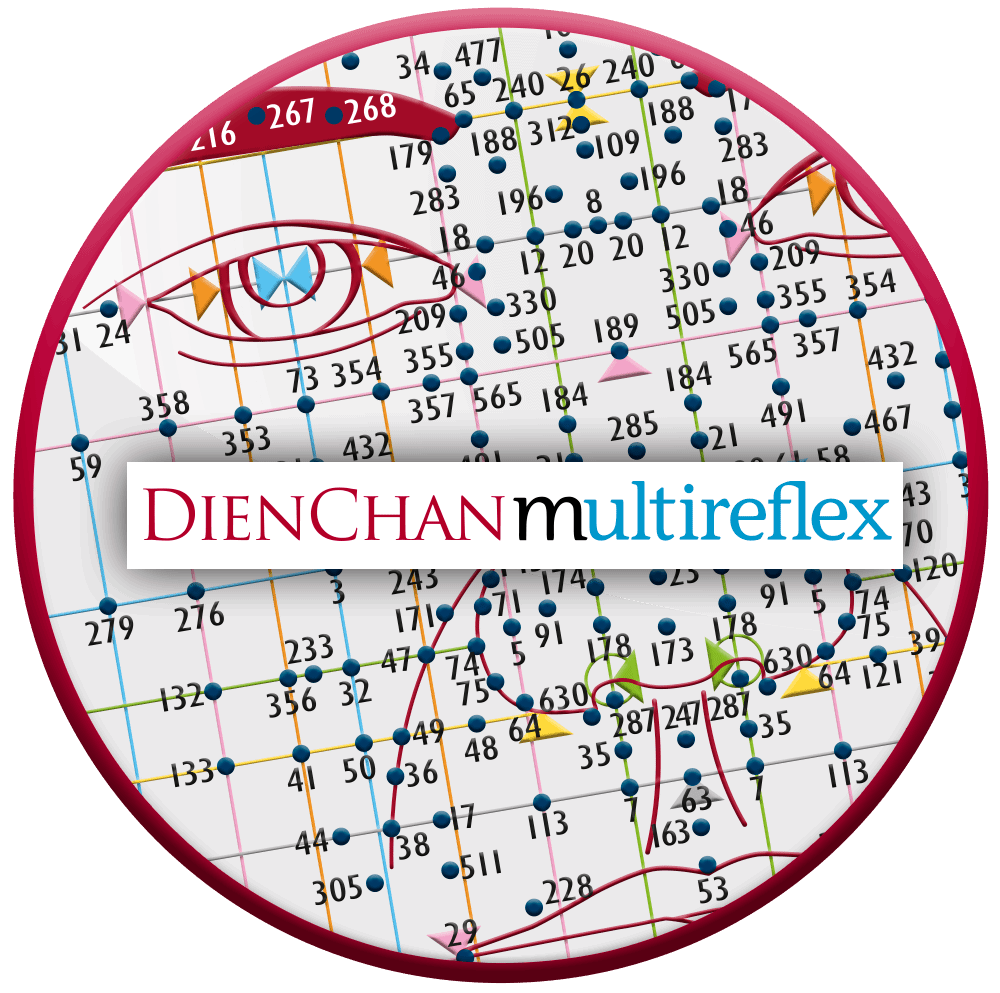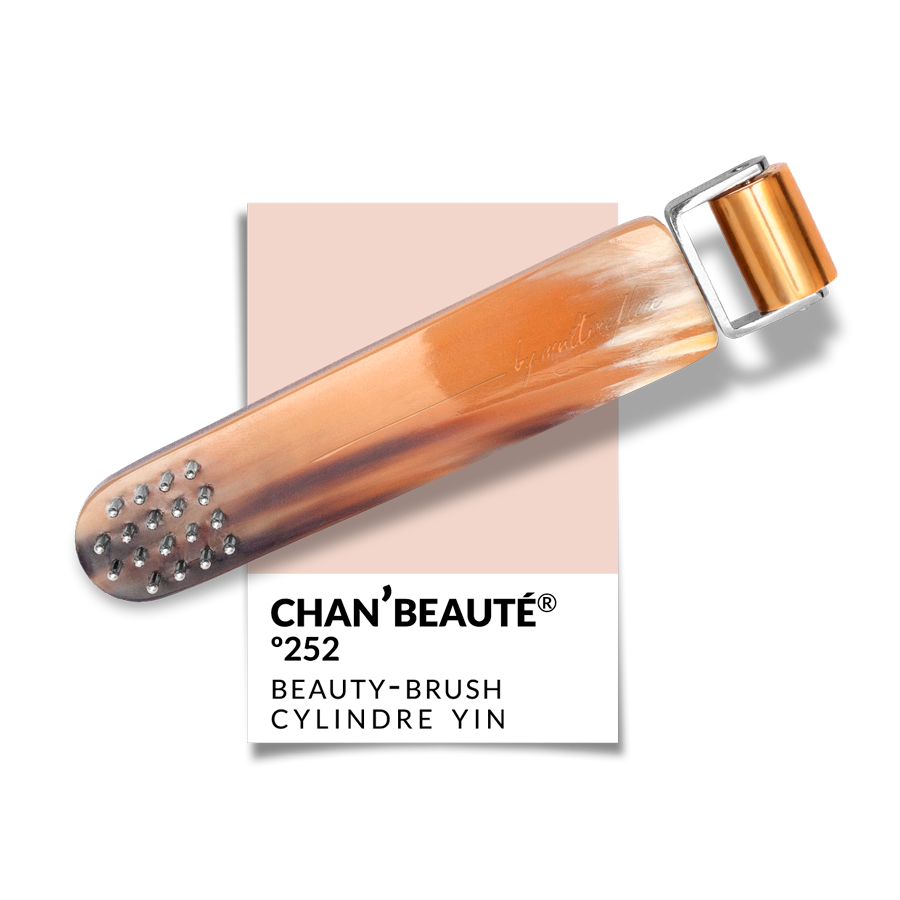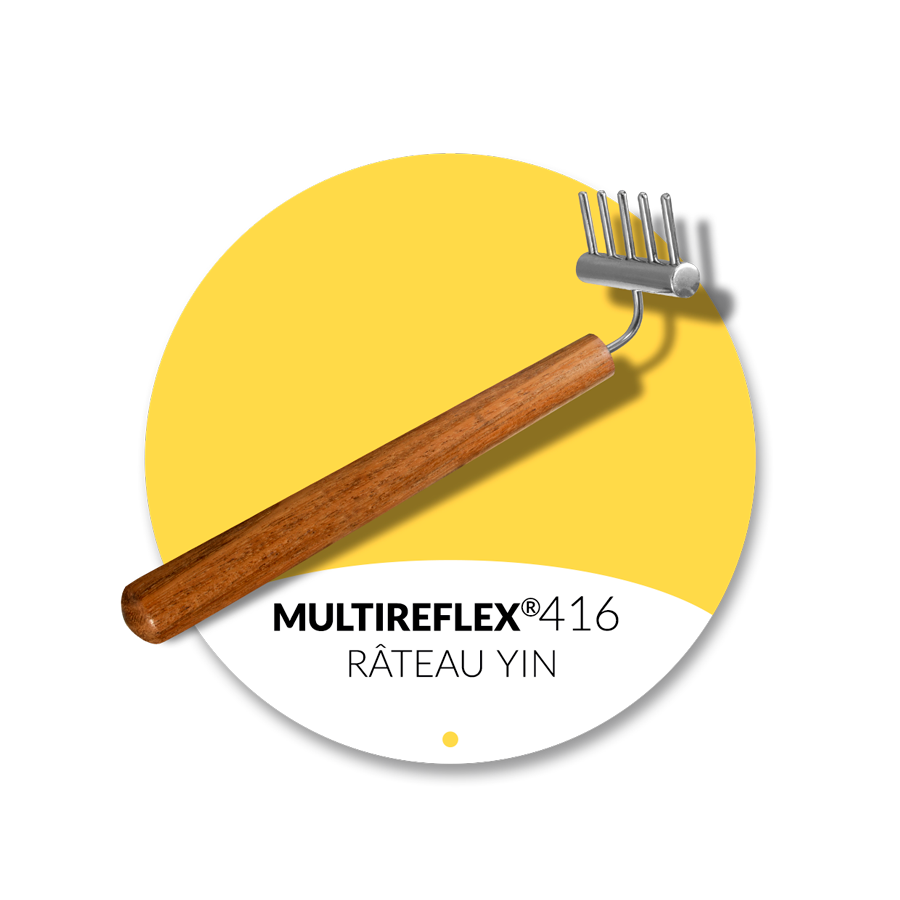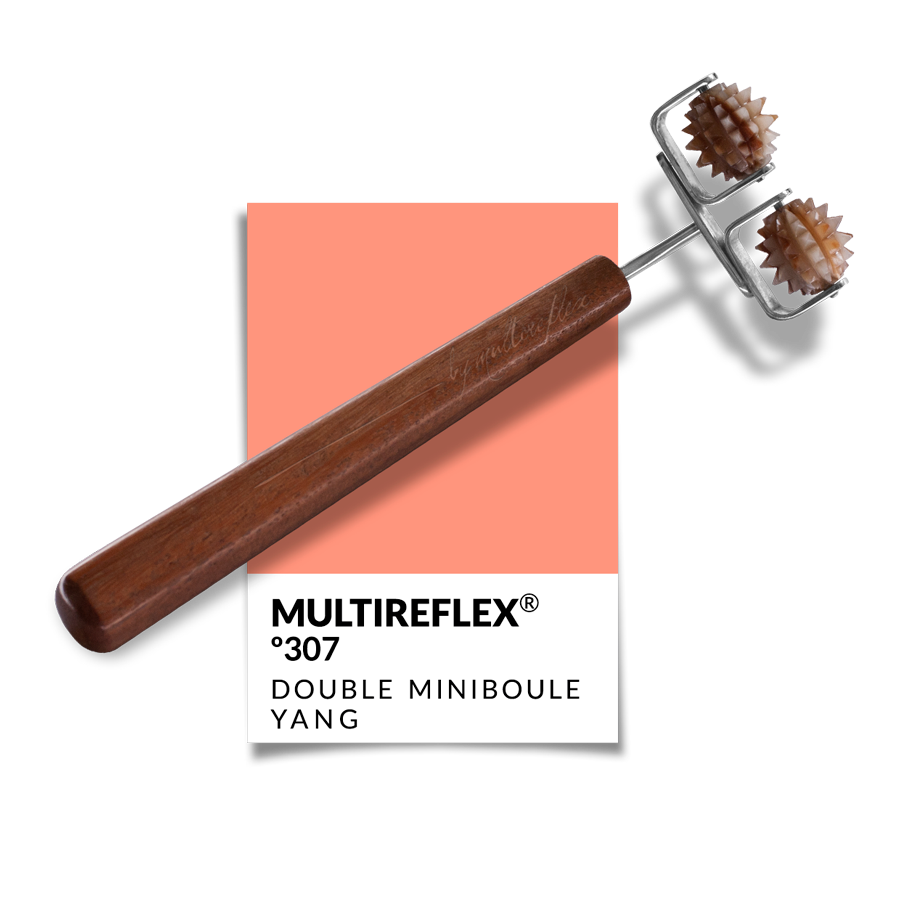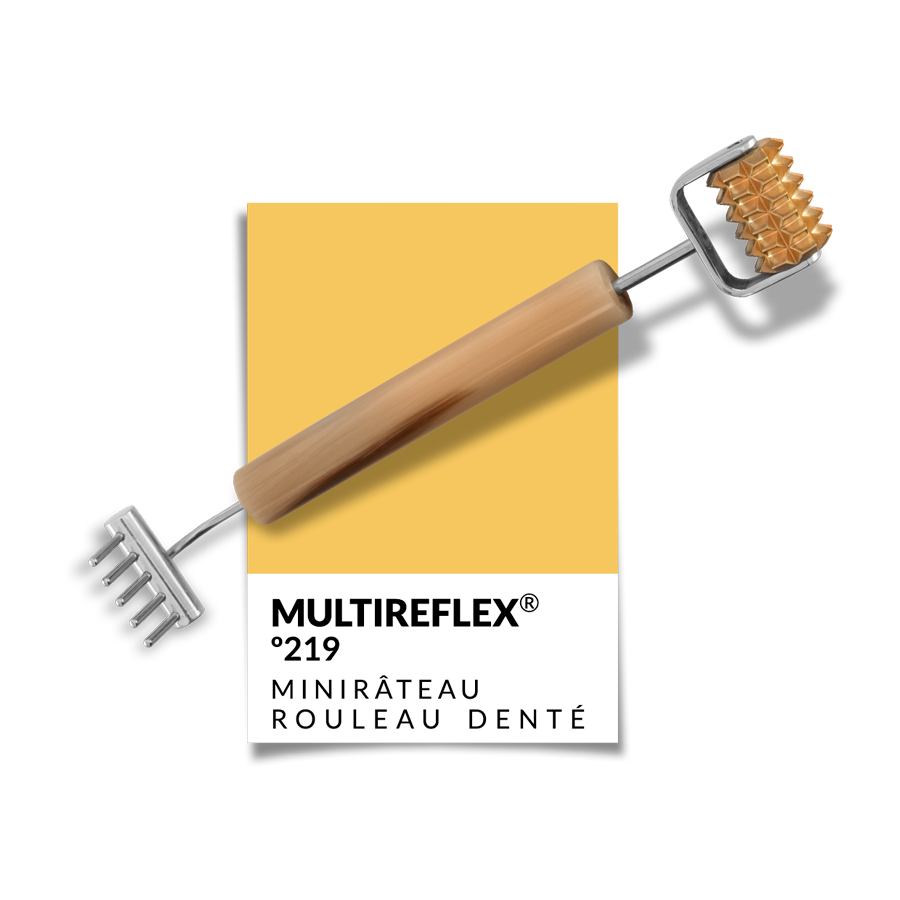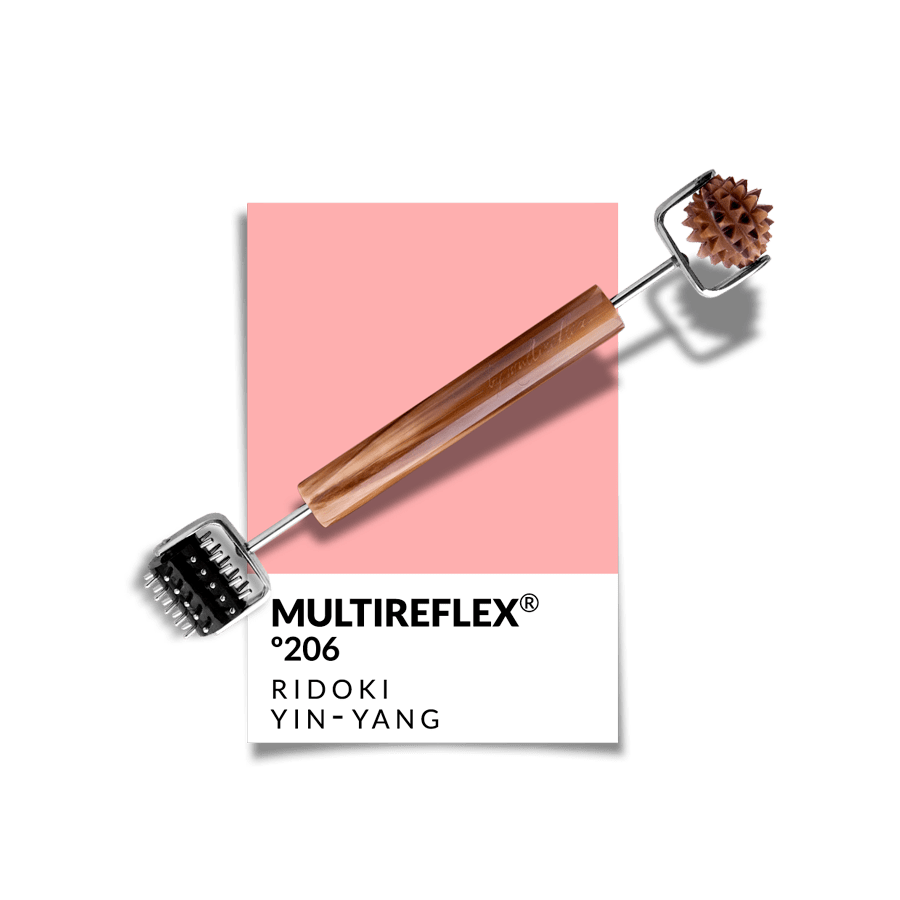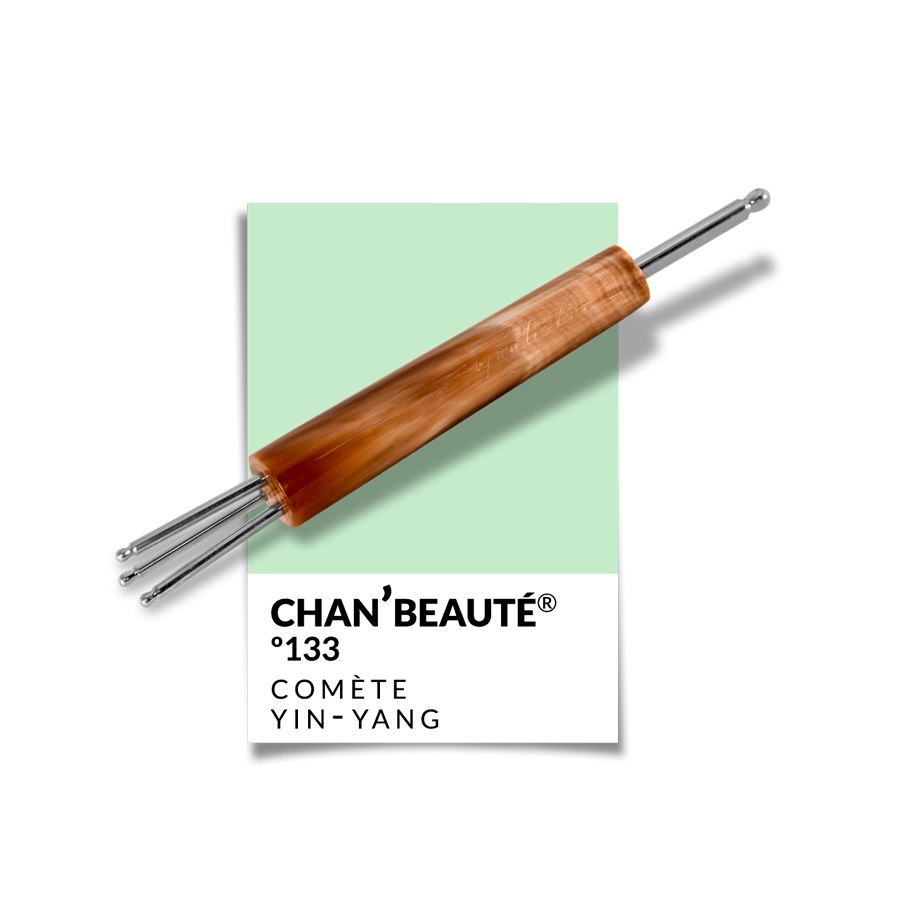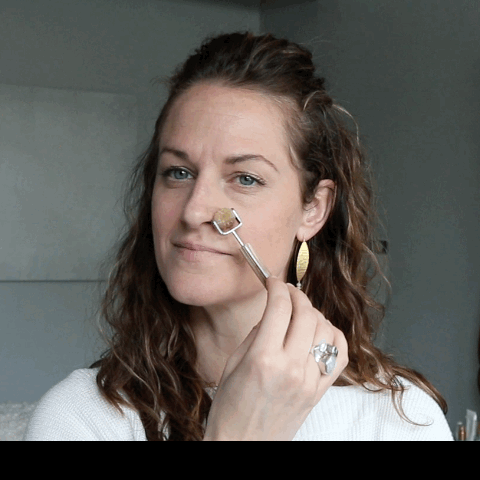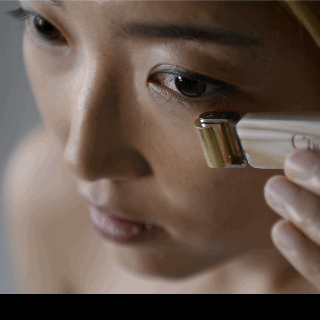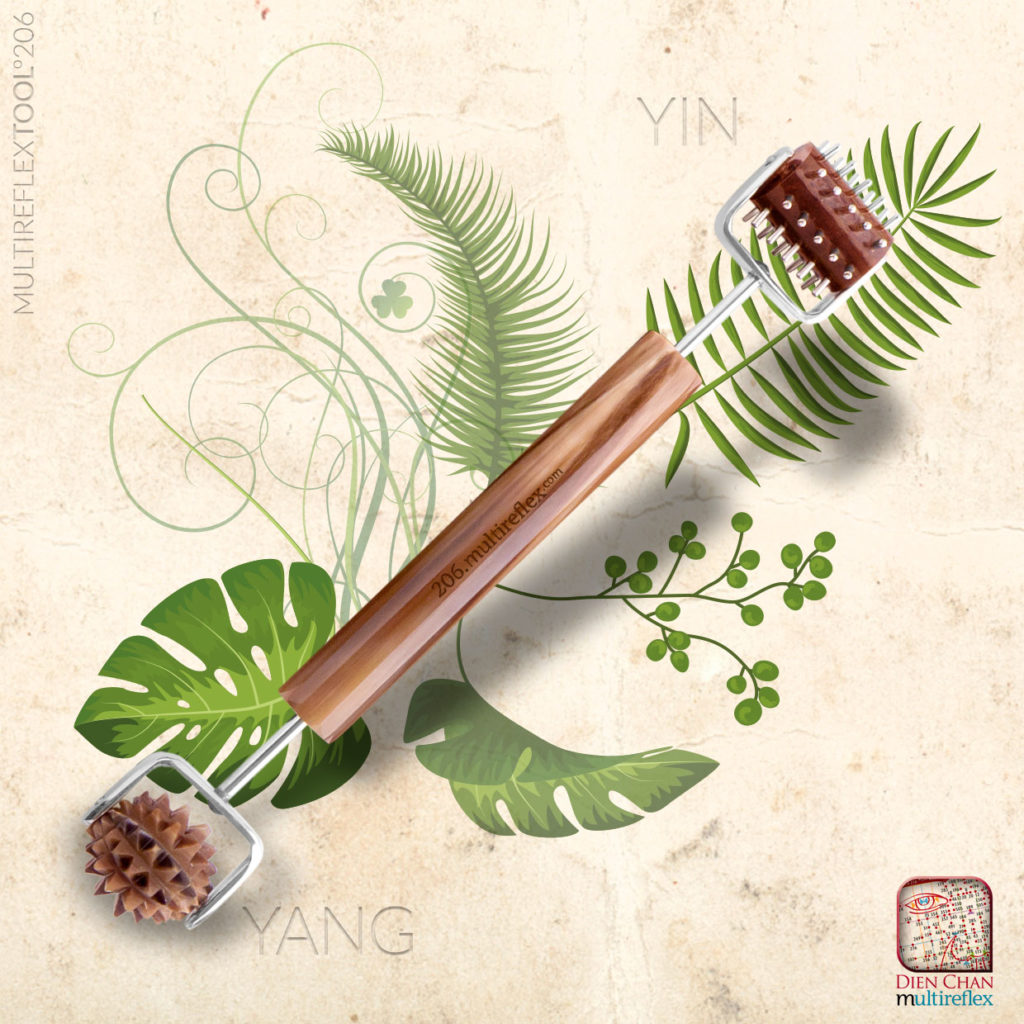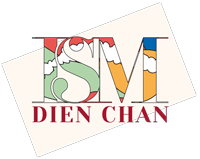Local pain syndrome – Algodystrophy
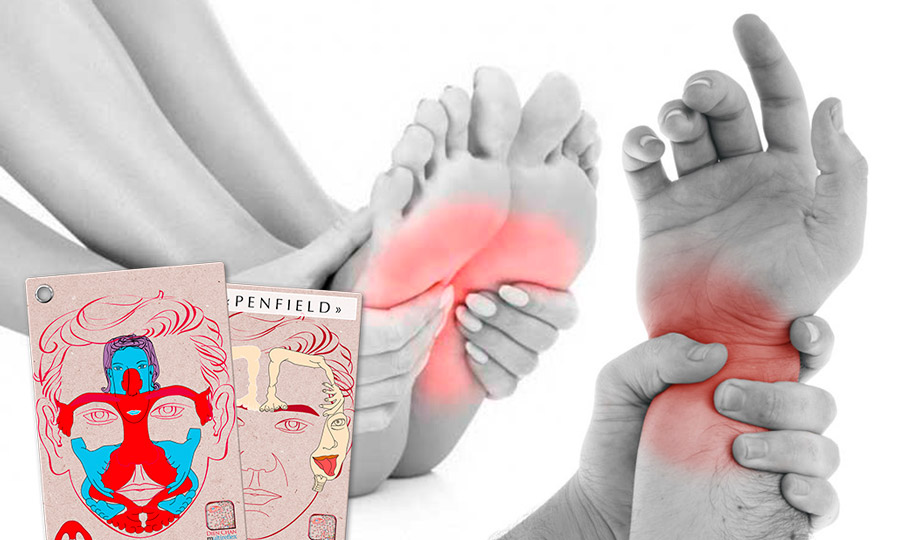
Algodystrophy is often triggered by trauma or surgical intervention. Sometimes, prolonged immobilisation can also be the cause. However, we encounter many high-level athletes suffering from this syndrome, as well as patients who have undergone either overly aggressive or, conversely, too lax physiotherapy.
Western medicine categorises it into three phases (hot, cold, and disabling) and offers diagnoses that may be interesting to interpret through Dien Chan gestures.
However, the suggested solutions remain unclear and often ineffective as they do not consider the individual as a whole. Worse still, these medical solutions are likely to exacerbate the condition by masking the pain with cryotherapy or subcutaneous calcitonin injections. Not to mention those who prescribe anxiolytics to hide the distress.
After having hurt you, they then advise gentle physical activity, which should have been the starting point. This is known as “matar moscas a cañonazo” in Spanish, which translates to “killing flies with a cannon”… Make of that what you will!
Let’s return to our much less invasive practices.
As with fibromyalgia, our initial focus will be on the general state of the consultant. We will therefore be concerned with their level of anxiety, fear, or anguish regarding their condition. While we naturally aim to relieve their pain, if we don’t pay attention to the emotional assessment, we risk not achieving the best results.
It’s common to find that the patient believes their pain will never go away and that it will worsen, ultimately limiting their actions. This is understandable.
It’s essential to discern the blocked emotion to understand the involved organ. We refer to knowledge in traditional Chinese medicine.
1| General state
For this initial step in our Dien Chan treatment plan, we will invite the consultant to engage in dialogue; to share the story of their pain while treating the reflex zones of the organs related to the relevant TCM element.
— The article “Regulate the Emotional Sphere” revisits all these concepts: https://www.dienchan.academy/dienchan-emotional
— The article on “Fibromyalgia” is on the blog and should also inspire you: https://www.dienchan.academy/fibromyalgia
2| Body step
When pain is felt as cold, or when the patient reports that hot water relieves them, we must understand that a yang stimulation is needed.
However, this should always be verified, as it can change from one session to another.
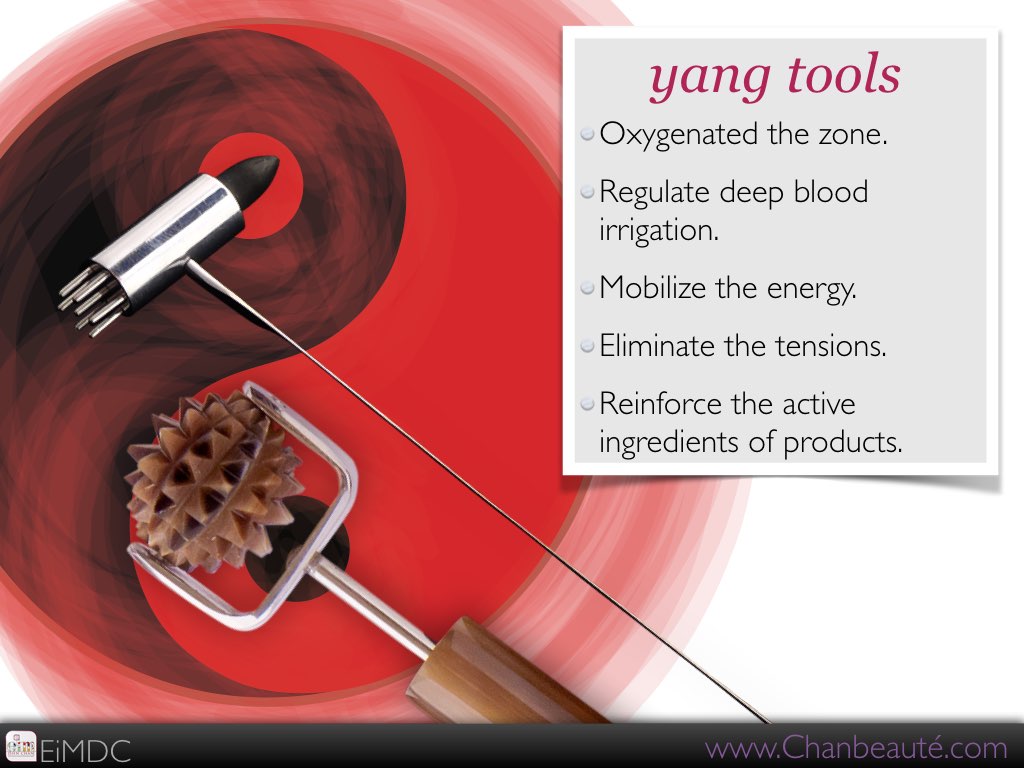
Using a suitable yang multireflex tool for the area being treated, we perform delicate back-and-forth movements for at least 4 minutes. Ask after the first minute if the sensation is pleasant.
— If it’s not the case, test the same area with an opposite-effect tool › yin in this case.
— If the sensation is pleasant, check after a few minutes if the person feels relief.
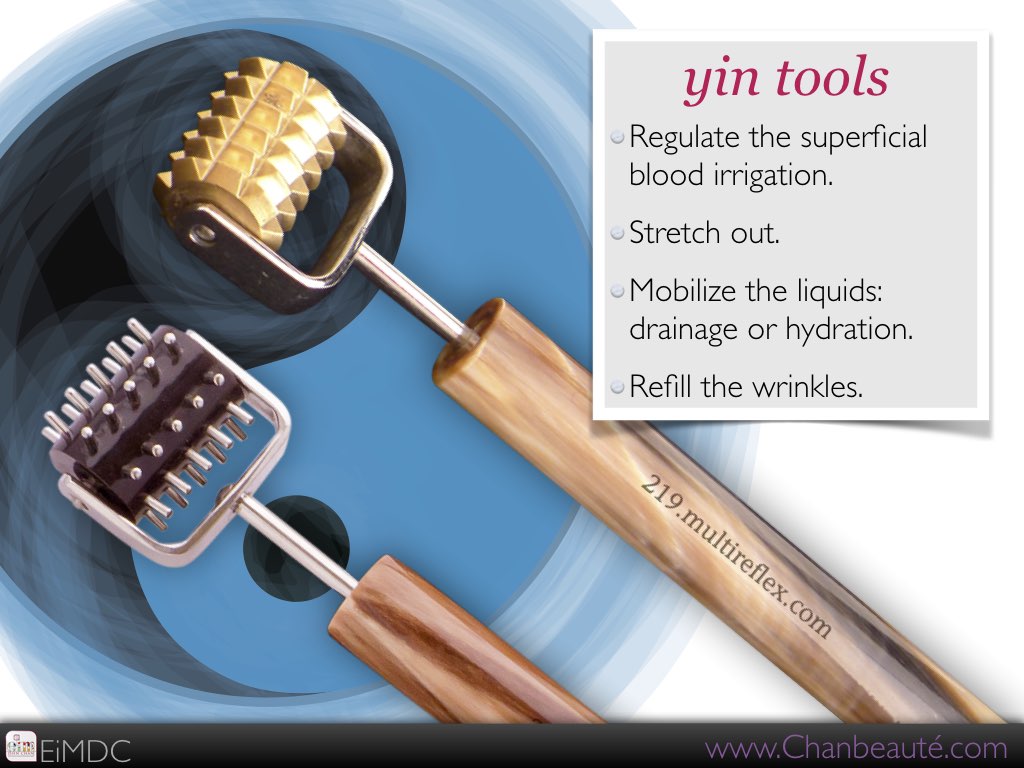
Don’t waste time noting the pain!
Focus solely on improvement.
* To better understand the yin and yang effects of multireflex tools, consult the comprehensive guide: tools.dienchan.pro/en/yin-yang-effects
It’s unnecessary to state that if the pain is in the “hot” phase, we will choose a yin-effect tool. However, it’s still good to specify that only yin multireflex tools allow you to intervene without heating while boosting blood and lymphatic microcirculation.
Their soft metal miniprong rollers, brass cylinders, and stainless steel rakes make your work dispersing, refreshing, and promote internal moisture!
Because no manual massage or use of plastic or electric devices can interact without heating, it’s easier to understand why the medical industry is interested in cryogenics. Not only is it commercially profitable, but it’s also absurd and counterproductive. Excessive cold can end up burning, as excess yin becomes yang.
For a hot pain, we aim to cool down, but we must first encourage vital flows to combat existing blockages. Only cold fosters internal atony.
Sometimes we can’t always intervene on the affected limb. The surface being too sensitive, we must revisit some of the 8 Dien Chan principles.
- Around the pain, above/below,
- Horizontal or vertical symmetry,
- And of course, shape similarity.
When dealing with a foot, we’ll think of the other foot or hands, and so on.
For this type of treatment, we usually choose either the Double mini yang ball nº307 or the Double mini yin roller nº308, which are the two most suitable tools for body extremities.
This second step is crucial and helps us reveal the yin or yang state of the syndrome. It also helps us establish connections using the shape similarity principle.
3| Facial step
During the second local step, we will choose a tool with the same effect. We also note the correspondences obtained through the principles (those that yielded good results) because we will transpose them onto our reflex diagrams.
If a yang effect is appropriate, we opt for a multireflex tool equipped with a small spike ball.
We prefer natural horn for its biological antiseptic properties which—unlike plastic—is respectful of the skin’s microbiota.
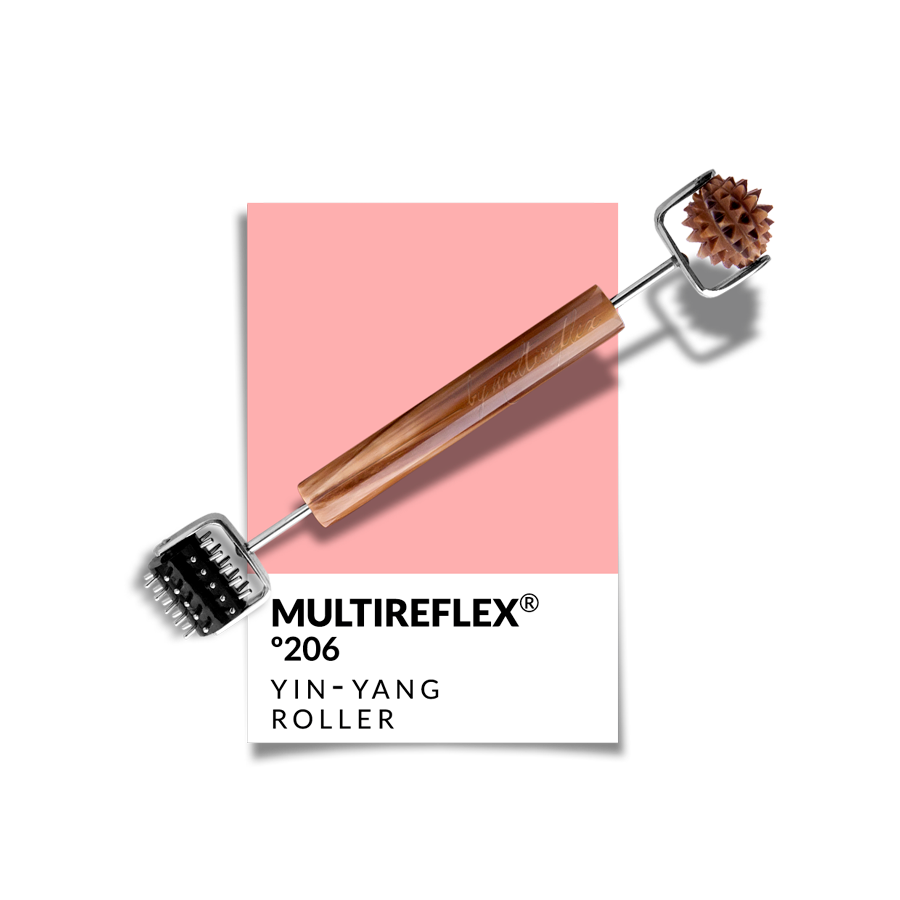
The Yin-yang roller nº206 or the Spike ball detector nº103 are perfectly suited for the facial regions to work on.
Choose an initial Dien Chan reflex diagram to stimulate the reflex zone corresponding to the concerned extremity.
For instance, if we select the extremities reflex diagram on the face, we notice that the red man’s hands lie on the temples; his feet project onto the chin.
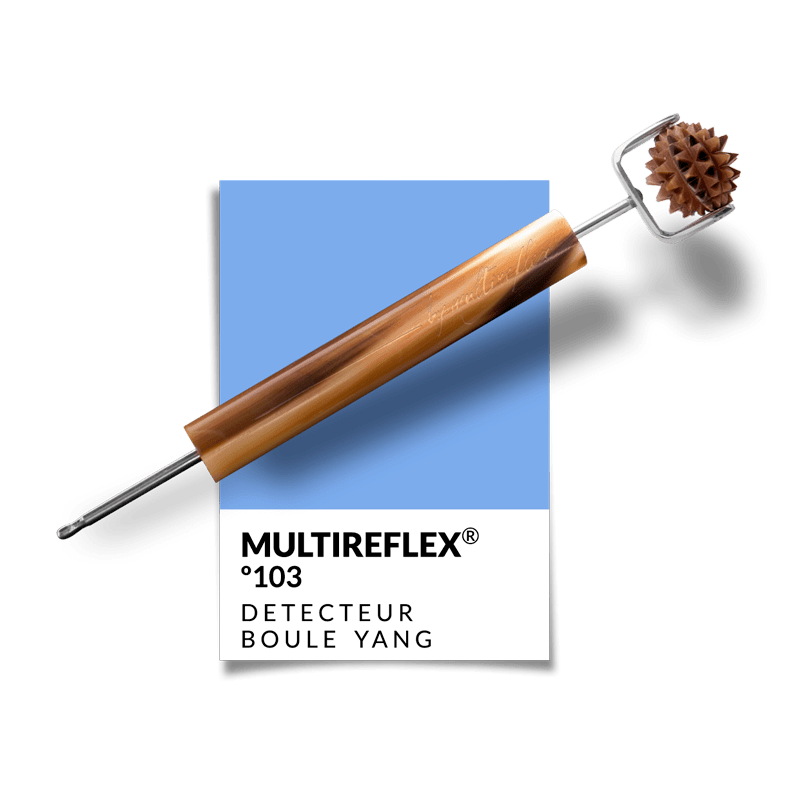
We will then perform around fifty back-and-forth movements on the area with the tool.
However, we won’t forget to similarly treat the reflex zones related to the surfaces we’ve worked on following the Dien Chan principles.
In other words, if we’ve managed to relieve localized pain in one hand by rolling over the other hand, we will apply this symmetry principle to the other temple. But we will also consider the feet since, by shape similarity, we might achieve good results.
This prompts us to work on the chin since this same diagram indicates that on this part of the face, the feet are located.
4| Consolidate the treatment.
Those who have studied Dien Chan can enhance their treatment by supplementing it with a bqc·points formula.
We can’t apply just one “magic” formula. We need to select the bqc·points that have an effect on the implicated extremity and enrich it with bqc·points that promote blood circulation.
It will also be very beneficial to check which energy meridian passes through the painful area to ensure we don’t forget to integrate its points·bqc into our formula.
To illustrate this reasoning and help you build a personalized treatment, here’s a video showing you how to use the Faceasit❜clinic app to combine the various ideas deduced during the session.
▸ Subscribe to the channel www.DienChan.tv, and we look forward to your comments, to which we will gladly respond.
◾︎ The app is called Faceasit, and its three versions are available on the AppStore for your iPad directly via this link: 3.Faceasit.com
☰ To learn more about this incredible support app and understand how it has become an endless source of inspiration for all students of the International School of Multireflexology – Dien Chan (ISMDC): https://dienchan.Faceasit.com/en
5| Our “prescription”
As explained in the video, you can share a treatment diagram with your patient to indicate the reflex zones they should work on at home.
By recommending one or two multireflex tools, the individual continues their foundational treatment between sessions.
They will return with energized flow, allowing you to deepen your treatment and achieve more precision to reveal the origin of the issue.
Instead of the point detector, it’s preferable to recommend a multireflex tool that has proven its efficacy during the session.
The kit❜reflex for self-care
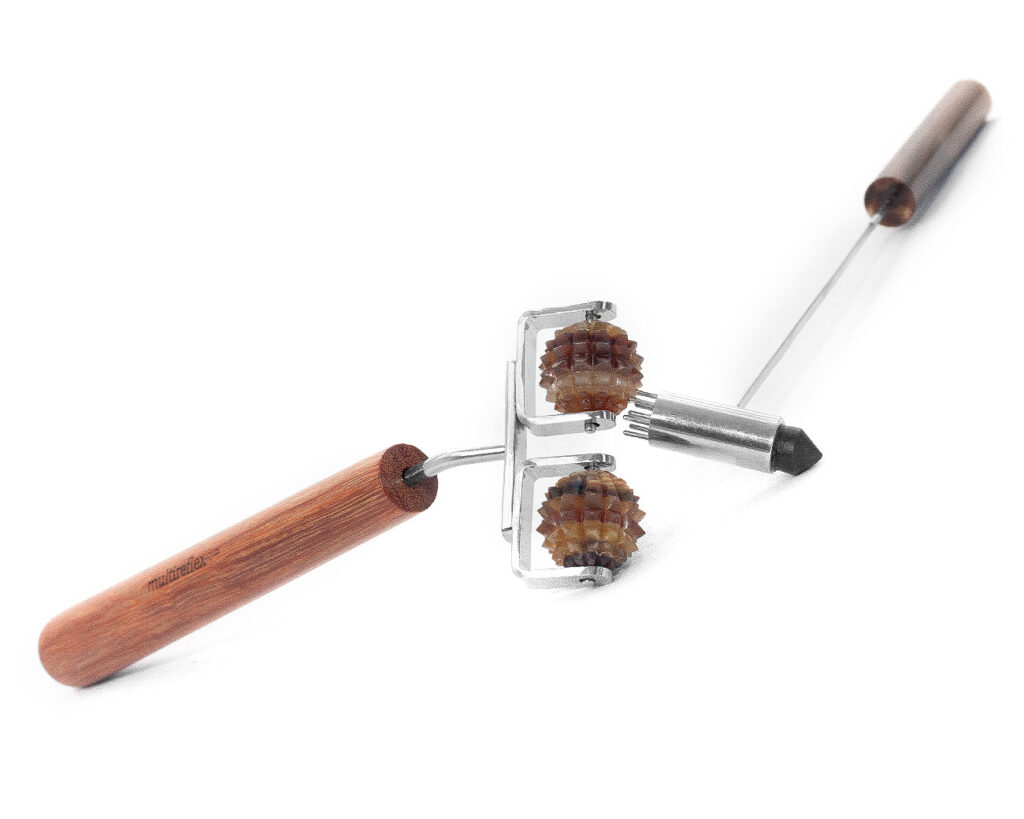
It's highly recommended to use only genuine multireflex tools to ensure effective and gentle skincare. The instruments from Dien Chan available at DienShop.com are made of natural horn, mimosa wood, and high-quality steels. This allows us to benefit from the natural antiseptic properties of genuine horn which, unlike polluting plastic, does not disrupt the skin's microbiota.
The kit❜pro for practitioner
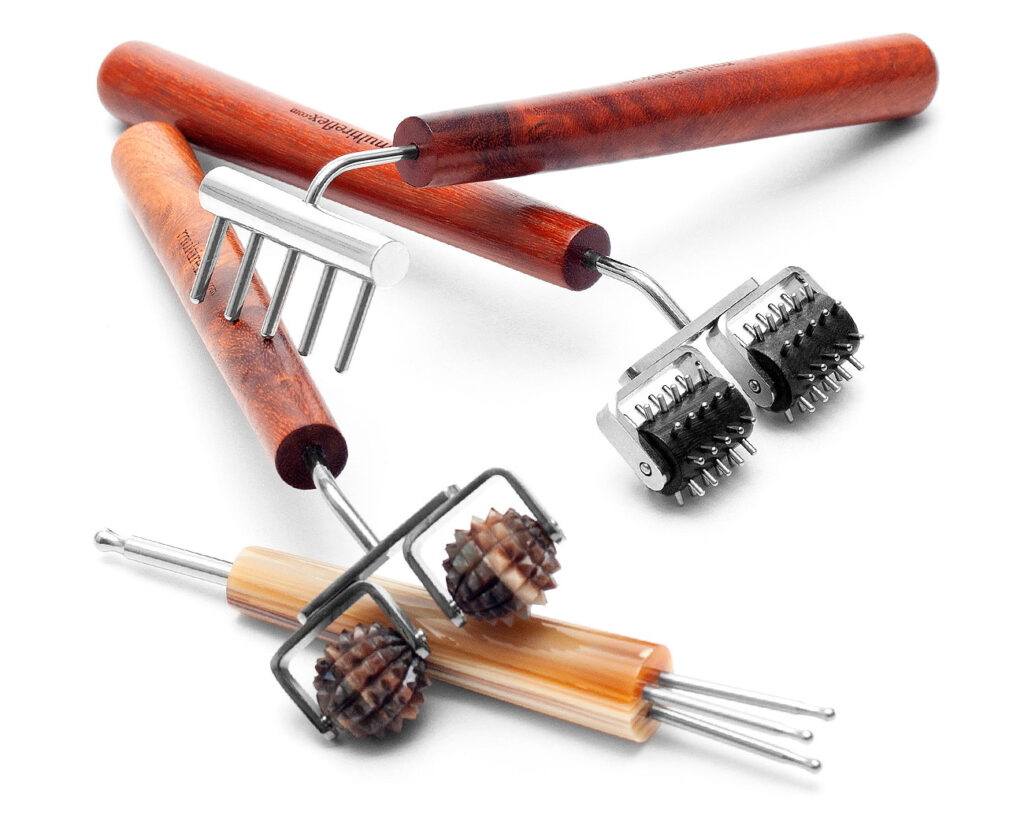
› If you don’t have stock, you might be interested in the affiliate program (+info at tools.dienchan.pro).
› You can also direct the person to this article to purchase the kit offered at the bottom of the page or to the catalogue kits.DienShop.com.
› To learn more about the effects of genuine multireflex tools and how to care for them: https://tools.dienchan.pro
◾︎ Kits accompanied by advice are also available at kits.DienShop.com.
◾︎ Training sessions and workshops by Dien Chan experts: training.Multireflexology.com
Fibromyalgia and Dien Chan
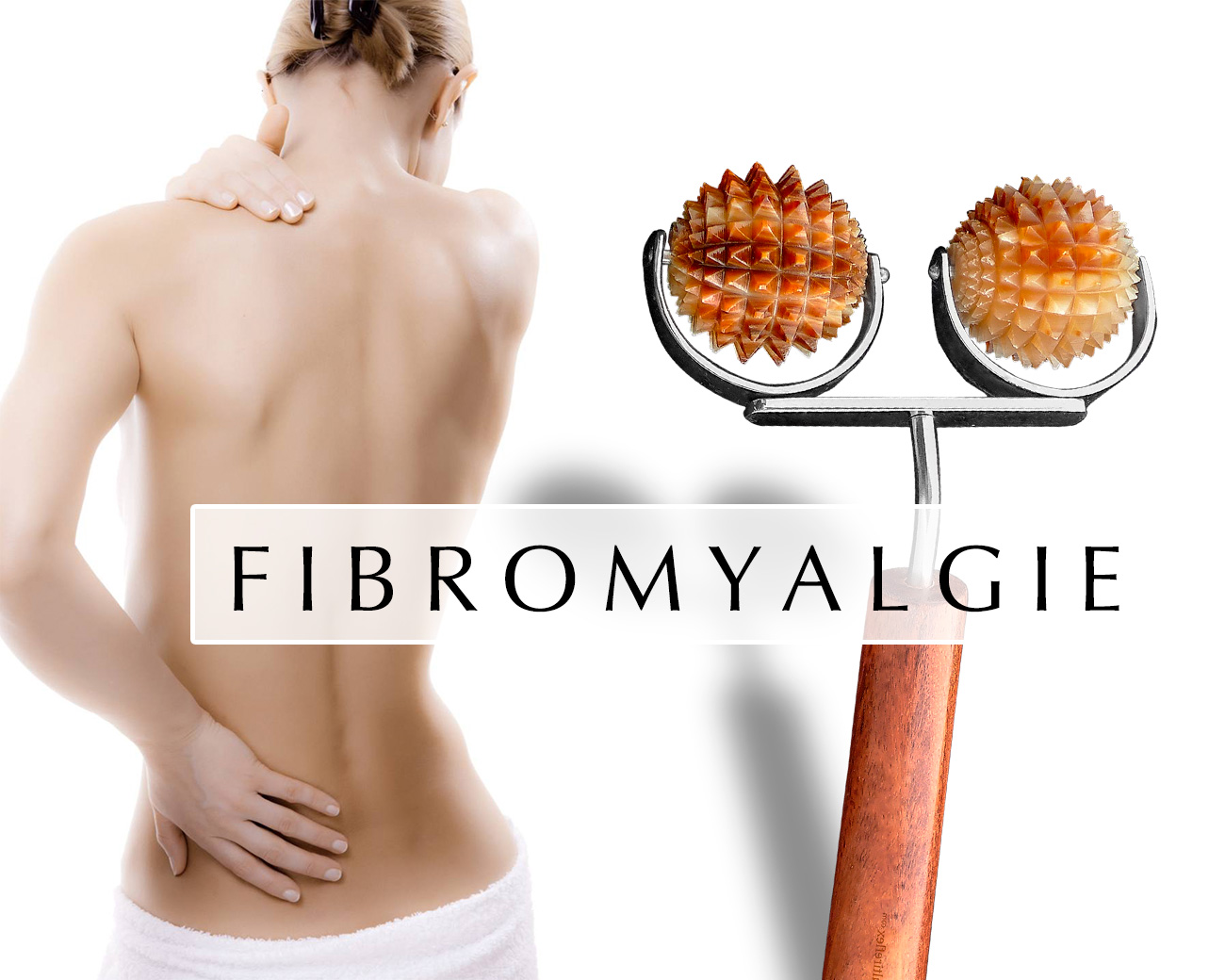
Fibromyalgia is considered a chronic condition that induces pain throughout the body and intense exhaustion. Although deep fatigue and headaches may also occur, the vast majority of them are mainly localized on soft tissues. We face widespread musculoskeletal suffering and sometimes on specific areas or joints.
It is often reported to us that the first symptoms appear after a traumatic incident that may have caused severe psychological stress. But other patients describe pains that accumulate gradually over time without any particular triggering event.
Before embarking on a heavy and medicated process that will congest our organic filters anyway (liver, kidneys, etc.), it is really worth relieving ourselves daily with natural and non-invasive interventions.
Throughout these years of practicing Dien Chan, we have treated many people suffering from fibromyalgia. Our trainer Javier Felipe, who practices in Navarre, has even participated a lot and helped the association of patients suffering from this condition by achieving surprising effects.
And as we always do at the International School of Multireflexology – Dien Chan (ISMDC), he taught the members of the collective how to continue the care themselves to offer unparalleled long-term support.
Most people suffering from fibromyalgia are women, and we find that in the majority of cases, we achieve better results by treating in a yang manner. So we face yin pains; that is to say: cold, diffuse, heavy, deep, dull…
We will then construct a yang treatment
one that warms, energizes, concentrates, lightens, invigorates…
This immediately prompts us to choose multireflex tools with yang effects equipped with spike balls and to organize our bqc·points formulas from the bottom of the face upwards.
The treatment plan
During each session, we address the person by first establishing a list of present pains. We must ask them to list the five most bothersome ones, starting with the most intense.
This type of diffuse pain tends to shift, so it is essential to classify them in ascending order of suffering; what hurts the most at the moment goes first.
It is interesting to note this list because we will consult it throughout the treatment and find that it is not fixed. But above all, it is important to remind our dear therapists to always address the person’s general state first. Since we are dealing with individuals who are rather fatigued by the tension induced by their pains, it is highly recommended to start with the anti-stress protocol.
Very effective, it allows you to quickly relax the nervous system to prepare the body for the treatment.
General state
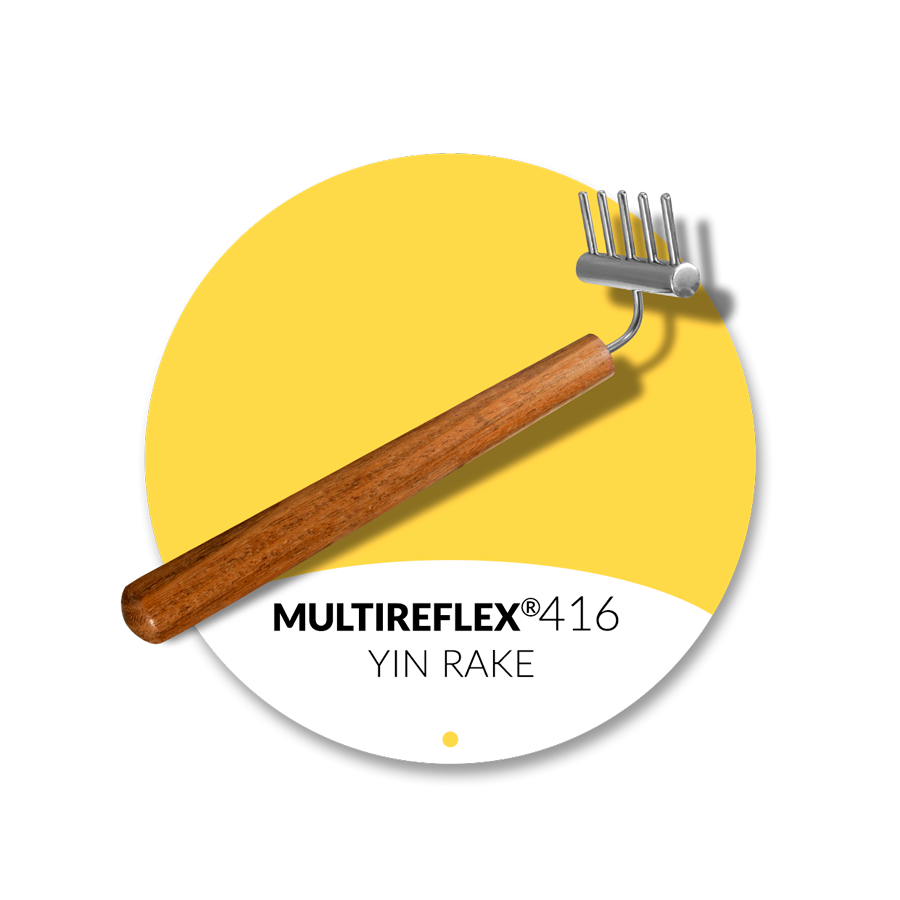
1| Begin by calming the person if you feel they are in a stressful situation.
— Use the Yin rake nº416 to gently rake the scalp from the forehead to the nape for at least 4 minutes.
— If you are unfamiliar with the Dien Chan anti-stress protocol, here is its practical sheet: https://tools.dienchan.pro
Body step
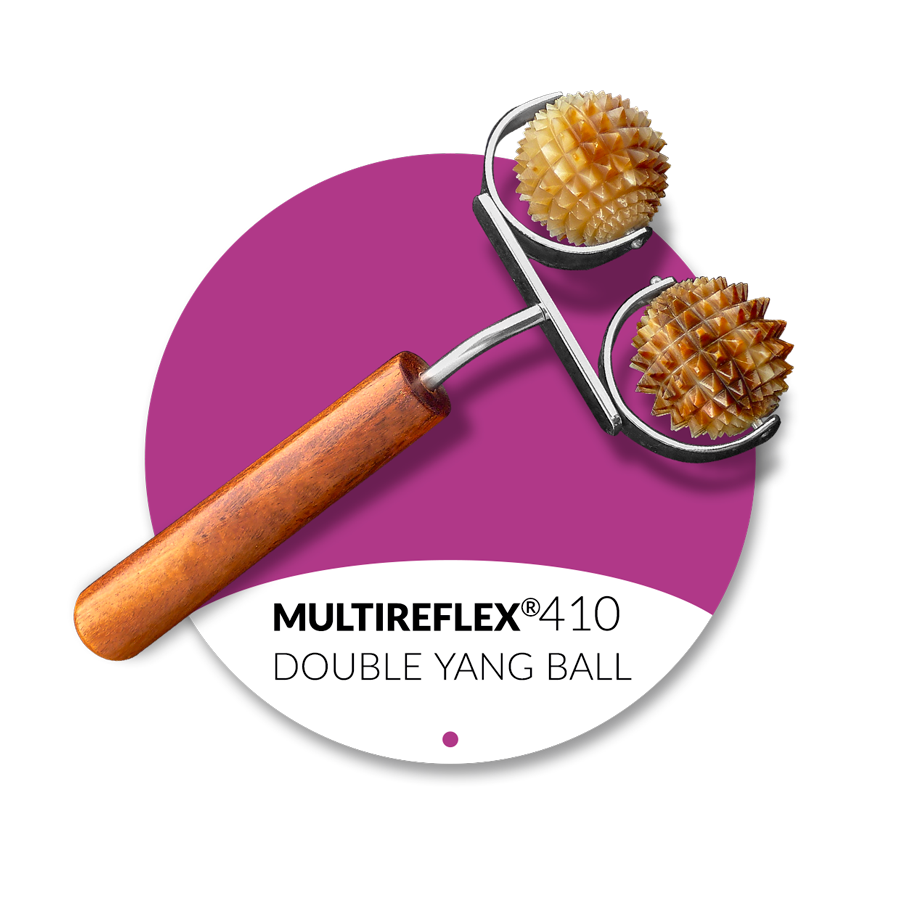
2| The local treatment involves treating the affected area with a body tool.
— For large surfaces, prefer the Double yang ball nº410. For medium-sized body or facial areas, use the Double mini yang ball nº307.
— We then begin the treatment by “rolling” locally for at least 4 minutes. The motion should be pleasant and not damage the skin. If you feel that the person is very yin, tired, or experiencing severe internal cold, assist the movements of the tool by following them with a hairdryer. The warm air that accompanies your action penetrates deeply.
Reflex step
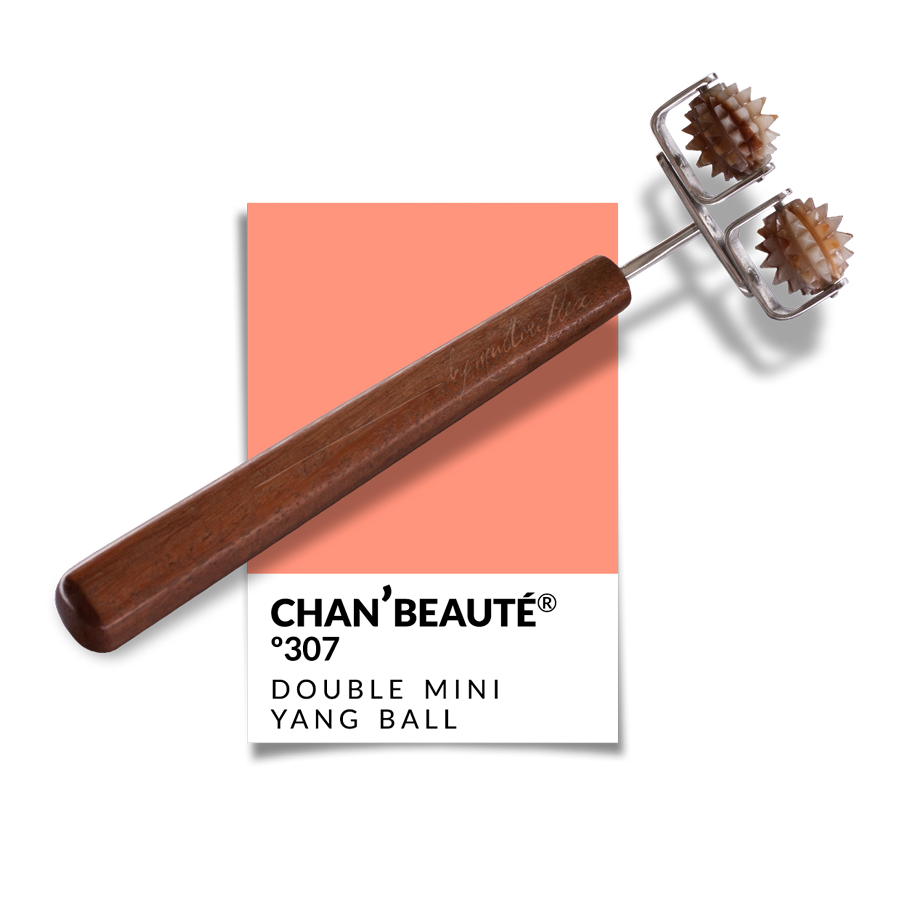
3| sing the reflex diagrams of Dien Chan, locate the reflex zones of the previously stimulated body part.
With an elegant gesture, make a hundred back-and-forth movements on each region with the small spike ball of the Yin-yang roller nº206.
— If the surface is larger, choose the Double mini yang ball nº307 to speed up a little.
Dialogue
4| In Dien Chan, we don’t treat for long without checking on the progress of the treatment. We must maintain constant communication with our patient.
— Already after the body step, ask if the pain has evolved. Check if it is still present, reduced, or worse.
— If the result is not satisfactory, check that your movements are sufficiently intense or that you have understood the description given.
— If, on the contrary, your treatment seems to be on the right track, have the list of pains redone and compare it to the first one.
It will be very interesting to notice the evolution of the enumeration. Don’t be surprised if the pain that was in second position in the first list has disappeared or receded.
You will be pleasantly surprised to see that some pains have lost their importance. This is a sign that everything is connected and that we are facing blockages of energy flows.
Consider then the first pain from the new list and resume your treatment plan at the second step: the local treatment.
Consolidation of the treatment
5| After treating two or three pains — and not wanting to prolong the session to avoid an adverse effect — we consolidate the treatment using a formula designed to rebalance the internal organs.
— With your Little-hammer yin-yang nº128 (rubber side = yang), stimulate each bqc·point about fifty times.
127· 87· 17· 63· 50· 41· 37· 1· 103· 300+
Enhance your formula by adding 2 or 3 bqc·points concerning the parts of the body you have treated. It’s as simple as using the Faceasit app, which will quickly provide you with all the assigned points for each anatomy.
✔︎ Give a yang sense to your formula by respecting the order of the bqc·points; from the chin to the forehead. The ‘+’ sign attached to the bqc·point name means “the one on the right” = yang.
Do not hesitate to perform Reflexdrainage to help the body eliminate mobilized toxins.
Prescription
6| We must assign “homework” to do at home. Assist your patient in choosing the body multireflex tool that they will purchase from you. Teach them how to self-stimulate the painful parts of their body whenever they feel the need.
This is the best way to anchor your treatment over time. It will allow you to make faster progress at the next session. Our fibromyalgia care recipients almost always prefer the Double yang ball nº410. Most of the pains are bodily, muscular, and skeletal. With this multireflex tool, they have the opportunity to roll their legs, arms, and even shoulders.
For the back, they will need to find a generous soul, as the ideal is to lie on the stomach to receive the most comfortable massage.
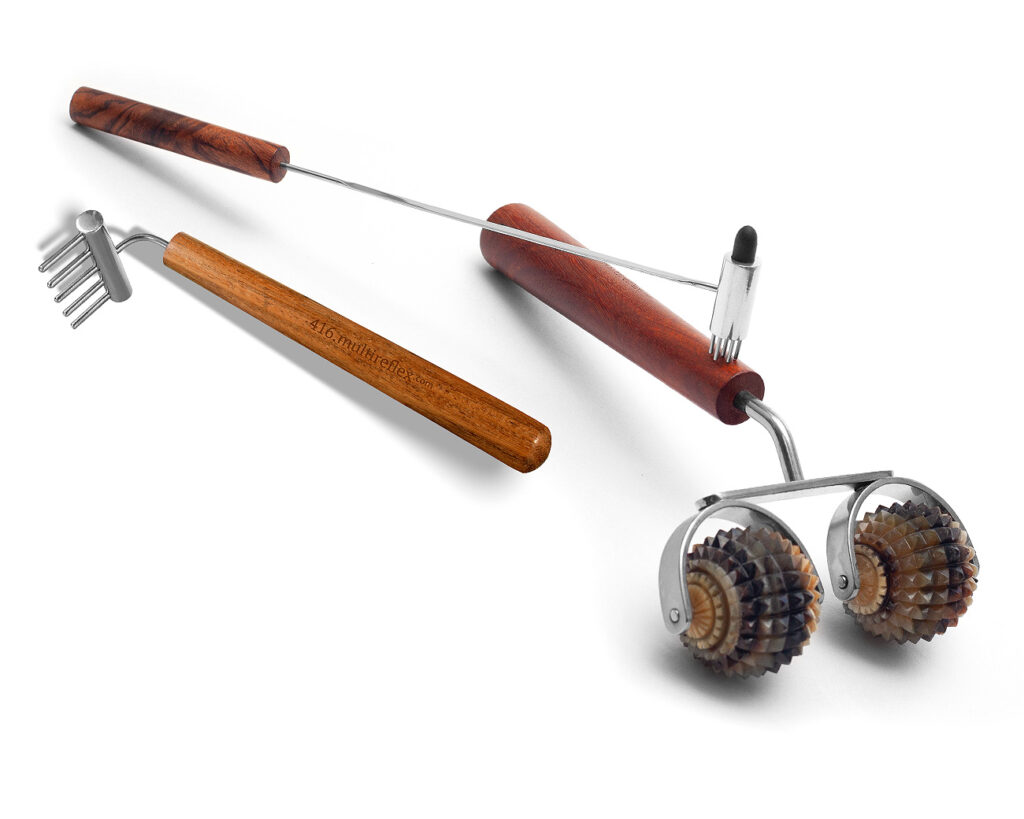
Here are some useful links to complement this treatment proposal:
+info on yin and yang in Dien Chan tools.DienChan.pro
+info on the Reflexdrainage www.DienChan.zone
+info on each of the mentioned tools www.DienShop.com and also kits combining several instruments kits.DienShop.com
+info on reflex diagrams www.DienChan.ovh
These resources will complement the treatment proposal and provide additional support for both therapists and patients dealing with fibromyalgia.
Holistic approach to glaucoma
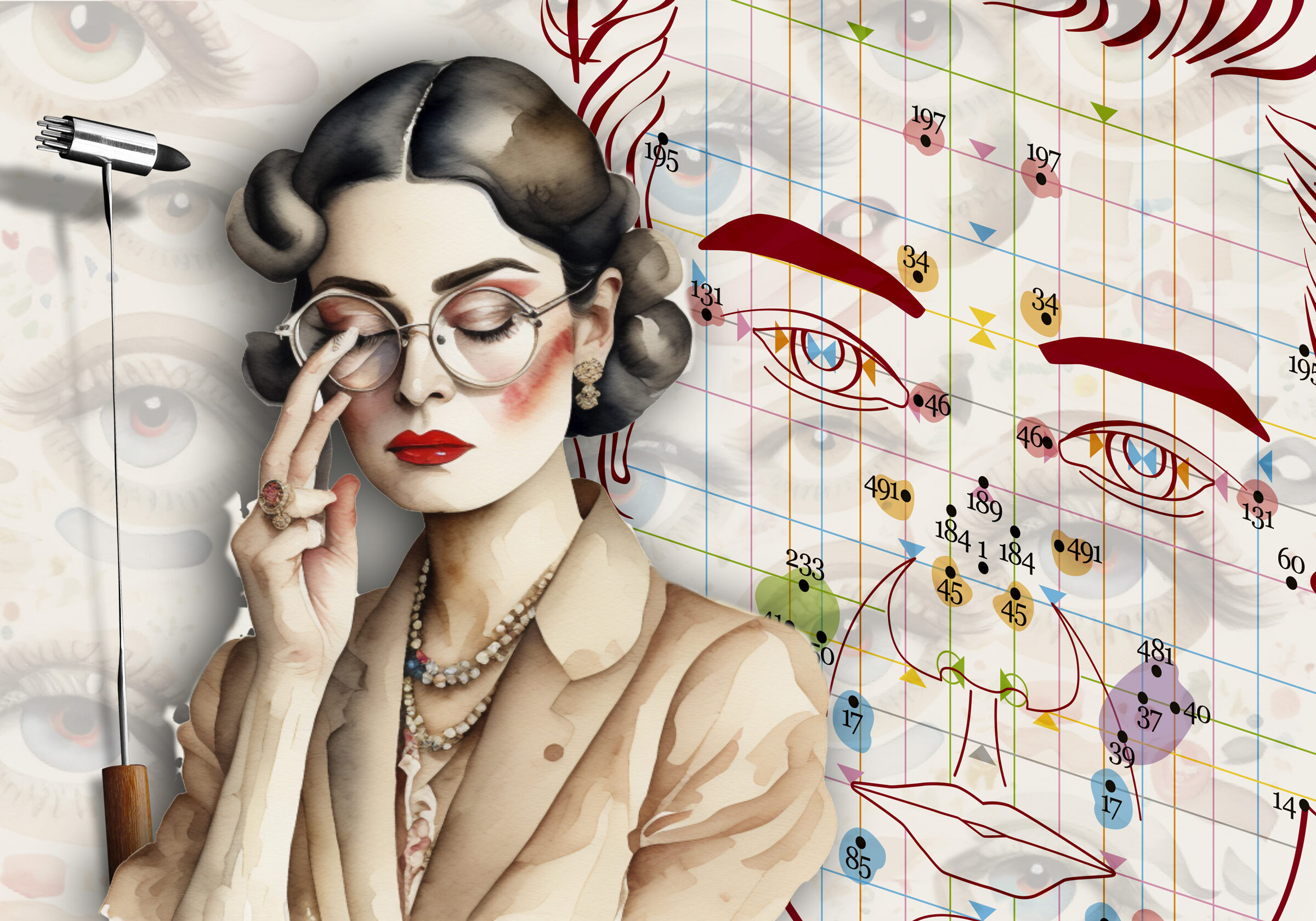
Glaucome is a progressive eye condition that can damage the optic nerve, often due to high intraocular pressure. The optic nerve is essential for transmitting visual information from the eyeball to the brain. When glaucoma is untreated, it can lead to irreversible vision loss.
Unfortunately, the early stages of glaucoma are often asymptomatic and do not result in significant changes in vision. It is sometimes called the “silent thief of sight,” and as the disease progresses, clues such as blurry vision, halos around lights, headaches, and eye pain may occur. Risk factors for glaucoma development include heredity, advanced age, high intraocular pressure, certain medical conditions such as diabetes and hypertension.
Western medicine offers various treatments for glaucoma, some of which inspire us in the development of our Dien Chan protocol. For example, eye drops and orally taken medications are commonly prescribed to reduce intraocular pressure. These treatments work by promoting drainage of fluid inside the eye or by decreasing its production. Furthermore, surgery is often recommended to improve drainage of intraocular fluid. In the most severe cases of glaucoma, a device may even be implanted to limit pressure in the eye.
We consider these Western approaches as sources of inspiration to enhance our Dien Chan practice. Thus, we aim to integrate actions that promote drainage and reduce eye tension into our care protocol.
Traditional Chinese Medicine (TCM) also offers us enriching perspectives to complement the construction of our constellation, from which we will develop a formula tailored to the consulting individual.
According to TCM, the energy of the Wood element plays a crucial role in eye disorders. This leads us to include in our management the treatment of the liver and gallbladder. These organs are considered closely related to eye health.
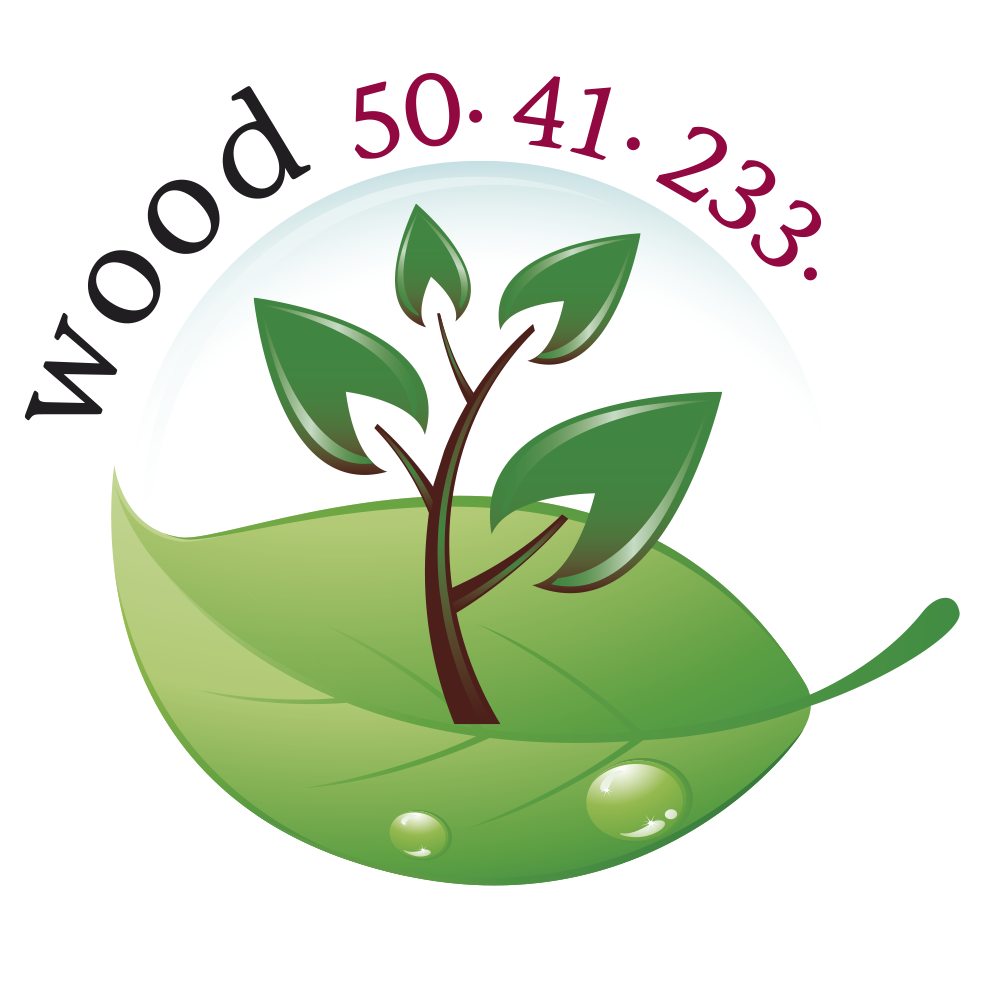
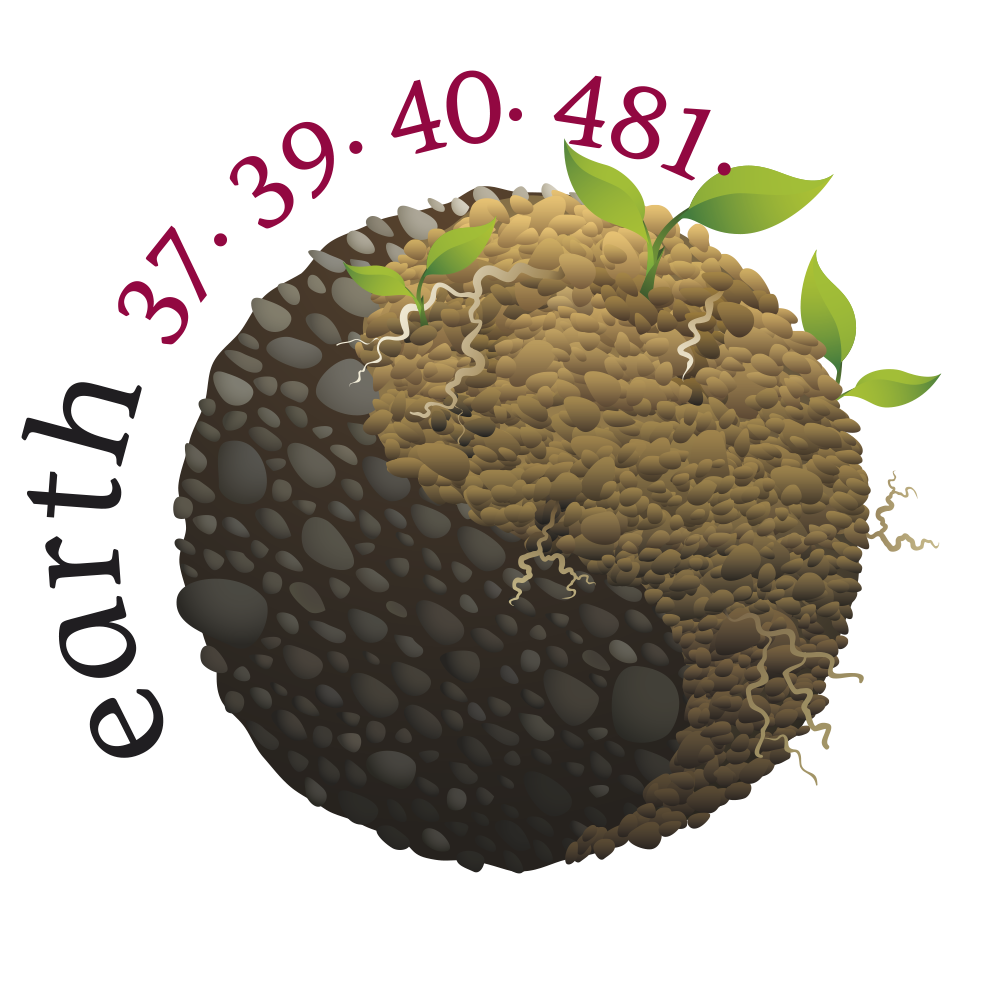
In parallel with the teachings of Western medicine, we must regularly promote drainage. TCM addresses this action by treating the Earth element, which acts as our “internal sponge.” Thus, we must stimulate the stomach and spleen in a yang manner to encourage effective drainage of fluids in the body.
To achieve a highly yang effect —and if we master this technique— moxibustion would be a perfectly suitable option. It can be applied not only on the abdomen, targeting the spleen and stomach but also on facial reflex zones following the reflex diagram of internal organs.
Next, to facilitate blood circulation and reduce eye pressure, it would be beneficial to stimulate the energy of the kidneys.
Finally, to encourage drainage at the end of treatment, we could work in a yin manner on the urinary system.
By combining the principles of Western medicine and TCM, we are able to create a holistic protocol that addresses both the physiological and energetic aspects of glaucoma, thus allowing for a comprehensive and personalized approach.
Dien Chan, on the other hand, offers a multitude of bqc·points directly related to the eyes. The expertise of Professor Bùi Quôc Châu, forged after the Vietnam War, was nourished by the observation of numerous patients whose vision had significantly suffered during the conflict.
Some reflex zones are evident through reflex diagrams, such as Madame Yin’s eyes (197· on the blue lady) or the Penfield eye (16· at the junction of the ear with the temple).
However, Professor Châu had observed the incredible effects of certain bqc·points long before the discovery of reflex diagrams. For example, he called bqc·point 6· “the pearl” and explained to me that practically all bqc·points located vertically above the pupil have an impact on the eyes. Indeed, bqc·point 50· (the liver point) is aligned vertically with the center of the eye.

Fascinating, isn’t it?
Thus, we will orchestrate our constellation by gathering all this information. Then, we can test them on our client and only retain the most sensitive points to establish the final formula.
This approach will allow us to individualize the care according to the specific needs of each soul, while leveraging the accumulated expertise in Dien Chan.
1| General condition
It goes without saying that before treating glaucoma, we must take into account the general condition of the individual, particularly regarding stress management. Even if your client does not feel obvious stress, using the Yin rake nº416 on the scalp can prove very effective in helping to reduce blood pressure. To do this, you can follow the instructions of the «Anti-stress Protocol» available in the tools folder on DienChan.pro.
By taking care of the person’s general condition and reducing their stress, we create favorable conditions for the subsequent work.
2| Body step
If you are proficient in using moxa sticks, the ideal would be to heat the left side of the abdomen (stomach, spleen) with sweeps. If you have not yet taken our training or if you simply want to refresh your memory, we recommend consulting our illustrated booklet accompanied by a video on moxibustion in Dien Chan; available at dienchan.blog/moxa-dien-chan [in French].
If using moxa intimidates you, an effective alternative is to use the Double yang ball nº410. Roll it at least fifty times on the area of the abdomen corresponding to the spleen and stomach, then repeat the exercise on the back at the same level.
It is also important to consider the reflex diagrams of Dien Chan, which suggest a potential link between the knees and the eyes. Therefore, we must ask the person if they experience knee pain. If so, use the Double mini yang ball nº307 to massage the knees, as it is more suitable for this part of the body than the Double yang ball nº410.
3| Reflex step
For this phase based on reflex diagrams—and as mentioned in the introduction—our objective is to revitalize the liver, gallbladder, spleen, stomach, and urinary system. To do this, we recommend using the small yang ball from the Yin-yang roller nº206. Its natural horn spikes offer gentle yet dynamic stimulation, without causing static electricity, unlike plastic, which disrupts the skin microbiome.
Our first instinct is to turn to the internal organ reflex diagram. However, it is also important not to overlook the internal organ diagram on the forehead, which is equally powerful and capable of producing good results.
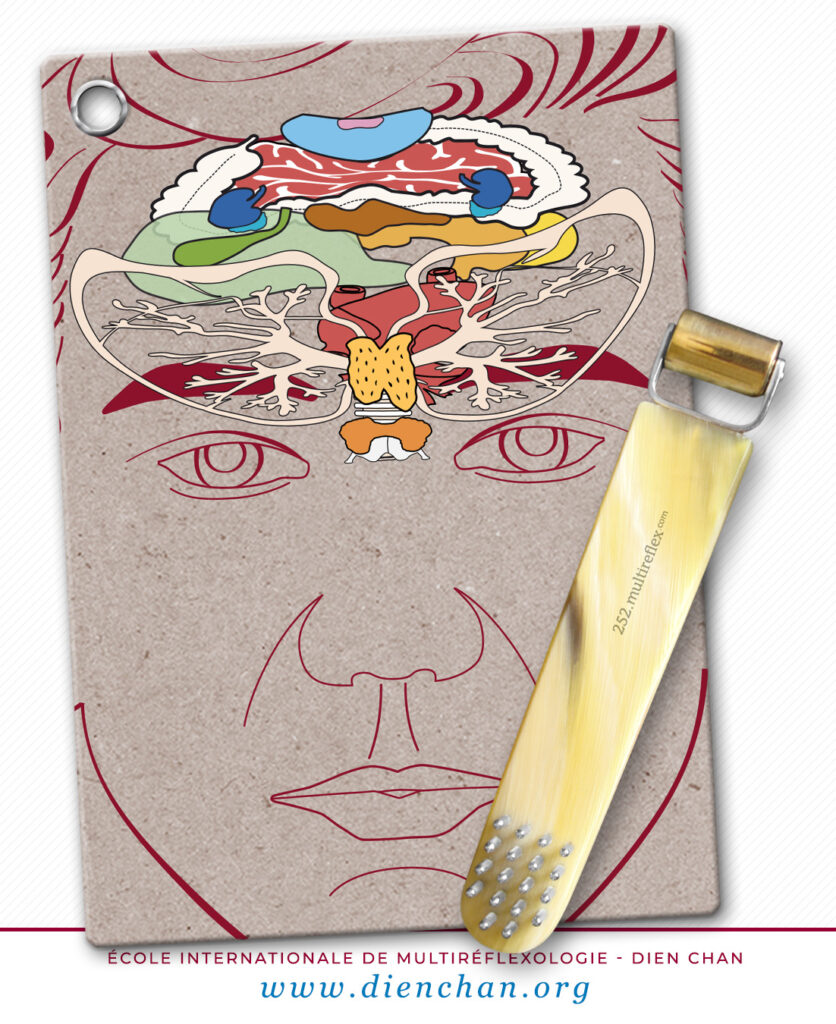
By working on this forehead diagram, we have the opportunity to simultaneously target the liver, gallbladder, spleen, and stomach while stimulating bqc·points and living points related to the eyes.
To complete this facial step, we recommend a gentle massage of Mr. Yang’s armpits (the red man) using the minibrush of the Beauty-brush nº252. This technique promotes ocular sanitation both locally and reflexologically. Simply draw small commas upwards to achieve the draining effect.
4| Constellation and formula
As you know, we cannot provide you with a magical formula for treating glaucoma. However, we offer you a constellation from which you can develop the most suitable formula for the case you will face. This is how we personalize the care!
After completing the previous steps to clear and invigorate the body as a whole, we will now move on to the phase of testing the consolidation bqc·points.
This list is a suggestion to illustrate how Dien Chan can be used to create personalized care. However, nothing replaces thorough training during which we delve into the various techniques in detail. We also offer thematic workshops, including one on eye treatment. So, don’t wait for climate change or the Ice Age to learn from the hands of Dien Chan experts!
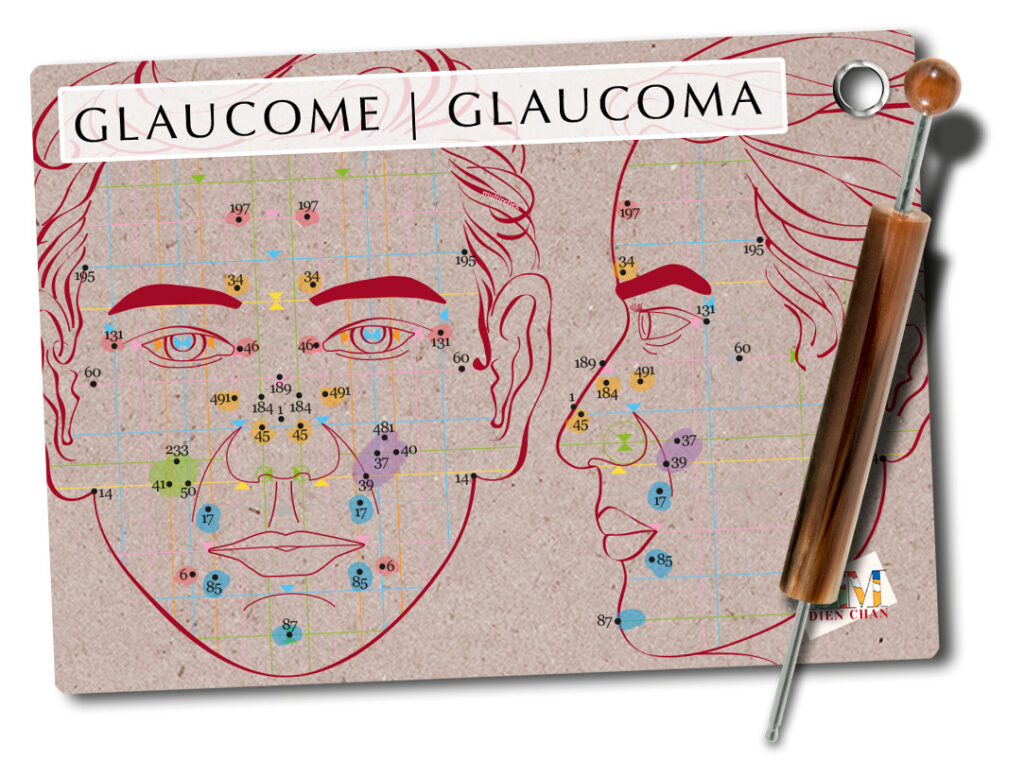
- Eyes in Dien Chan: 197· 6· 131· 46· [pink zones] and all the living points you find around the eyes. Ideally, use the Little-hammer nº128 to detect sensitive points above the eyebrows and the Detector nº101 for the others.
- Cranial nerves related to the eyes: 34· 491· 184· 45· [orange zones]
- Wood Element (Liver and Gallbladder): 50· 41· 233· [green zones]
- Earth Element (Spleen and Stomach): 481· 37· 39· 40· [purple zones]
- Blood pressure regulation: 1· 189· 14· 57· 195· 60·
- And finally, stimulate the urinary system with bqc·points (17· 85· 87· [blue zones]) and perform a Reflexdrainage.
5| Homework
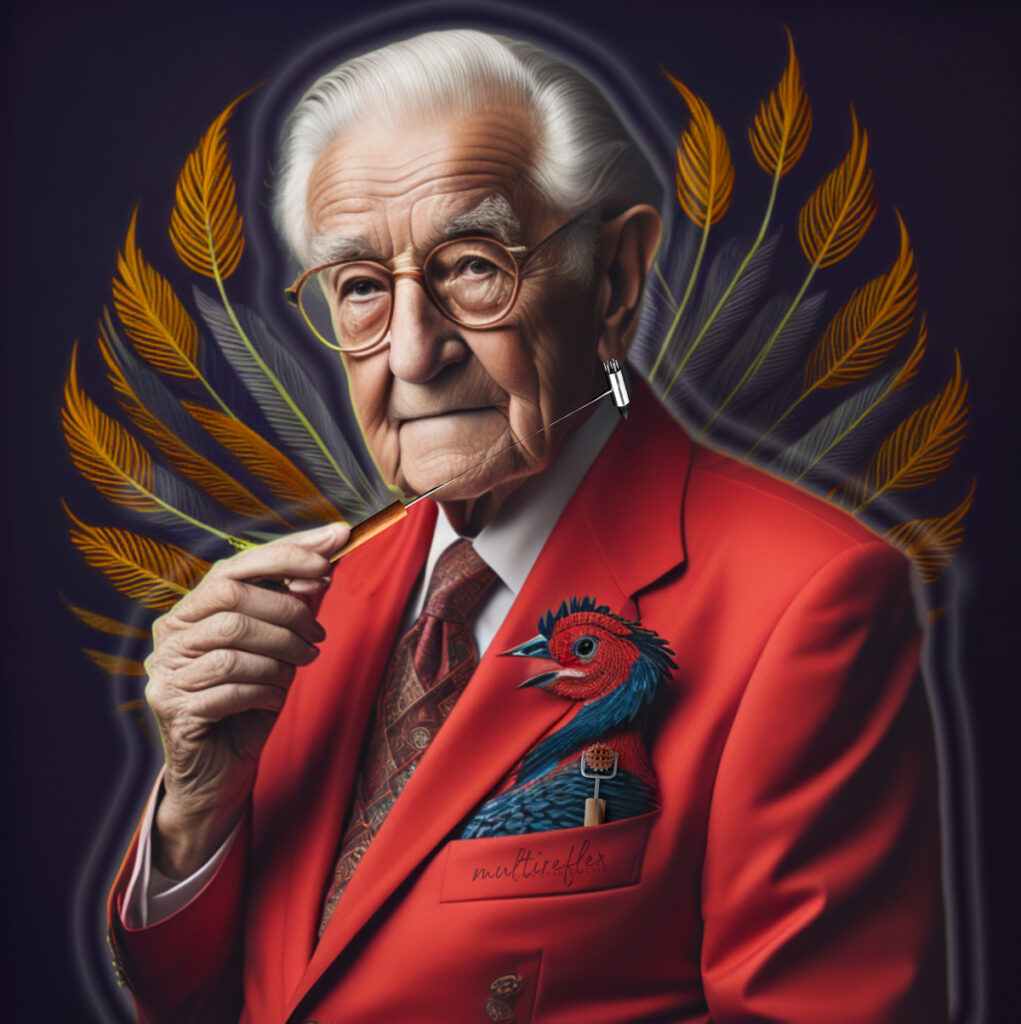
As always, it will be essential to recommend to your client to continue with regular home maintenance, and in this case, the Little-hammer nº128 is the most suitable multireflex tool.
If you use the Faceasit❜clinic app, you will not only be able to develop the formula in their personal file but also transform into reflex zones (the green zones that light up with the ‘!’ button) the bqc·points that you advise them to stimulate with their Little-hammer. These zones will likely correspond to bqc·points 197· 16· and other points you have identified as sensitive.
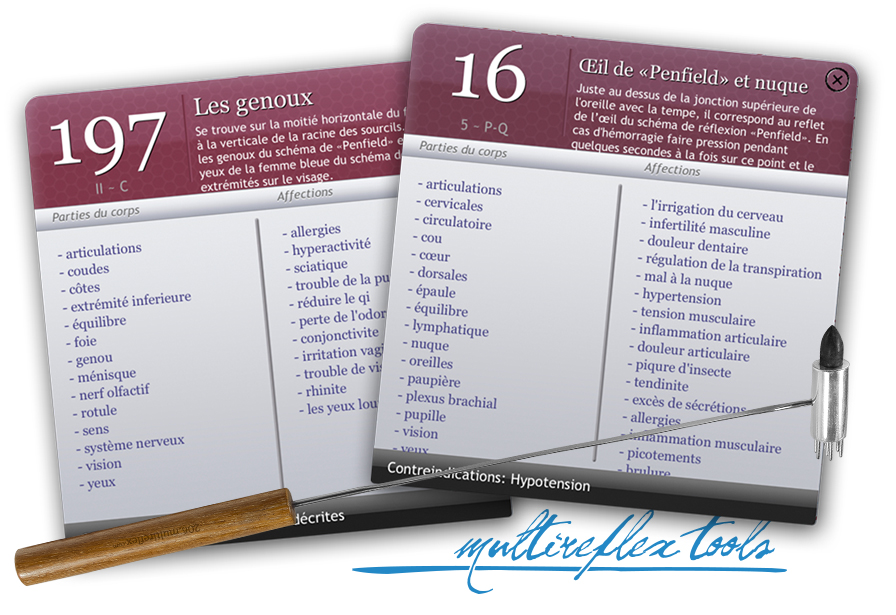
In summary, this is what we propose to establish a personalized care plan for glaucoma. Nevertheless, it should be emphasized that ongoing management will be necessary as there is no definitive cure. Regular ophthalmological follow-up will be essential to monitor and adjust the care plan as needed.
Dien Chan interventions are recommended to complement and support medical treatment, without ever intending to replace it.
We provide you with an educational booklet dedicated to eye disorders, which is also included in the «Ocular Harmony» and «Precious Gaze» sets».
- The thematic kits are available at kits.DienChan.shop
- The catalog of booklets › ebooks.DienShop.com
We hope these recommendations will be useful to you and look forward to your feedback. If you appreciate our content and wish to support us, we strongly encourage you to subscribe to the channel www.DienChan.tv and to attend a training session while purchasing the actual multireflex tools on DienShop.com.
We count on your support.
Dienchanly yours,
_patryck aguilar
Regulating mucus production
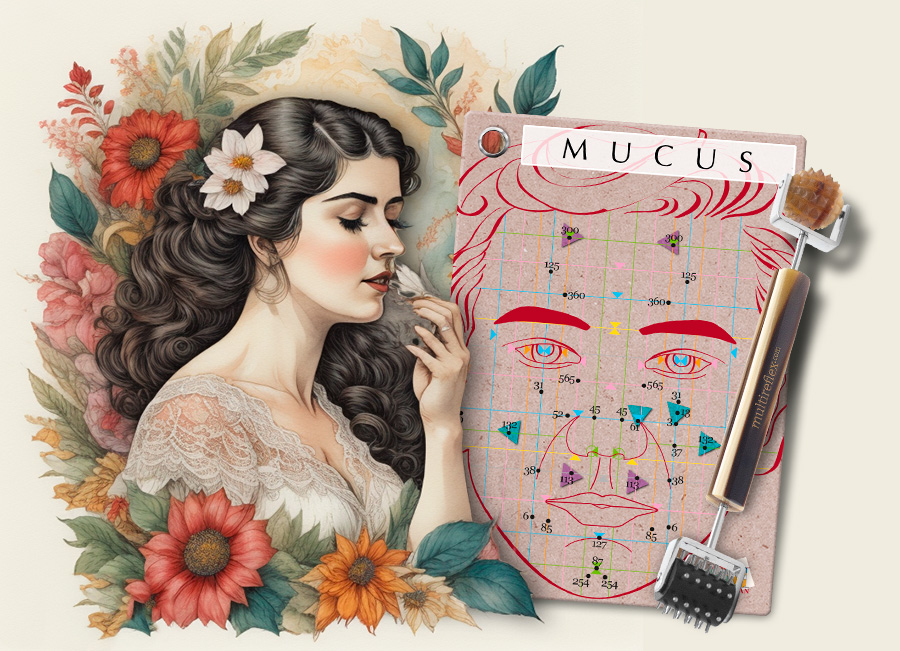
Excessive mucus secretion can be a source of daily discomfort, affecting not only physical comfort but also quality of life. This sensation of sticky phlegm in the throat and nasal passages can even cause nausea in some individuals and disrupt their usual activities.
Determining the cause of symptoms without a thorough medical examination is always challenging. A common concern in such cases is whether medical history, such as tonsil removal, could be the cause of this issue.
Dien Chan can support medical treatment if it is a specific pathology but does not replace it. It is true that tonsils are part of the immune system and help fight infections. Without them, the body may react differently to pathogens. Therefore, it is worthwhile to consult a physician with field experience or an ENT specialist for a precise diagnosis and health evaluation.
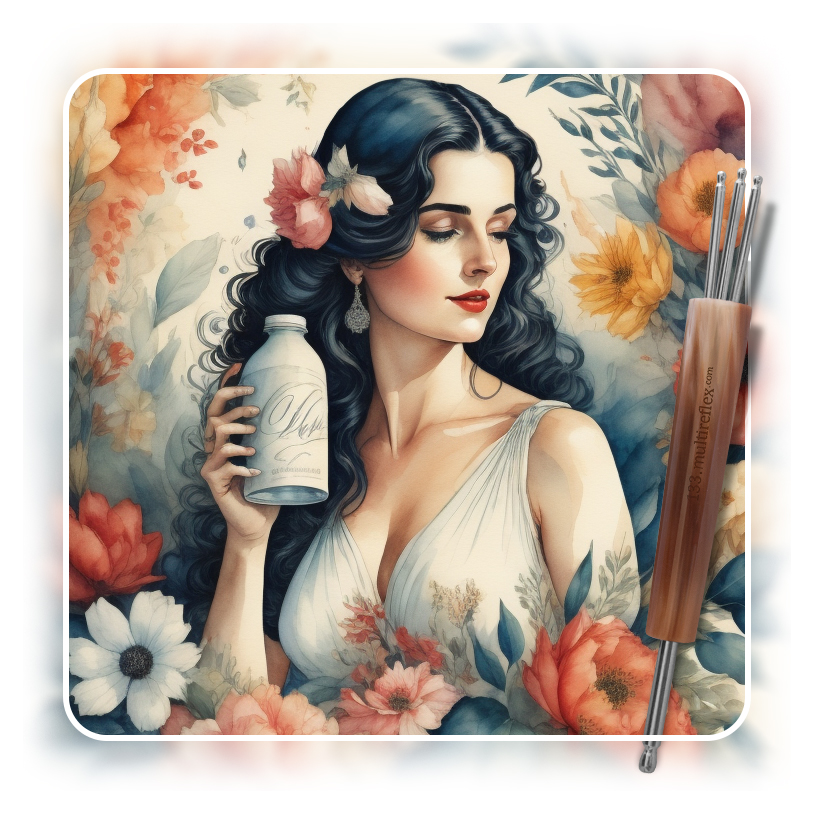
One of the main reasons for overproduction of mucus is often related to the consumption of dairy products 🐮.
It is recommended to eliminate them from your diet for at least a month to see if mucus production decreases. During this period, you can also practice Dien Chan to help liquefy and restrict mucus. Ensure you stay well hydrated and try the «Anti-stress protocol» by including a massage of the stomach reflex zone to relieve potential nausea.
To complement this treatment, consider stimulating certain bqc·points on the face that have the effect of reducing nasal congestion and mucus production.
Finally, for optimal results, conclude the session with Reflex-drainage, which promotes lymphatic circulation, as well as a formula to encourage toxin elimination through the urinary system.
Here is a very general care plan, which should be adapted to each individual involved. It is important to note that all the formulas and lists of points we provide should be considered as constellations from which the practitioner will construct a personalized formula.
We would like to emphasize that our educational goal is to encourage you to become the architect of your own care protocols or, as we say in English, a “care designer“; it sounds good…!…
1| First step
If excess mucus disrupts the person’s nervous state, it is recommended to start with the «Anti-stress protocol». › Refer to our detailed article on the subject at this address tools.dienchan.pro.
Begin by using the Yin rake nº416 to gently rake the scalp..
2| Body step
To treat this type of disorder, we intervene on the body to stimulate the brain towards the anatomical areas involved. We also aim to promote blood and lymphatic circulation to prevent stagnation.
For this, we recommend gently rolling the person’s back with the Double yang ball nº410, starting from the lower back and moving up to the neck, making at least thirty movements.
Then, with the Big hammer nº430 (yin suction cup side), gently tap the back at chest level. The goal is not to strike hard but to ensure that each percussion results in a deep vibration.
This exercise helps stimulate the inside of the lungs while promoting expectoration.
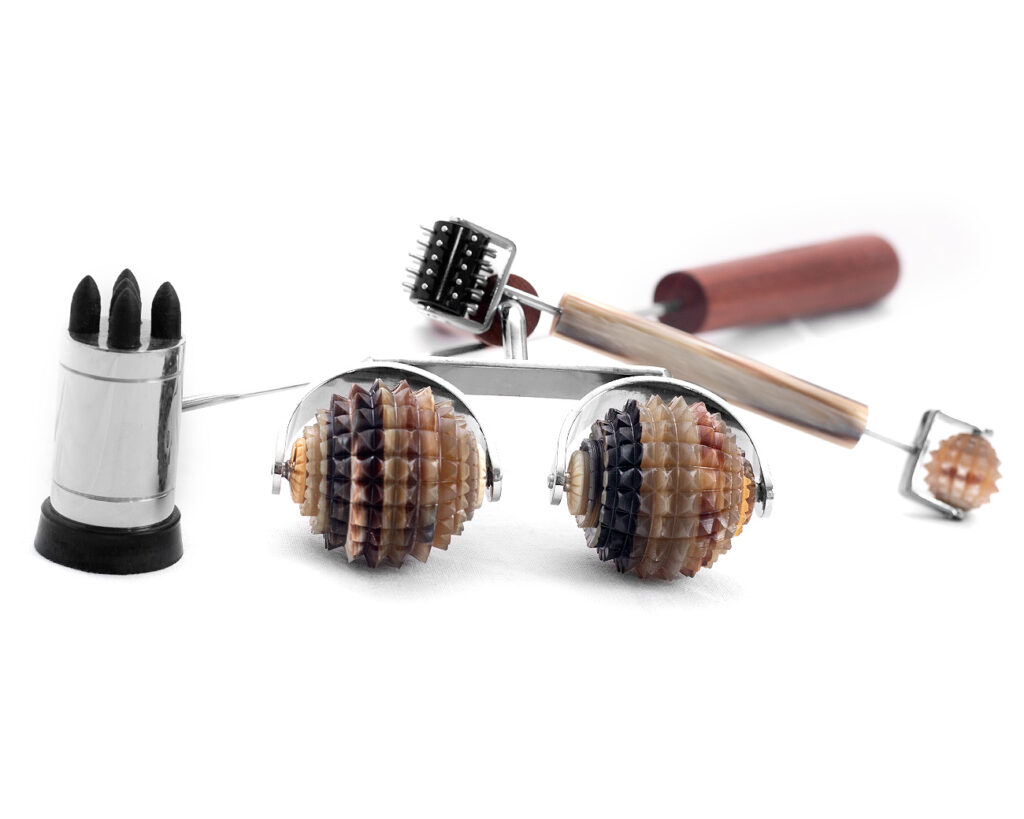
💥 Discover how the «Excellence yang» kit can meet your essential needs and explore its detailed description on this page.
3| Reflex step
In general, two possibilities arise:
a) Nausea
If the person complains of nausea or acid reflux, this may indicate dysfunction of the stomach cardia. In this case, we must continue the treatment by targeting the gastric system. By deploying the internal organ reflex diagram on the face, we locate the stomach area on the left cheek. Two opposite situations may arise:
- If the gastric system is tired, we recommend yang stimulation using the small spike ball of the Yin-yang roller nº206.
- If, on the contrary, it is overheated, it is preferable to rake the entire stomach reflex zone with the small yin rake of multireflex tool nº219.
b) Slow digestion
If, on the other hand, the person feels weak and mentions heavy or slow digestion, it is necessary to energize their digestive system before treating mucus regulation.
To do this, gently roll the hepatic area on the right cheek and also the spleen and stomach area on the left cheek, using the Double mini yang ball nº307 for increased effectiveness.
The intention is to stimulate their functions, so do not hesitate to massage each cheek for at least one minute. Ensure that the gesture remains elegant and does not cause any damage to the skin; be attentive to every movement.
Energizing the respiratory system
To energize the respiratory system and achieve our goal of facilitating mucus fluidification while strengthening the immune system, we need to combine several approaches.
We will start by invigorating the respiratory system.
To do this, use the small rake of tool nº219 to gently rake the entire lung surface of the face. Start on the cheekbone and progress towards the earlobe, following the natural direction of the skin. This movement will provide a refreshing and hydrating yin effect to the respiratory system, which will help liquefy and reduce mucus production.
4| Consolidation with a formula
To reinforce the “anti-stress” influence of the first step focusing on the general state, we add bqc·points related to the stomach. To ensure your patient’s comfort, preferably use the Little-hammer nº128 to stimulate the following bqc·points: 124· 34· 109· 275· 39· 64· 71·
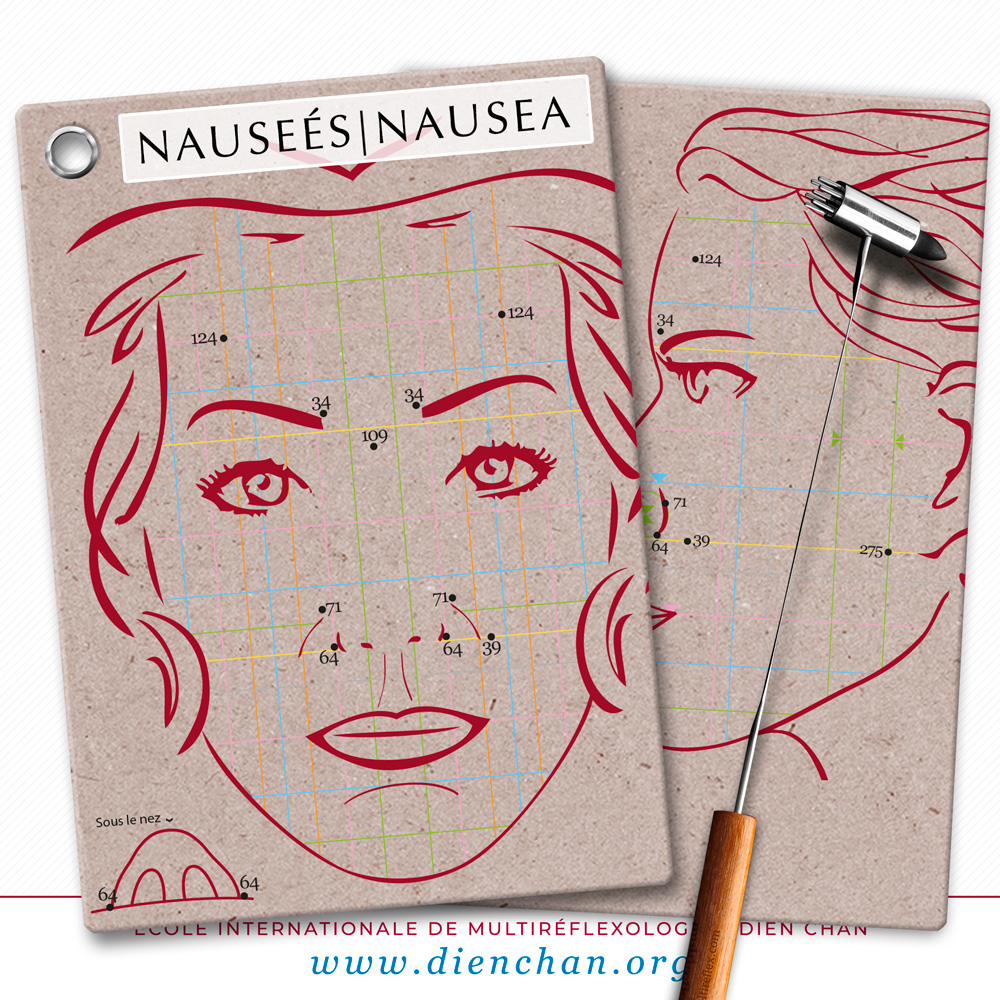
- The bqc·points 124· 34· to relax the nervous system.
- The bqc·points 109· 275· are used to relieve the throat.
- The bqc·points 39· 64· 71· are dedicated to the stomach. Note that points 64· and 71· can be more effectively stimulated with the large detector of the Comet nº133, by gently sweeping along the junction of the nostril with the cheek.
Note: If the person is experiencing significant fatigue, you can stabilize the effect of the Double Yang Ball nº410 on the back by utilizing a yang formula, as taught in our courses or available on the Faceasit application.

We emphasize that the point lists we share are inspiring constellations from which the therapist can create their own formula tailored to the individual and the situation. Our goal is to encourage you to become the creator of your own care protocols.
Image: Dien Chan’s constellation inspiration
It is important to note that experienced practitioners understand that overly complex formulas may be unnecessary and risk exhausting the patient’s body. Dien Chan is a modern and effective technique because it synthesizes both contemporary solutions and ancestral knowledge.
Those who rely solely on points are not truly practicing the original method and do not grasp the multireflexological dimension of Dien Chan. That’s why it’s essential to consult the files of the most sensitive reflex points to discover unsuspected relationships that could guide you towards interesting avenues to explore during the dialogue with the consultant. By broadening your assessment, you can more quickly identify the origin of the problem. We provide videos on this topic in the form of “shorts” on the channel www.DienChan.tv.
Here is a proposed constellation:
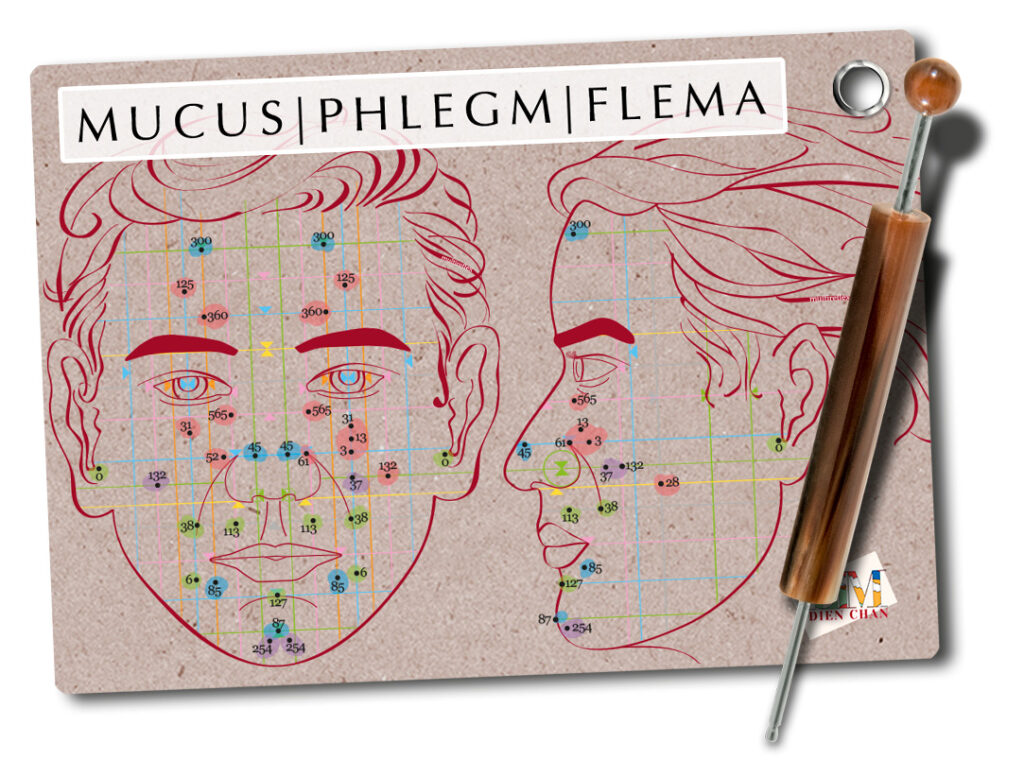
- 31· 52· 132· 360· 565· 125· to stimulate lung energy [pink zones]
- 61– 3– 13– 28– to increase internal lung hydration [pink zones]
- 37· 132· 254· to stimulate the Spleen meridian, which is involved in the process of transforming body fluids. [purple zones]
- 127· 38·113· 6· 0· to invigorate the immune system [green zones]
- 300· 45· 85· 87· to engage the urinary system in elimination. [blue zones]
It is also important to consider the information gathered during the dialogue with the patient to identify other points that may be relevant to their specific condition.
5| Your recommendations
The final step of a well-elaborated care plan aims to encourage the individual to become aware of their active role in managing their condition. To achieve this, we perform a Reflexodrainage while explaining the different steps to the individual. We then suggest either acquiring the Comet nº133 so they can practice this technique at home, or the Yin-yang roller nº206 so they can continue working on the reflex zones of the lungs. By offering them the opportunity to continue treatment at home, we enable them to deepen their self-care until the next session, while providing them with the means to be autonomous in their care approach.
We also encourage you to consult the videos on the Dien Chan experts’ channel to understand the gestures to employ. Subscribe to www.DienChan.tv and share your feedback under the video of your choice.
We are eager to hear about your results!
Looking forward to your feedback,
— Dien Chan experts —
www.Multireflexology.com
Reduce lipoma & fatty deposits
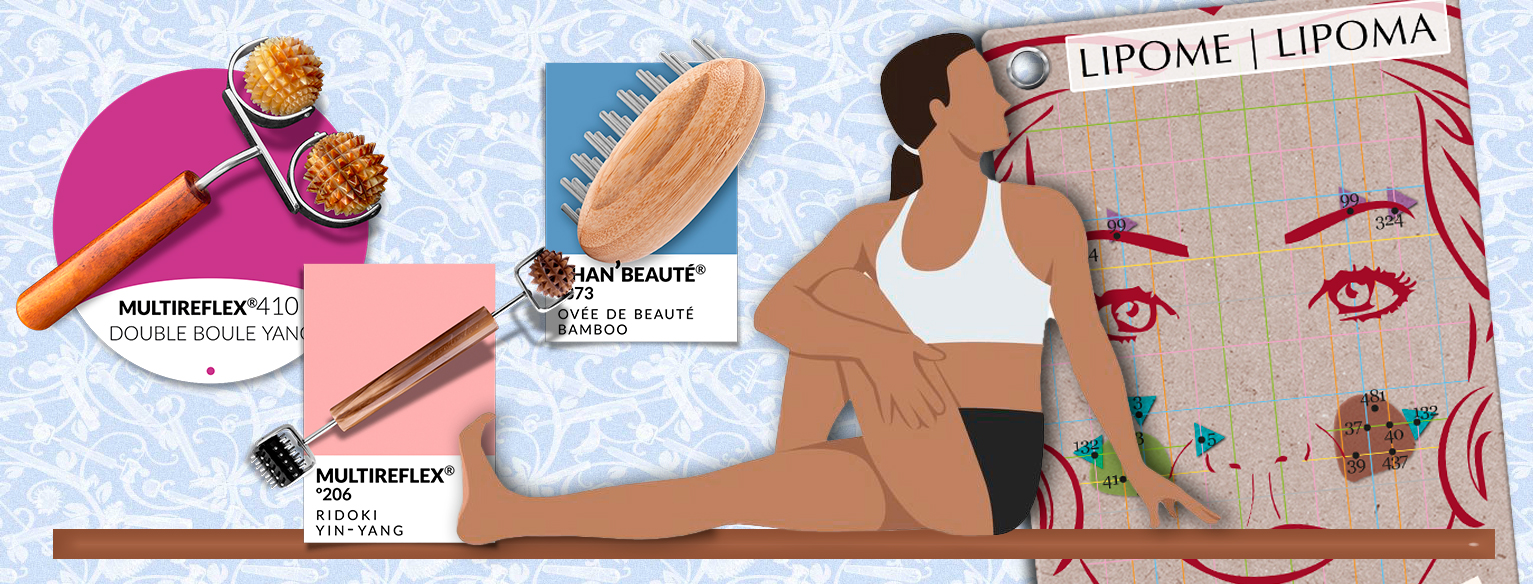
Welcome to the world of advanced reflexology care!
The «Special Lipomas» kit is truly designed to meet your needs for treating fatty deposits, whether directly on the body or on the face. Whether you’re a practitioner or an esthetician, these tips will also be useful for self-care.
A lipoma is a soft, mobile mass composed of fat that develops slowly under the skin. Although they are generally benign, lipomas can sometimes be bothersome if they are large or located in sensitive areas.
Our comprehensive and holistic approach will enable you to treat lipomas safely and effectively, while offering optimal results for your well-being.
The kit consists of three carefully selected multireflex tools to effectively target lipomas at different stages of the treatment plan. Let’s explore together how they can help you regain a sense of comfort and confidence in your skin. And because a lipoma is generally not harmful to health, we can treat them naturally by following this treatment plan used by our Chan❜beauté professionals.
General condition
Although the lipomas you wish to treat can develop anywhere on the body, let’s take the concrete example of a lipoma located on the left arm to facilitate understanding of our explanations. You can then transpose this idea to the relevant anatomical part.
When a person consults for a disorder, whatever it may be, always consider addressing their general condition first. We delve into this first step of the “treatment plan” in many other articles and during training.
Body step
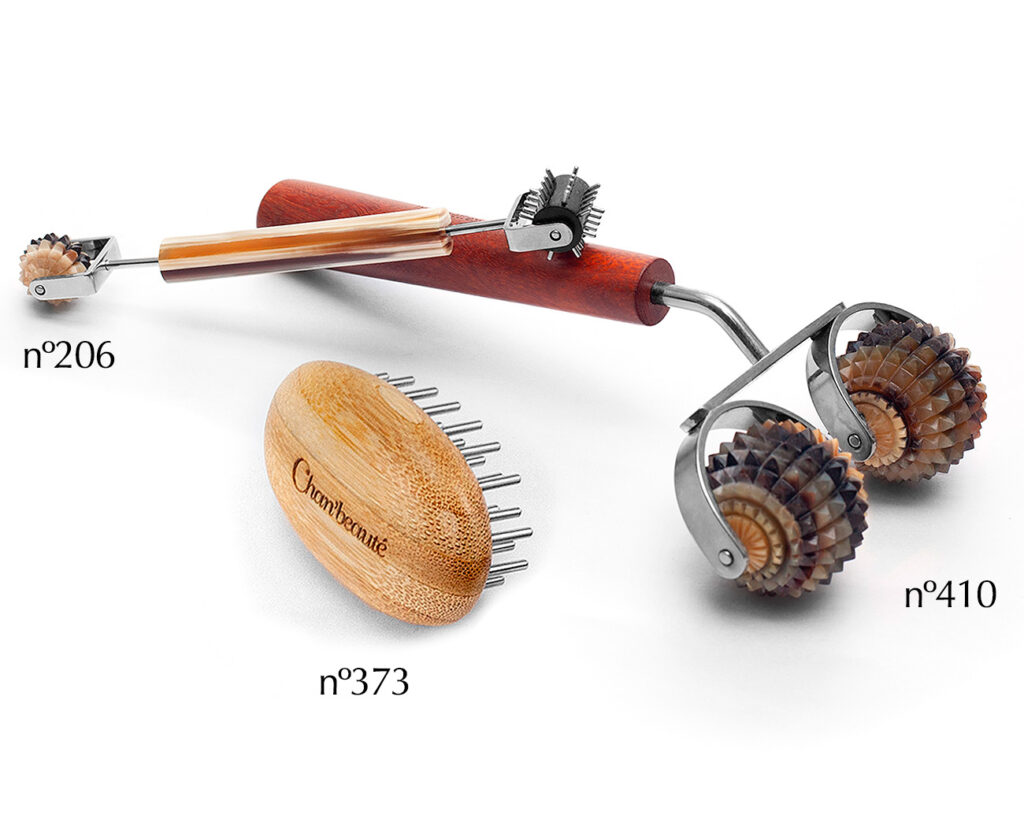
1| Start by using the Double yang ball nº410 to roll over all body areas, including the lipoma area if possible. Repeat the exercise on the other arm, making about fifty back-and-forth movements. Keep in mind the principle of Dien Chan symmetry; even if the lipoma is on the left arm in our example, don’t forget to also work on the right arm.
2| Then, use the Beauty ova nº373 to perform gentle sweeps towards the nearest lymph nodes. In our example, make about twenty sweeps towards the armpits without exerting excessive pressure so that the massage is enjoyable. Repeat this operation on the symmetrical limb.
The Beauty ova helps eliminate accumulated toxins and fats, promoting their evacuation through the lymphatic system.
For the facial step

It’s after the body step that we can work on the face by using reflex diagrams as a guide. It’s not always easy to prioritize one reflex diagram knowing that there’s no better one than others.
It’s by studying facial diagnosis through our training that you’ll be able to observe in more detail the visible facial marks that can guide you.
For our example of the lipoma located in the middle of the arm at the level of the anterior branchial, we will start with the reflex diagram of the Red man which represents the extremities on the face. You’ll notice that his arms run along the eyebrows.
This step reflexively transposes the yang work we have done on the body.
1| With the little yang spike ball of the Yin-yang roller nº206, let’s start by rolling from the glabella (between the eyebrows) towards the temple. Make about fifty back-and-forth movements, making sure to follow the left eyebrow arch just above the eyebrow. Repeat the exercise on the right arch.
If you have deeper knowledge in Dien Chan, you can try to locate more precisely the facial reflection of the lipoma using a detector. In this case, it is preferable to use the large detector of the Comet nº133 to perform precise sweeps along the eyebrow arch to detect a more sensitive point along the way.
2| Then, and to reflexively renew the lymphatic work, we use the yin effect of the same Yin-yang roller nº206 from the temple towards the glabella.
Its roller equipped with soft miniprongs allows us to promote moisture and circulation to push fats towards the lymph nodes of the Red man.
3| Let’s take again the little yang spike ball of the Yin-yang roller nº206 to stimulate about thirty times on the hepatic reflex zone on the right cheek. By stimulating the liver and gallbladder, you encourage your body to eliminate fats.
Consolidation with a formula
This step is mainly for those who have studied Dien Chan seriously. It consists of creating a constellation of bqc·points from which we select the most sensitive ones.
This allows us to personalize our treatment at each session and to become the architect of our own protocol.
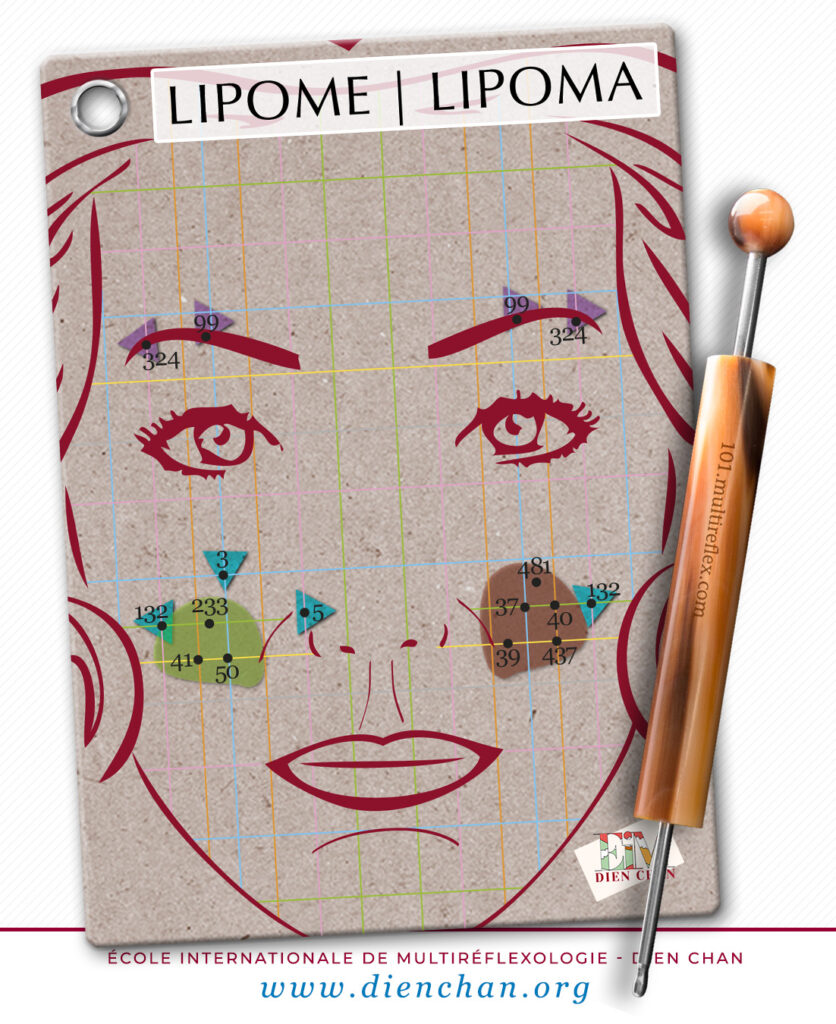
1| You’ll notice that the constellation proposed here includes bqc·points related to previous steps. So, we’ll use bqc·points for the arm, the hepatic system, as well as knowledge in TCM indicating the involvement of the Earth element.
Indeed, our goal is to improve the body’s absorption capacity to prevent damp stagnation that can lead to the formation of lipomas.
Our proposal is to test the following bqc·points with the thin Detector nº101 to keep only the most sensitive ones:
- Hepatic system: 50· 41· 233· [green zones]
- Reduce moisture: 3+ 5+ 132· [blue triangles]
- Earth element: 39· 481· 37· 40· 437· [brown zones]
›› Complete with bqc·points related to the concerned body part. For our example of the arm, we’ll keep 324· 99· [purple triangles] and the live points found during the sweep of the eyebrow arch using the large Comet Detector nº133.
2| Regarding the lymphatic system, we advise practicing Reflexdrainage at the end of the session and following the instructions on the page www.DienChan.zone
This 6-step facial massage is extremely powerful in helping the body eliminate all the toxins mobilized by previous steps.
Repeat this exercise at least 4 times a week and try to do Reflexdrainage with the Comet nº133 every evening.
Chan❜secret
During a session, the judicious use of instruments combined with the implementation of the treatment plan steps promotes better energy circulation and facilitates toxin elimination; which contributes to reducing lipomas.
By carefully selecting bqc·points and applying your knowledge, you opt for a natural and non-invasive approach.
And by teaching the appropriate gestures for the body and face while recommending suitable multireflex tools, you offer an interesting solution to people seeking complementary natural care.
Dienchanly yours,
— The Dien Chan Experts Team —
International School of Multireflexology Dien Chan
Official website: www.Multireflexology.com
Reflex diagrams and bqc·point of Dien Chan
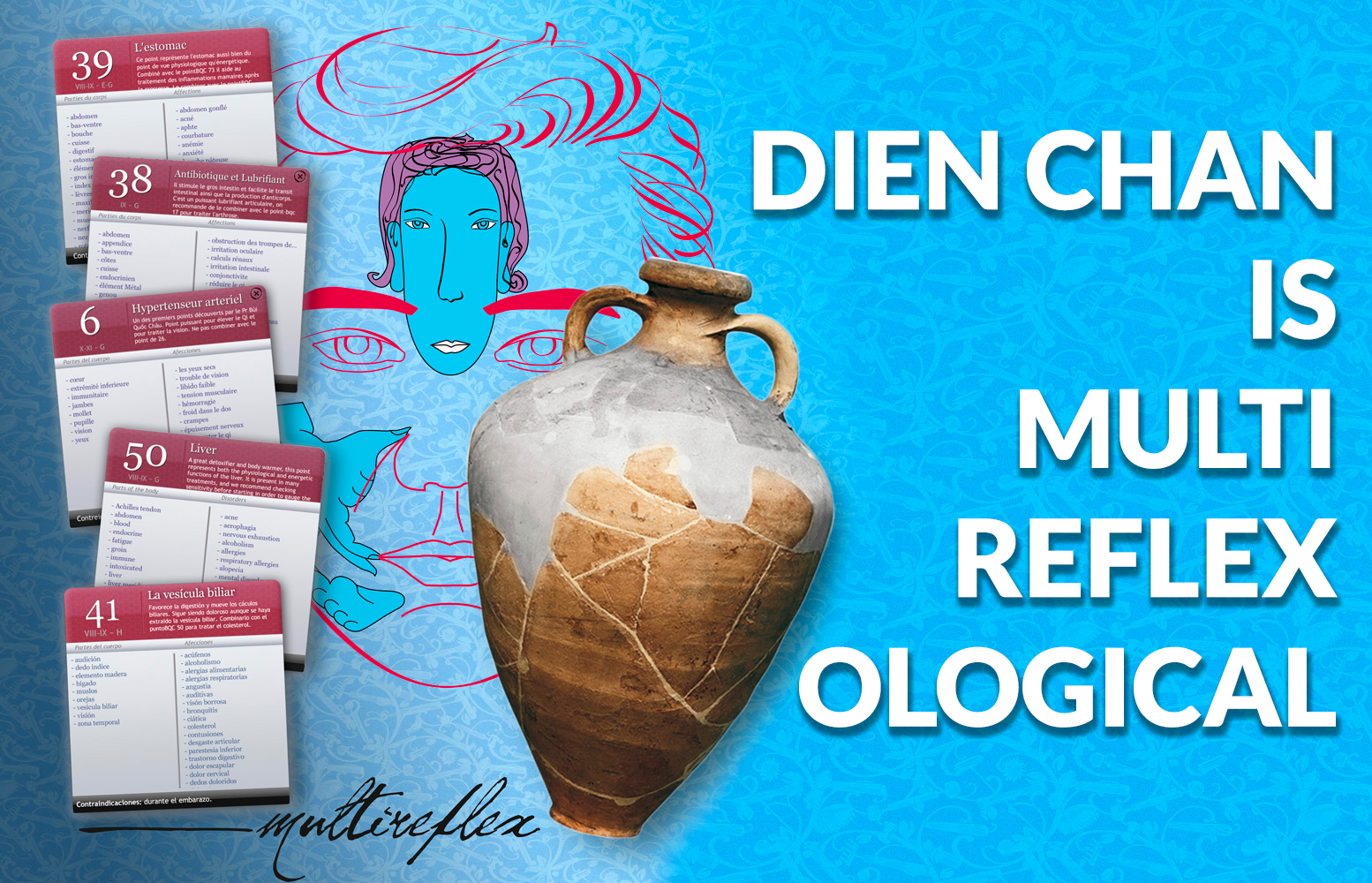
By carefully exploring the relationships between sensitive reflex zones and consulting the sheets of the most responsive bqc·points, we gain inspiration to enrich our diagnosis.
Multireflexological synchronism is a reasoning unique to Dien Chan that encompasses different methodologies used to identify potential relationships that guide us to the origin of the disorder. In this approach, research is conducted by combining various reflex zones from reflex diagrams, consulting sheets related to particularly sensitive bqc·points, or sometimes observing the ineffectiveness of the initial choice between the yin or yang effect of the multireflex tool.
Our main goal is to restore energy balance and promote self-regulation by simultaneously acting on several reflex zones that correspond to various systems and organs of the body.
The approach aims to optimise care by working in a coordinated manner on several bqc·points, thereby creating a synergy of intervention for faster and more lasting positive reactions. Dien Chan, as a holistic approach, takes a global view of the body, considering the interconnections between its different parts. This promotes natural recovery by taking into consideration the entire complexity and interactions of the body system.
We resort to this type of reasoning when we want to deepen the healing process, especially when our results are stagnant and show no significant improvement.
Therefore, you must have a certain level of knowledge (at least having completed the third training module called DienChan❜clinic) to be able to quickly check correspondences that will lead us to a more obvious origin of the disorder.
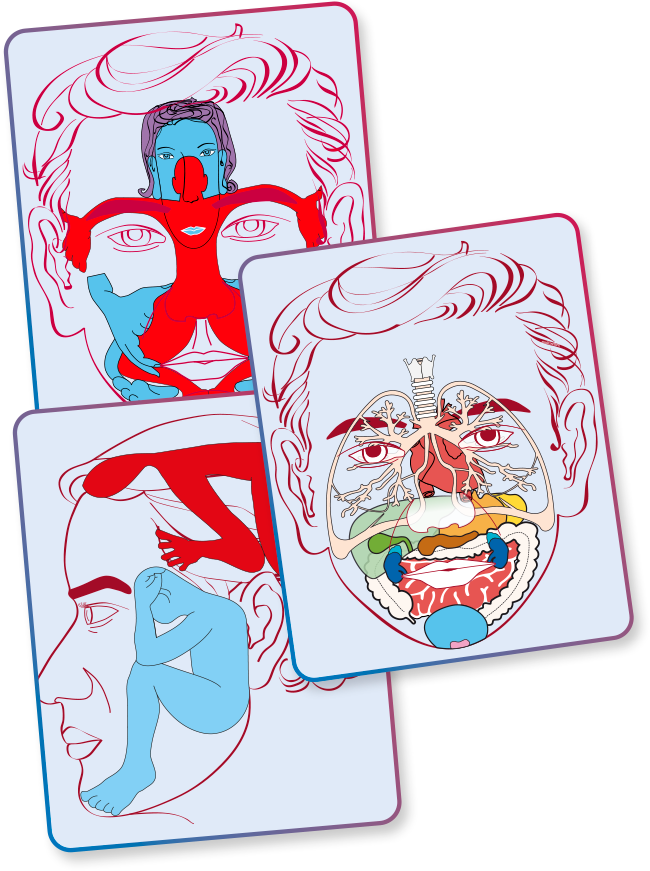
After studying and understanding the reflex diagrams for identifying reflex zones, we can then incorporate the bqc·points formulas into our protocols to enrich our approach and reach the root of the dysfunction.
Obtaining such results are not limited to stimulating random points but requires judicious use of the yin or yang effects of multireflex tools.
The initial steps in Dien Chan care plan, namely the general assessment and reflex step, are essential to prepare the ground for rigorous and effective work.
We optimise our sessions by offering superior quality care to our clients.
It is crucial, therefore, to receive proper training and practice regularly to master the gestures and reap all the benefits.
This innovative therapeutic approach is modern in that it integrates different dimensions to achieve a global balance of the body.
Therefore, it’s in the “reflex” and “consolidation” stages of the treatment plan that we can make the most of the insights provided by multireflex synchronism. These stages open up new possibilities based on the gathered information. But before we delve into this concept, let’s revisit how to interpret each Dien Chan reflex diagram. To make it easier to understand, I’ll use two metaphors: the “sketch” and the “amphora.”
The sketch of a Road map
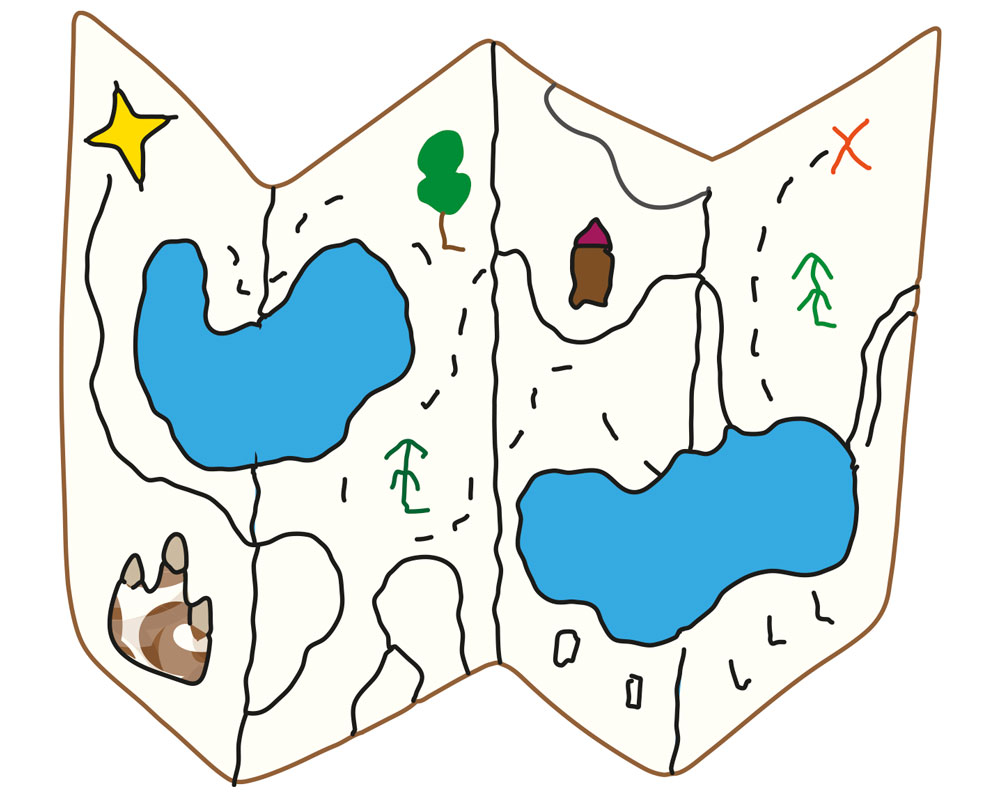
The first metaphor compares each Dien Chan reflex diagram to a rough map, similar to a coarse road map we used to draw before the arrival of GPS. These maps were not precise in terms of scale or distance, but they were useful for orientation.
We must approach the reflex diagrams in the same way, as approximate guides transposed onto each face and its specific characteristics.
It is essential to be able to project them mentally onto the person we are treating. This means that every time we draw on someone (or on their photoshopped portrait), it will only be accurate for that person and not for everyone.
That’s why we emphasise the exercise of mental projection in our training so that you can adapt to each client, as well as to yourself for self-care.
This approach may seem approximate to logical minds, but Dien Chan is not a surgical technique. Imprecision is actually necessary to discover painful points. If the sensitive point does not belong to the Dien Chan bqc·points map, it indicates that it is located in an area corresponding to a specific reflex diagram.
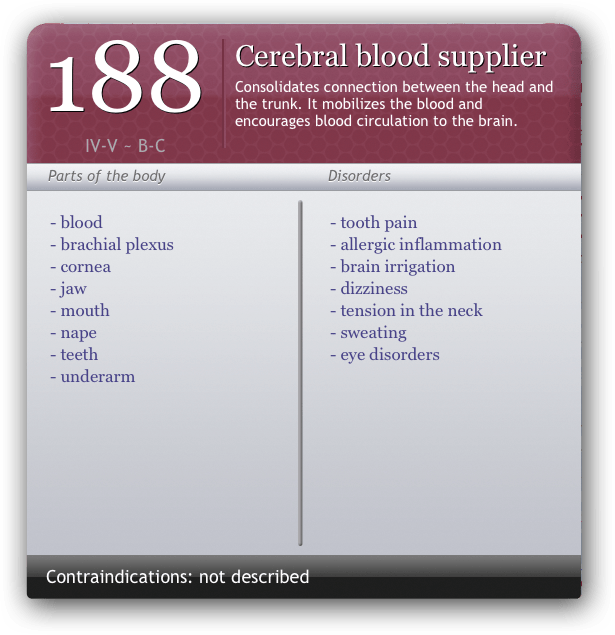
On the other hand, if we are convinced that it is a specific bqc·point, it is interesting to consult its complete sheet to establish cause-and-effect relationships. These “multireflexological bridges” encourage us to inquire about other possible dysfunctions.
Thus, the “facial reflex” stage of the care plan provides us with valuable clues to combine reflex diagrams. Once we have incorporated the “multireflexological dimension” of the method, Dien Chan truly invites us to become creators of custom care.
The bqc·points index cards are all available in the Dien Chan app called Faceasit.
The amphora metaphor
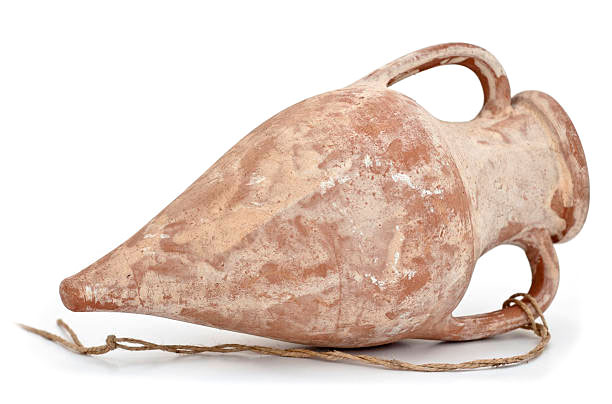
Before the advent of digital and virtual imaging, we used to contemplate solid restorations of archaeological pottery in museums.
Imagine a broken amphora discovered off the Mediterranean coast. Instead of showcasing the small fragments found in a display case, the amphora was reconstructed using plaster to complete the missing parts. This technique allowed us to appreciate the object in its original size and shape.
Some of the interpretations of Dien Chan reflex diagrams work in a similar way. The drawn parts of the diagram are based on clinical verifications, while the missing parts are assumed based on logic and anatomical coherence. This means that not all described areas are necessarily precise. Reflex diagrams guide us to find “open doors” receptive to yin work or yang stimulation.
To illustrate the concept, I choose the reflex diagram of the Blue Lady (also sometimes called Madame Yin) because it is sometimes a bit neglected by some students. This is a good opportunity to restore its brilliance!
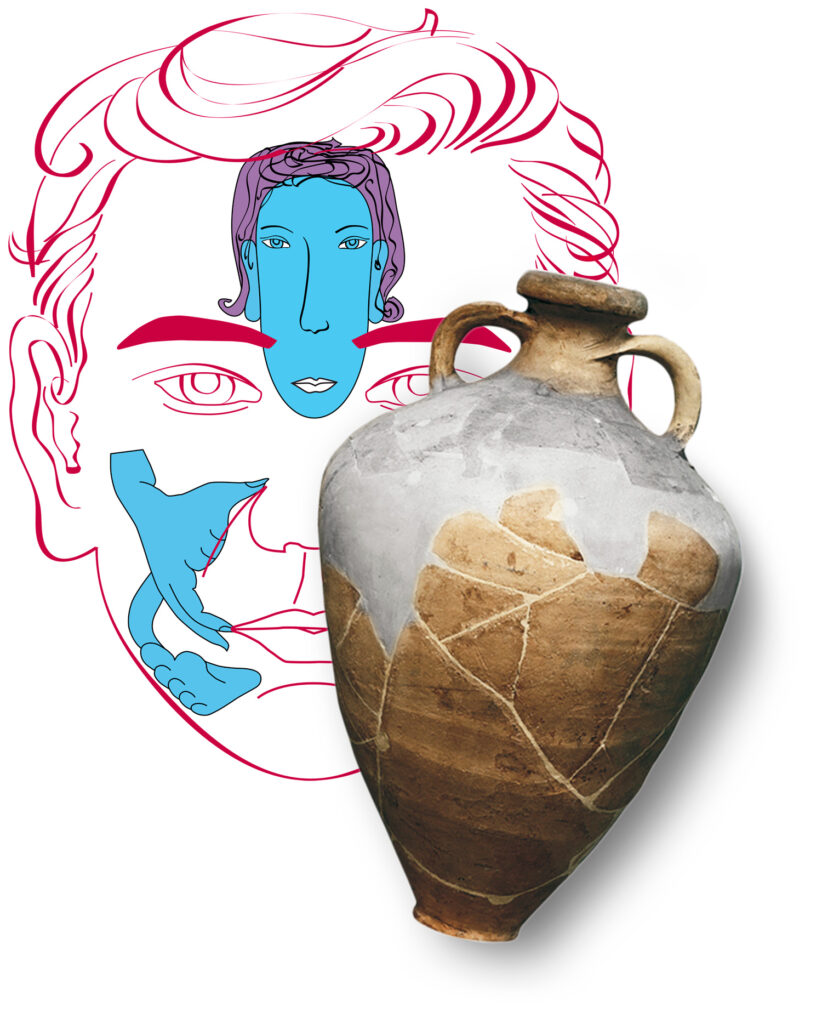
• The Blue Lady’s feet extend the area of Mr. Yang’s feet on the chin.
• The Blue Lady’s thumbs rest on the wings of the nose (bqc·points 61·).
• The ring fingers point to the corners of the mouth.
• The pinky fingers are slightly lower towards bqc·points 85·.
• The Blue Lady’s mouth is located between the eyes, with her upper lip on the glabella.
• Her nose is on the first quarter of the forehead, which invites us to link it to the nape and Mr. Yang’s head.
• Her eyes are on the horizontal line that divides the forehead in two equal parts, vertically from the edge of the eyebrow arch (bqc·points 197·).
• Her head occupies the entire forehead.
Multireflexological synchrony
And since we have taken the example of the Blue Lady’s reflex diagram, let’s now examine some interesting multireflexological correspondences:
— The Blue Lady’s thumbs are on bqc·points 61·, which is known for its beneficial effects on the lungs. Moreover, it is fascinating to note that the Lung meridian also ends on our thumbs. The effects observed at bqc·point 61· are similar to those of 11L; an acupuncture point located at the angle of the thumb, regulating lung function.
— The Blue Lady’s ring finger rests on the corner of the mouth, precisely at bqc·points 29· and 222·. These points regulate not only the urinary system but also the Triple Heater meridian. In Dien Chan, we incorporate bqc·points 29· and 222· to refresh the body, just like in acupuncture with the 1TH and 2TH points of the Triple Heater meridian.
— The Blue Lady’s pinky finger is located in the reflex area of the small intestine according to the internal organ diagram. It is interesting to note that the Small Intestine meridian starts at the tip of the pinky finger.
— Bqc·points 197· are in the center of the Blue Lady’s eyes. These points are already used thanks to the “Penfield” reflex diagram to relieve knee pain. And we can define a multireflexological connection knowing that in acupuncture, the Stomach meridian passes through the knee and acts, among other things, on eye disorders.
Thus, we have the possibility not only of “verifying” the propositions of the diagram by confronting them with other recognised knowledge, but also of establishing coherence between the diagrams and the bqc·points.
Practicing Dien Chan is a unique way to make care enjoyable without headaches!
Instead of explaining these concepts in writing, why not illustrate them through this video? This would help you better understand these concepts and see them in action. This type of reasoning will allow you to develop custom formulas adapted to each situation.
We hope that if this video — or others — are useful (or interesting) to you, you will thank us by giving it a “like” and subscribing to the channel www.DienChan.tv.
It costs nothing and is nice!
Conclusion
Dien Chan is a complex, but not complicated approach that requires proper training to unlock its potential. It’s essential to learn from talented and competent teachers to develop logical and inventive reasoning, enabling you to become creators of personalised care.
Remember that Dien Chan offers long-lasting results while providing a pleasant and soothing experience for your clients. Practice with passion and dedication, and you will witness the benefits of this therapeutic approach materialize.
By exploring and deepening your knowledge of reflex diagrams, using bqc·points formulas, and the appropriate multireflex tools, you will be able to provide effective care and become a proficient Dien Chan practitioner. Offer unparalleled well-being experiences to your clientele by fully utilising the training support materials we provide.
— Subscribe to the experts of Dien Chan channel: www.DienChan.tv
— Check out the in-depth article blog: www.DienChan.academy
— We also offer educational booklets and thematic kits.
— The training schedule (cities and dates) is regularly updated ›
• In French: agenda.DienChan.org
• In Spanish: agenda.Facioterapia.org
• In English for NorthAmerica or Online: courses.Multireflexology.com
✔︎ Practice regularly with the appropriate multireflex tools and be amazed by the successes you will achieve. The complete catalog is available at www.DienShop.com
I wish all of you continued success in your journey of discovering and learning Dien Chan. Remember that this method is a true source of natural well-being and holistic balance. Feel free to refer to the available resources and videos to deepen your understanding and practice.
Good luck on your journey to better health and optimal well-being!
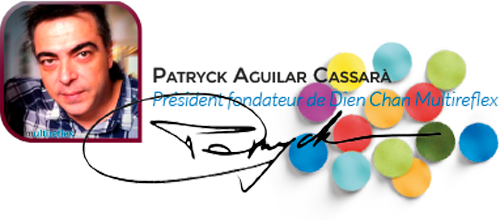
Sleep apnea: advanced approach in Dien Chan
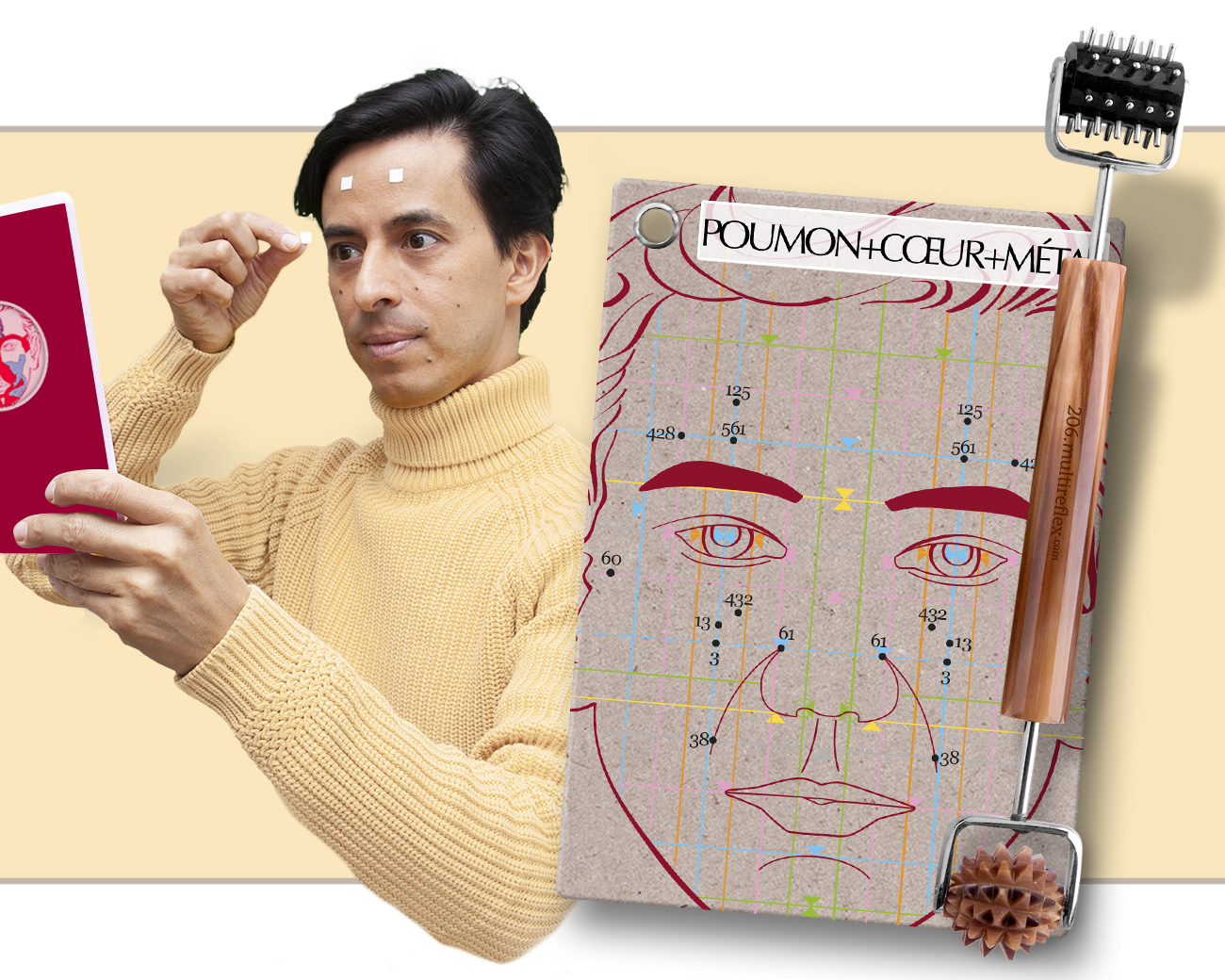
Sleep apnea is not a disease but a complex condition with various origins, involving many factors.
In this captivating video [in French, so activate subtitles], we take advantage of the presence of experienced therapist Yvan Binggeli to explore the management of sleep apnea in depth.
Discover how to create a detailed care plan, relying on innovative ideas to target the underlying causes of this condition. This approach incorporates precise concepts to target the organs involved while restoring the biological and energetic balance of the body.
This holistic method goes beyond conventional treatments, including parts of the body as well as facial reflex zones. It relies on the exclusive use of high-quality multireflex tools.
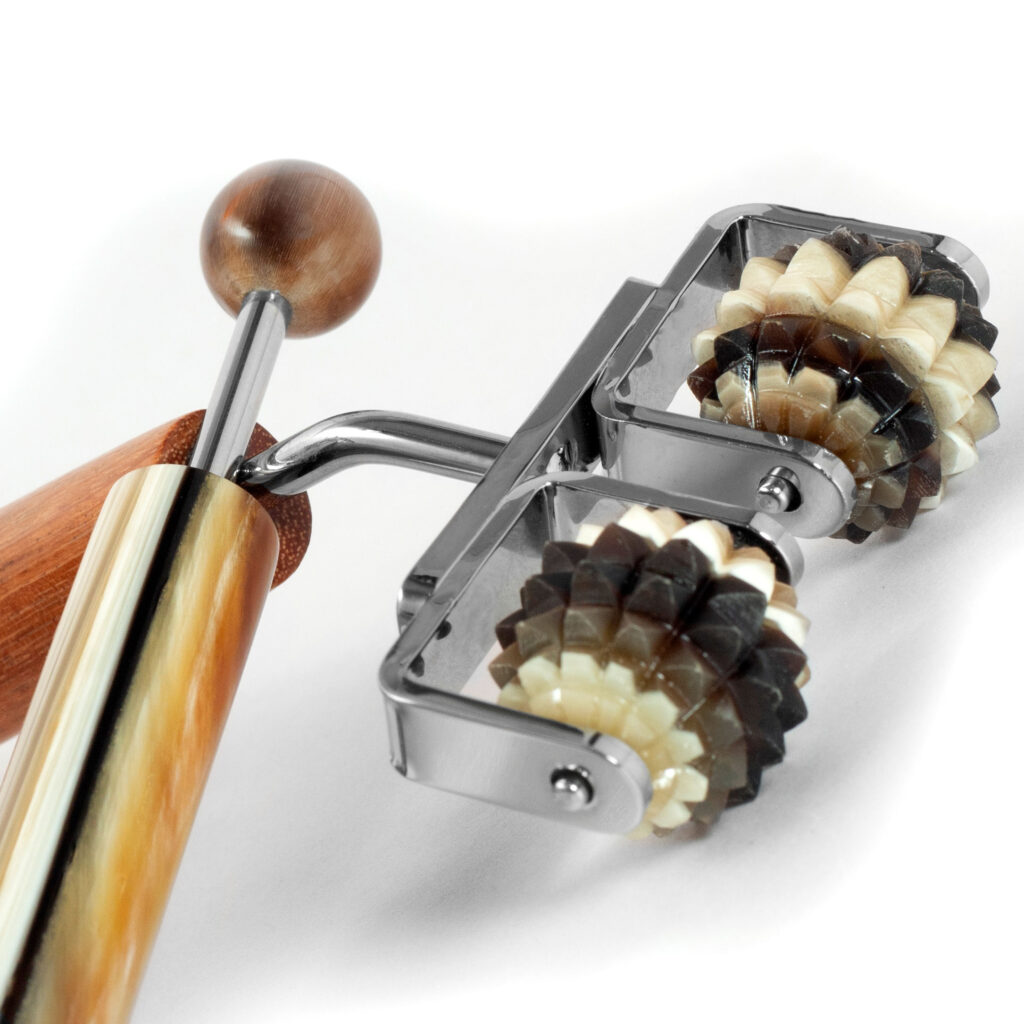
Indeed, we prefer instruments with wooden handles to avoid disruptive static electricity produced by plastic. We also emphasize that parts in direct contact with the skin should be made of high-quality metal (for the yin effect) and natural horn (for the yang effect) because the latter is a noble material respectful of skin microbiota and with biological antiseptic properties.
This is the best way to work consciously with the utmost respect for the skin.
We illustrate our approach through a real case
That of an ambulance driver who obtained very positive results thanks to Yvan Binggeli. Testimonials from other therapist students also reinforce our proposal, demonstrating the effectiveness of Dien Chan in many cases.
Sleep apnea is a complex condition, and we admit there is no one-size-fits-all solution. However, the art lies in creating personalized treatments. The video also explores addressing the Water element by stimulating bladder and kidney bqc·points, with the help of the Faceasit application to facilitate the creation of constellations and personalized formulas.
In the course of the video, we review key concepts, covering various aspects of the care plan:
- The general condition of the patient.
- Management of blood oxygenation and pressure.
- Dialogue and questioning to obtain essential information
- Recommendations on multireflex tools.
Our goal is to support you in enriching your care protocols by integrating external knowledge, such as traditional Chinese medicine.
Throughout our training program, spread over several modules, we teach you to translate the information obtained during dialogue with your patient into concrete gestures of Dien Chan.
To enhance your viewing experience, we recommend using the time codes found in the video description. They will allow you to easily navigate to each section with a single click.
During our discussion, we share many ideas to help you create a personalized care plan. Our goal is to inspire you to adapt your approach.
Here is a list of ideas to try:
1| To begin the care plan and address the overall condition, we refer to the anti-stress protocol with the Yin rake nº416. The article is here › tools.dienchan.pro/en/stress
2| Body phase: Facing a rather yang disorder, we offer a “Sleep Apnea” kit composed of yin tools we talk about:
- The Double yin ball nº411 to work the heart and lungs in the back.
- The Yin-yang roller nº206 to roll on the facial reflex zones of the lungs and the heart by guiding yourself with the diagram of the internal organs.
- [For phase nº4 of our treatment plan] The Yin health ball nº433, to roll it between the hands before going to sleep. The palms of the hands being a reflex zone of the lungs, this exercise promotes respiratory fluidity.
3| For the consolidation phase of the treatment using bqc·points formulas, we provide several constellations. This term refers to sets of bqc·points that we consider relevant to create a custom Dien Chan formula.
You have various techniques at your disposal to create your own constellation, and after testing them with a detector, only the most responsive bqc·points will be retained to compose your entirely personalized formula.
✔︎ Take, for example, the case of the throat and the flexibility of the soft palate, a crucial aspect to prevent the “flap” from collapsing during sleep, which can cause airway obstruction and episodes of sleep apnea. To address this, we propose a constellation involving the following bqc·points: 14· 274· 275· 64· 71· 8· 20· 109· 106·.
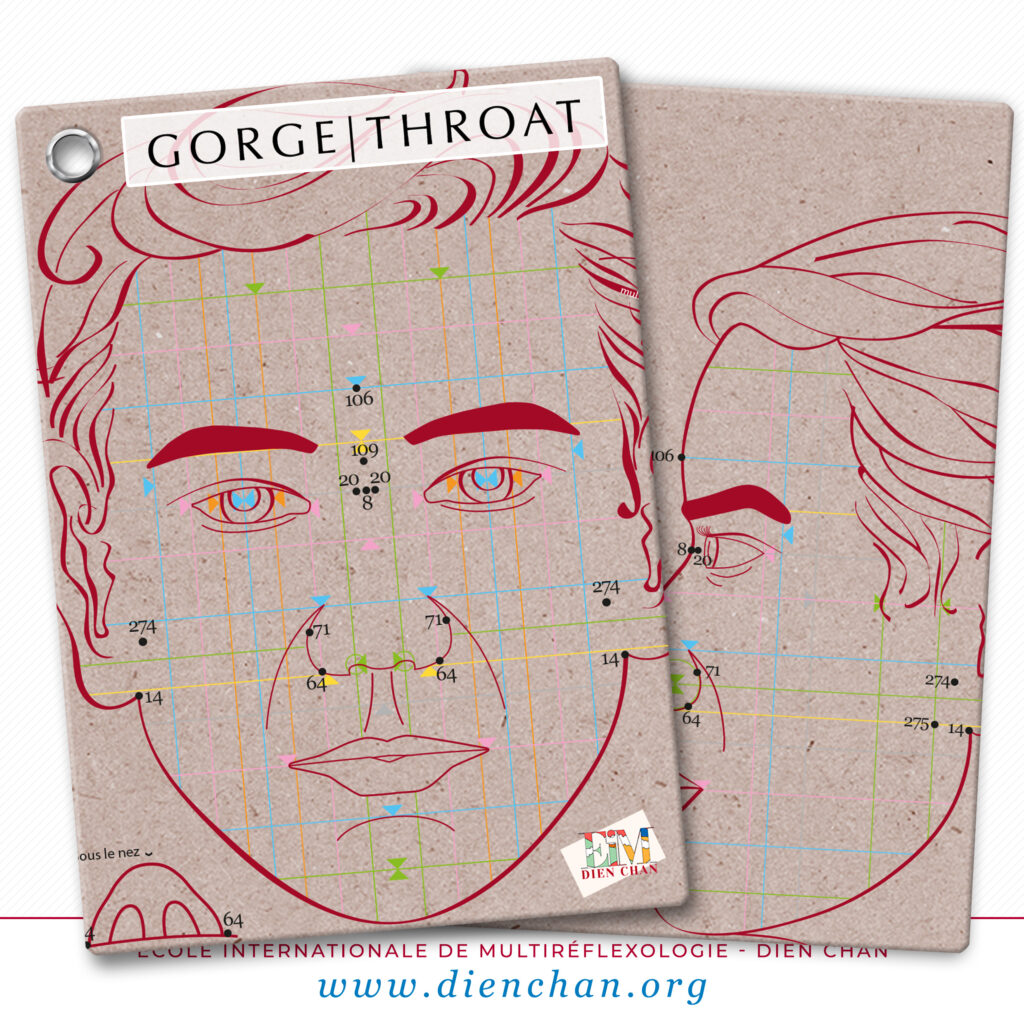
✔︎ To enhance the elasticity of the soft palate, we add the pair of bqc·points 16· 61·, which contributes to making the internal body structures more flexible.
At the end of the treatment, an ideal practice involves applying heating patches to the bqc·points that reacted the most (i.e., the most sensitive ones) to ensure a gentle but prolonged effect.
✔︎ It’s also interesting to test bqc·points related to the heart and lungs to promote oxygenation and blood circulation, such as: 38· 3· 13· 61· 432· 428· 561· 125· 60·.

✔︎ We will also stimulate bqc·points related to the Bladder meridian to release energy blockages in the neck: 87· 293· 156· 85· 21· 65· 191·
Once again, retain only the most sensitive bqc·points in this constellation.
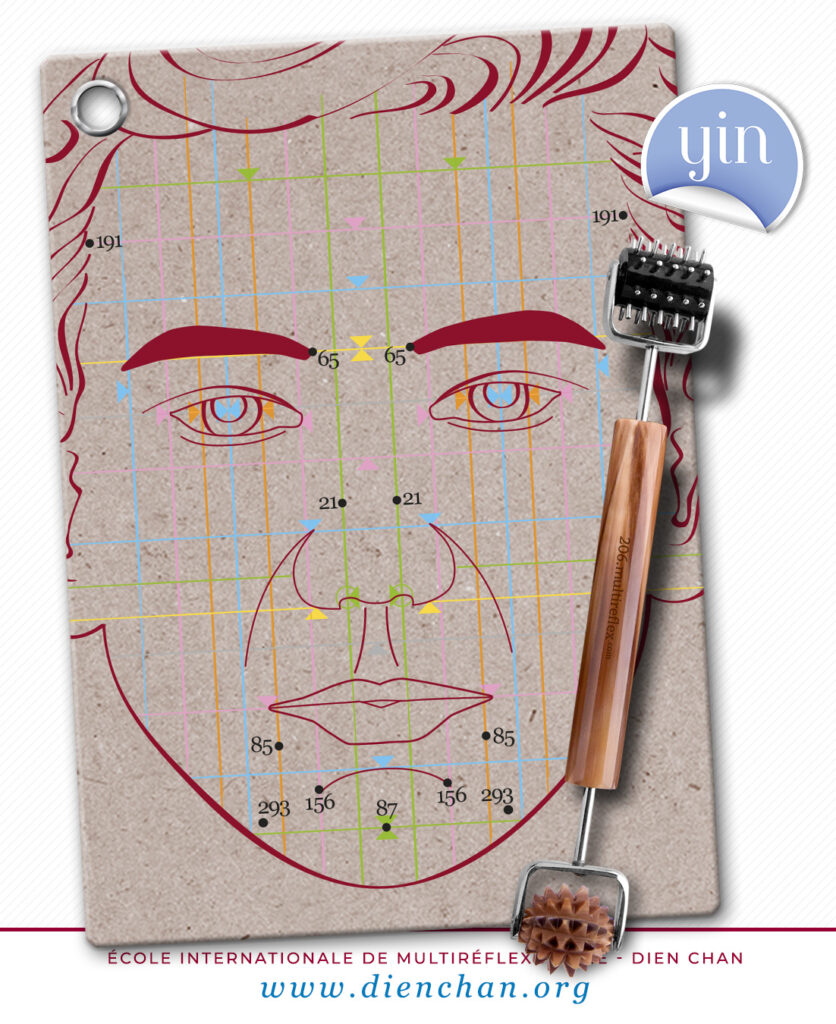
These proposals are just starting points, and it’s easier to create your own constellation using the Faceasit application. This allows you to select the most sensitive points that will ultimately compose your entirely personalized formula.
Check out the numerous example videos of using the Dien Chan app called Faceasit to understand how to structure a perfectly individualised formula.
4| The Prescription:
Treatment often involves exercises that the patient can perform at home, including the use of the Yin-yang roller nº206 to work on the reflex zones of the lungs and heart, following the reflex diagram of internal organs.
Also, recommend to the person to roll the Yin health ball nº433 between their hands before going to sleep. The palms of the hands are reflex zones of the respiratory system. By stimulating them in a yin manner, we contribute to preventing lung dryness while promoting the circulation of flows.
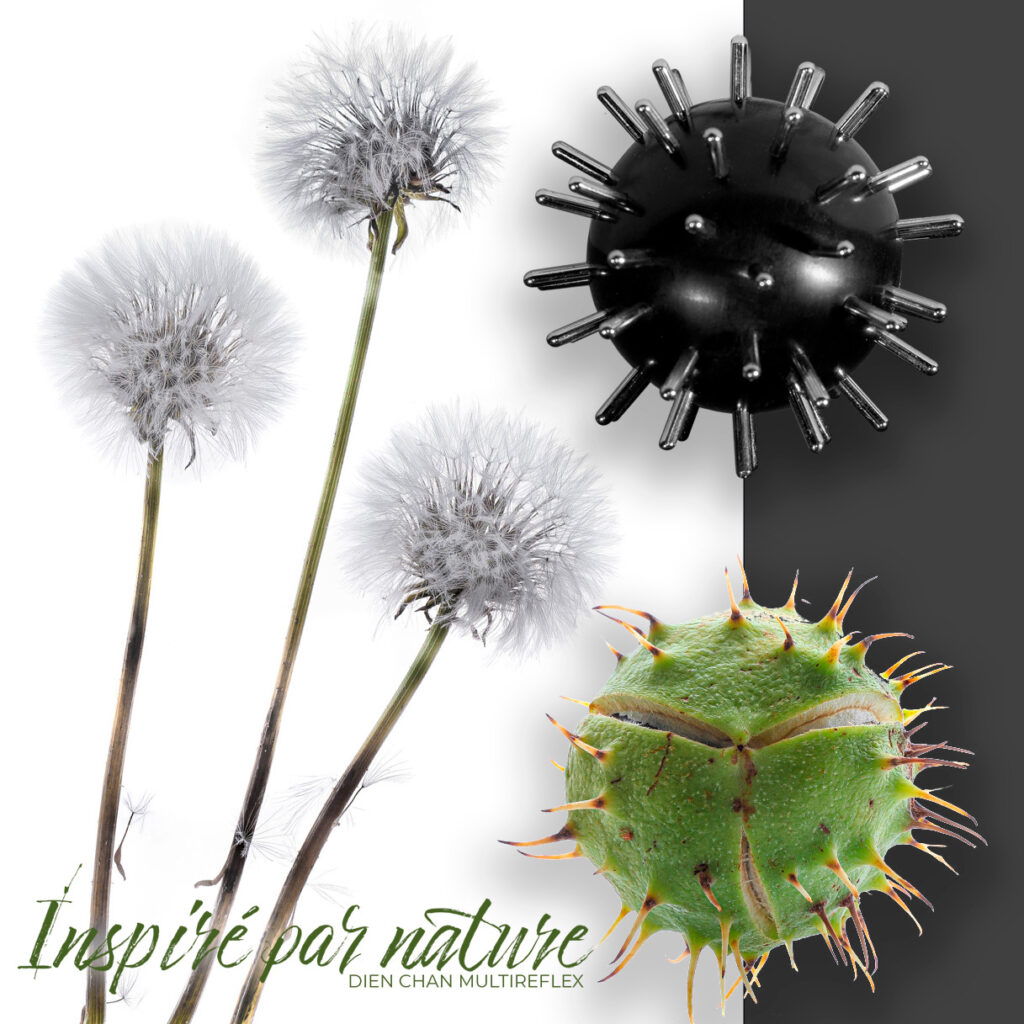
If the person is committed to addressing their issue, you can teach them how to use heating patches at bedtime (reference nº644 in the DienShop.com). It’s generally recommended to apply them to reflex zones of the throat (following the Penfield refrex diagram) and to the upper part of the lungs above the eyebrows, based on the internal organ reflection scheme.
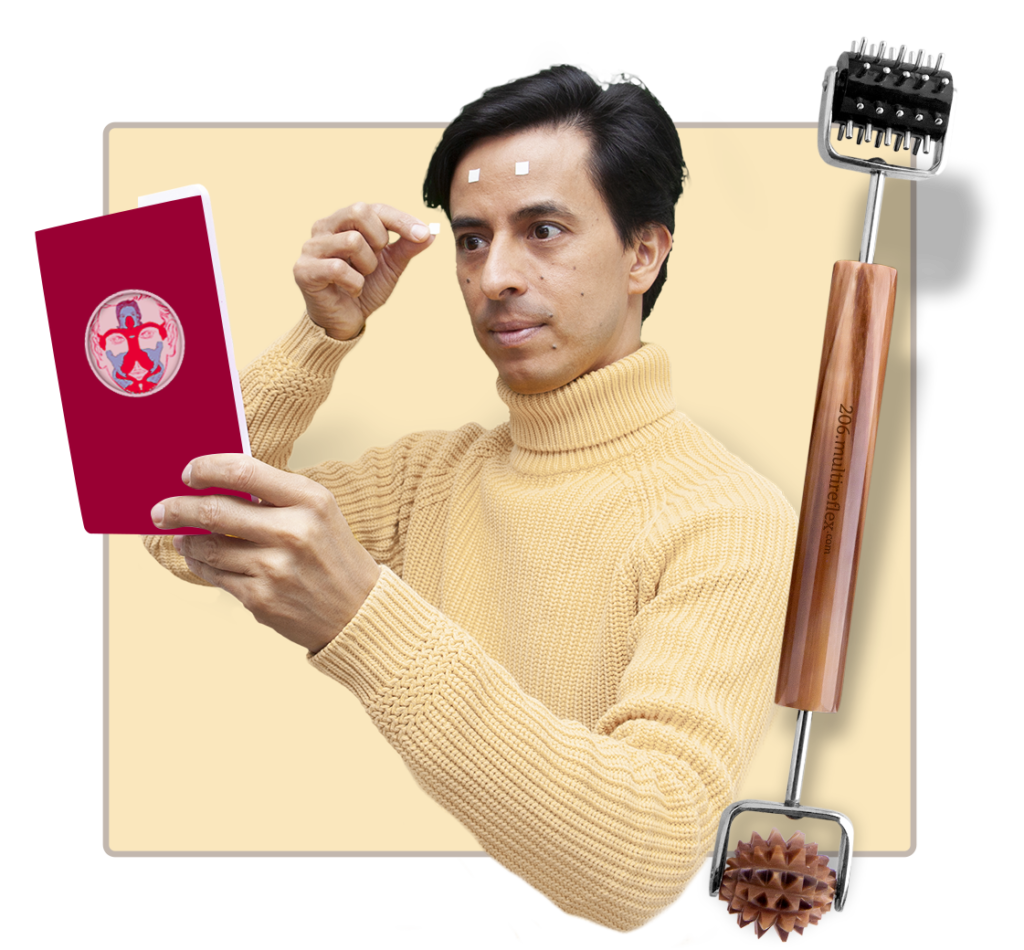
📌 However, it’s essential to avoid applying heating patches to the bqc·points 3· and 13· (related to the lungs) as menthol fumes could irritate the eyes.
The International School of Multireflexology – Dien Chan (ISMDC) is committed to guiding you in your journey to create personalised treatments. Our videos and articles on the DienChan blog are designed to boost your confidence.
Don’t forget to subscribe to the www.DienChan.tv channel to continue benefiting from the expertise of the Dien Chan experts.
Dienchannely yours,
— The Dien Chan Experts —

3 types of skin
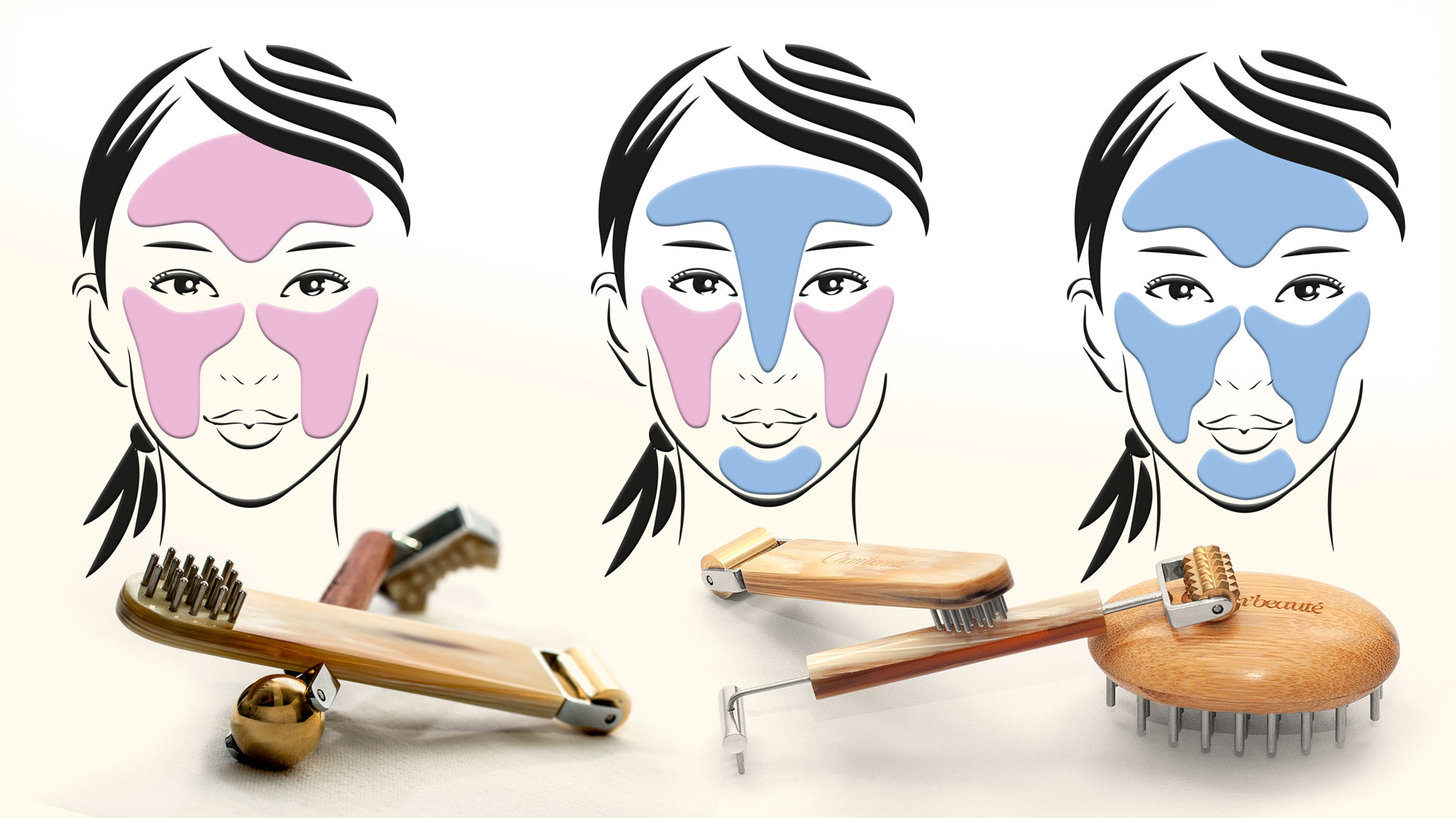
Let’s discover together how to naturally treat the three types of skin to restore elasticity, suppleness, and radiance. These Chan’beauté treatments will also teach you how to boost the active ingredients of your favorite cream.
Stress, pollution, sun exposure, and diet disrupt our body and make the skin more fragile. It then presents imperfections as it loses its elasticity and wrinkles appear.
📌 Note: This article is accompanied by the multireflex tool kit «Sublime your skin» including the booklet «3 skin types». You can acquire it at the end of the article or from the Dien Chan kits catalog. All booklets are also available independently from their collection.
What is a natural skincare?
The protocols of Chan’beauté not only allow you to prepare the ground by improving the microcirculation between the dermis and the epidermis, but they also activate the natural hydration of your skin.
In Chan’beauté, we gently stimulate the areas to be treated by alternating between a yang and yin effect.
We quickly restore balance and reach the origin of the problem.
For exceptional benefits and because our skin’s needs evolve with age, we present you a kit composed of four instruments designed to hydrate, purify, and illuminate your skin.
Some steps of this routine will become your daily beauty ritual.
All the treatments proposed in this article illustrate the «Sublime your skin» kit, which consists of several multireflex tools and the «3 types of skin» eBook.
The Dien Chan experts
Why are creams not so effective?
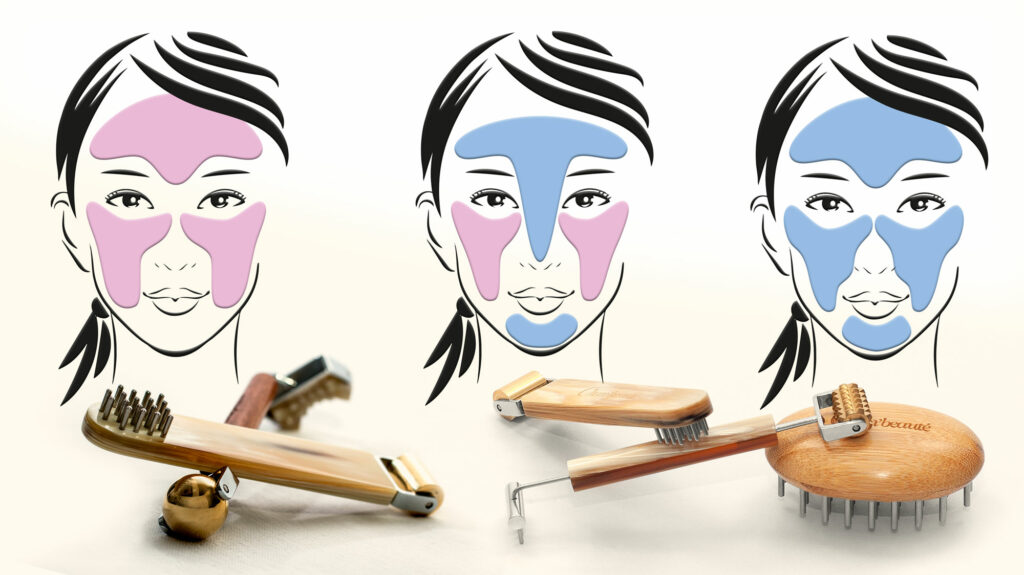
The multitude of cosmetics offered by brands does not make it easy when we don’t really know the characteristics of our skin. It is therefore necessary to be aware of our skin type in order to choose the right treatment, as there are three types: oily skin, dry skin, and combination skin.
To assist you, the experts in Dien Chan and Chan’beauté offer you a natural skincare routine tailored to each skin type.
Without preparation, all miracle products have little effect. However, treatments in Chan’beauté enhance the active ingredients of a quality cream, allowing you to use less and truly benefit from its properties. Without preparing the ground, the only benefit of an ointment is the massage when applying it.
Despite what the industry claims, our body is naturally capable of renewing its collagen. Although our synthesis capacity decreases with age, these Chan’beauté rituals inhibit the decline in production.
Lifestyle also plays an important role. Prolonged sun exposure, smoking, and poor diet contribute to oxidative processes that accelerate collagen degradation. The skin loses its suppleness, and wrinkles appear.
But how can you restore radiance and elasticity to your skin?
Over time, stress, and pollution, the skin becomes imbalanced and more fragile. It develops imperfections, loses its elasticity, and wrinkles appear.
The protocols of Chan’beauté not only help prepare the ground by improving microcirculation between the dermis and epidermis, but they also activate your skin’s natural hydration.
It’s just common sense! Gently stimulating the areas to be treated by alternating between yang and yin effects is our secret. To fully respect our skin, we cannot use cheap instruments and products that can be harmful. Such products strain our immune system, which then manifests itself on the epidermis. An imbalanced skin is more fragile and provides an ideal environment for imperfections.
Knowing your skin type allows you to identify the most appropriate skincare protocol to maintain stronger skin and achieve optimal balance.
Here are some Chan’beauté rituals adapted to different skin types:
For “Oily” Skin
The face tends to shine, and many pores are enlarged. Products designed for oily skin are often too aggressive and do not provide proper hydration. However, sebum protects the skin and gives it its suppleness by retaining water, but its production needs to be properly balanced.
Shine appears due to an imbalance in the sebaceous glands, which produce excessive sebum, specifically in the T-zone, including the forehead, nose, and chin. The pores become clogged, and the skin can’t breathe, leading to imperfections.
Only subtle mechanical actions will restore harmony. All multireflex tools are designed to provide precise and delicate care, deeply respecting the body and, in particular, the face.
After a gentle cleansing with a low-foaming product that does not contain excessive sulfated detergents (such as Sodium Lauryl Sulfate and Sodium Laureth Sulfate, even though the latter is allowed in organic products), you can enjoy the refreshing effects of the golden cylinder of the Beauty-brush No. 252.
When dealing with oily skin, we want to slightly cool the skin before stimulating microcirculation.
This initial yin effect helps gently close the pores, preparing the skin for the subsequent yang treatment.
Start by rolling the brush on the left temple, then move towards the nose, passing over the cheekbone, for 1 minute. Repeat the same motion on the right side, then on the nose, forehead, and chin.
Next, use the small yang ball of the Yin-yang roller nº206 on the same areas. This yang treatment is essential for enhancing the exchange between the three layers of the skin. The tiny spikes on the natural horn ball offer incredible possibilities without damaging the skin.
By gently stimulating the skin, we manage to bring the deep nutrients from the dermis to the epidermis, and we benefit from the natural antiseptic properties of the horn to preserve the skin’s microbiota.
With this flagship tool, we can firm the skin and boost collagen production.
The previous yin step, which slightly closed the pores, prevents the loss of nutrients to the skin’s surface. In oily skin, excess heat encourages sebum production, dilates the pores, and ultimately disrupts the skin’s ability to retain water.
These subtleties were discovered through our research and shared clinical experience among professionals.
By the way, when looking at the statistics of many commercial creams, it’s astonishing to see that their studies are often conducted on only about forty women!
To achieve the same yang effects on the eyebrow arch, nose, and facial contours, we prefer using the concave yang cylinder nº207, which is also made of genuine horn and adapts better to the facial curves.
As for the delicate skin around the eyes and the area where dark circles appear, we use the small brush with rounded rods of the Beauty-brush nº252.
It’s important not to exert pressure on the skin. Instead, gently and softly describe half-circles on these areas using a delicate and gentle kneading motion (not sweeping) for 30 seconds per under-eye circle.
After this yang step that restores skin exchanges, we will distribute these rich nutrients through yin stimulations.
Start by using the roller with soft mini–rods of the Yin-yang roller nº206 on all the previously treated areas.
Always use a gentle and comfortable motion, similar to that of a makeup artist, without applying pressure or marking the skin. About fifty back-and-forth movements per area will be necessary.
Only authentic multireflex tools are capable of stimulating the skin in a yin way without damaging it, which means dispersing, hydrating, and refreshing.
After this tender moment for our skin and face, we can apply a high-quality cream. By awakening the lymphatic and blood exchanges, the penetration index of the product is increased, and its active ingredients are energized. Therefore, less product needs to be used.
To finish off in the clouds, glide the smooth golden sphere over your eyelids and fully enjoy this moment of relaxation.
For “dry” skin
You may experience tightness and discomfort when you smile or make facial expressions. Dry skin is prone to redness, premature wrinkles, and may have areas with rough patches.
In fact, your skin appears dull due to lack of hydration, it is thin, and its pores are tight.
We will therefore restore its radiance and elasticity by boosting its natural hydration and allowing it to properly absorb the high-quality cream applied afterwards.
It goes without saying that aggressive treatments (micro-needling, abrasion, etc.) are extremely dangerous and should be avoided.
Even though your skin is dry, we need to mobilize the deep nutrients before starting the Chan’beauté protocol. Fortunately, the yang effects of multireflex tools have this extraordinary ability.
We must revitalize the functions of the hypodermis without heating or stressing the epidermis.
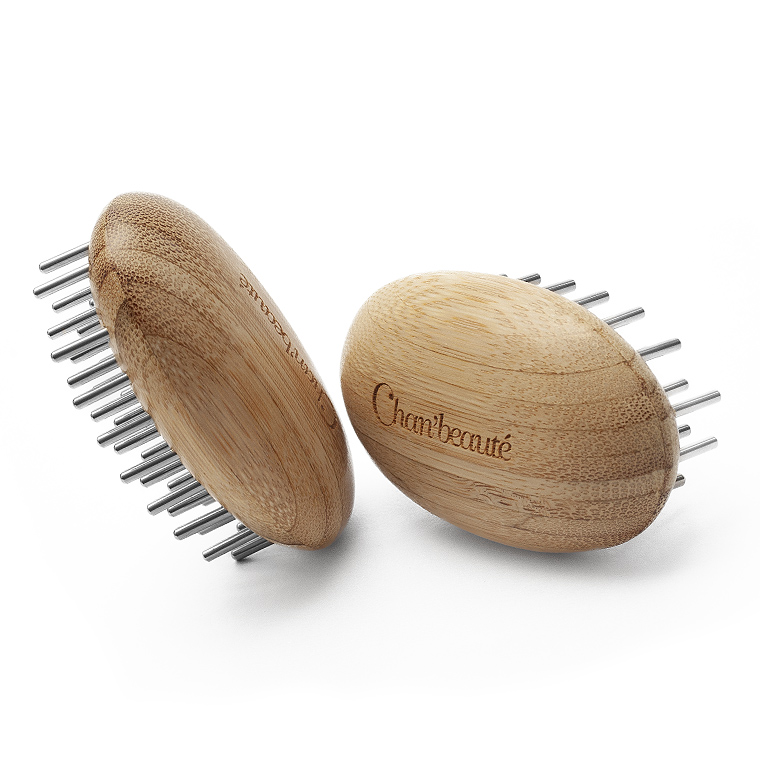
— Preparation for dry skin:
That’s why, when dealing with dry skin, we will prefer to start with the Beauty Ova bar.
Perform gentle sweeping motions from the bottom to the top of the face. Do about 7 sweeps per area and repeat from the beginning at least three times.
The sensation should be pleasant, and don’t hesitate to lightly touch the skin to avoid displacing it.
Focus on the nasolabial fold and vertical lines around the corners of the mouth if you feel they are too pronounced.
Yes, it may seem trivial, but you will see for yourself that besides being extremely pleasant, your skin regains its radiance and becomes more supple. Common sense confirms that pleasant and gentle words reach much deeper than aggressive remarks.
Well, it’s the same for our cells!
This slightly yang first step allows us to use the small horn ball with its spikes. Roll the Yin-yang roller nº206 on the most wrinkled areas only (crow’s feet, frown lines, etc.).
— For more delicate regions, we prefer the mini brush of the Beauty-brush nº252 (upper lip, under-eye circles).
The motion should be gentle, never causing the skin to turn red. Only tenderness goes deep.
Draw comma shapes to knead the skin without pulling it; 1 minute per area will be enough.
— For the contours such as the brow bone, jawline, and chin, use the roller of the tool nº207. Its genuine horn concave cylinder also provides gentle yang effects.
Horn has the particularity of having natural antiseptic properties that, unlike plastic, do not spread bacteria but respect the skin flora.
Now that we have mobilized the deep nutrients and stimulated the blood and lymphatic microcirculation, we are going to distribute all these vital fluids throughout the epidermis.
To do this, use the other end of the Yin-yang roller nº206. The yin effect of its soft mini-rods allows for a subtle dispersion of the emerging hydration. You will experience a pleasantly refreshing sensation beneath the skin.
With this yin roller, go over each area for 1 minute.
For smaller areas of the face, use the golden cylinder of the Beauty-brush nº252. Its yin effects provide a refreshing and, most importantly, reviving effect on the natural hydration of the epidermis by distributing the nutrients mobilized in the previous steps.
After this cocooning session, we can apply our favorite cream. By reactivating lymphatic and blood exchanges, the penetration index of the product increases and energizes its active ingredients.
To finish off on a cloud, roll the golden sphere over your eyelids and fully enjoy this moment of relaxation.
For “mixed” skin
Combination skin is generally oily from the chin to the forehead, with shine and enlarged pores on the nose. However, the rest of the face tends to be drier.
This is due to the non-uniform distribution of sebum on the face, resulting in changes in the composition of the skin flora in different areas. These “boundaries” are responsible for excess sebum (blackheads), clogged or enlarged pores, and roughness.
Estheticians are increasingly faced with combination skin, which is also slightly more complex to treat. We need to differentiate between dry regions such as the cheeks and the T-zone, which includes the chin, forehead, and nose.
We will therefore need to combine the two treatments and treat the T-zone as oily skin and the rest as dry skin. The sebum-overloaded surface can vary, and we will adjust the treatment to each individual’s face.
On a face with combination skin, it is important not to use jade or synthetic instruments that can spread bacteria. Only the biological properties of genuine horn are respectful of the skin flora balance. Beware of the inelegant black tools that are not made of buffalo horn, but of plastic.
In order to rebalance the distribution of sebum and achieve beautiful skin, here is a Chan’beauté ritual that we recommend on a daily basis for the first 3 weeks. Once harmony is restored, you can choose to continue with the steps that work best for you.
— Treatment for the T-zone
We start by cooling down this oilier zone before reactivating microcirculation. This initial yin effect allows the pores to gently close before proceeding with a yang stimulation.
Firstly, roll horizontally on the forehead for about 2 minutes. If the golden cylinder has become too warm, cool it down by dipping it in cold water.
Now move it over the nose, performing about thirty back-and-forth movements, and finish on the chin horizontally for 1 minute. The chin is the reflex zone of the bladder (see the Dien Chan diagrams of reflexion), and we like to stimulate it to promote fluid exchange within the body through the functions of the Bladder meridian.
Next, use the small yang ball of Yin-yang roller nº206 on the same areas, applying gentle pressure. This work with yang effects is essential for enhancing interactions between the three layers of the skin. It is the small spikes of its natural horn ball that offer us incredible possibilities.
— To enjoy these same yang effects on the eyebrow arch, nose, and chin curves, we prefer the yang concave cylinder nº207, which is also made of genuine horn and better adapts to the contours.
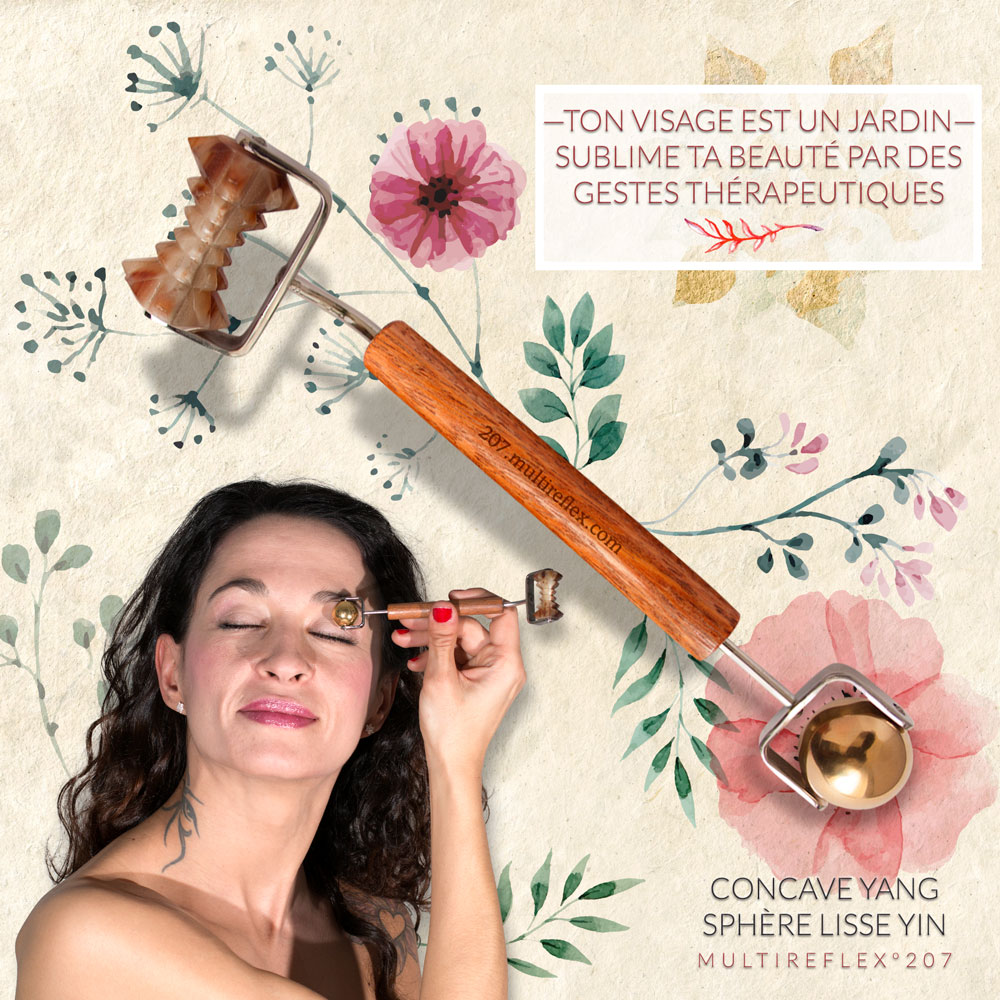
Yang concave cylinder in natural horn and yin smooth golden sphere.
— To work on the delicate skin around the eyes, use the small brush with rounded mini rods of the Beauty-brush nº252 and gently draw half circles without sweeping, but kneading for 30 seconds per eye.
This way, we manage to bring forth the deep nutrients from the dermis to the epidermis and benefit from the antiseptic properties of the horn to protect the skin’s flora.
In oily areas, excessive heat dilates the pores and causes water loss. However, it is thanks to the prior yin stimulations that we prevent the escape of nutrients to the surface. We will thus restore the skin’s normal elasticity and increase natural collagen production.
After restoring the skin exchanges, we will distribute these rich nutrients through yin stimulations.
Start with the roller equipped with soft mini rods of the Yin-yang roller nº206 on all the previously treated areas.
Without pressing or wrinkling the skin, make about fifty back-and-forth movements in each region. Only high-quality multireflex tools are capable of stimulating in a yin manner without damaging the skin, which means dispersing, hydrating, and refreshing.
— Working on the dry areas:
Start with the Beauty Ova bar by gently sweeping along the natural curves of the face. Aim for about 7 sweeps per area and repeat from the beginning at least three times.
The sensation should be pleasant, and be sure to glide over the skin without moving it. Focus on the nasolabial fold and vertically along the corners of the mouth if you feel those wrinkles are too pronounced.
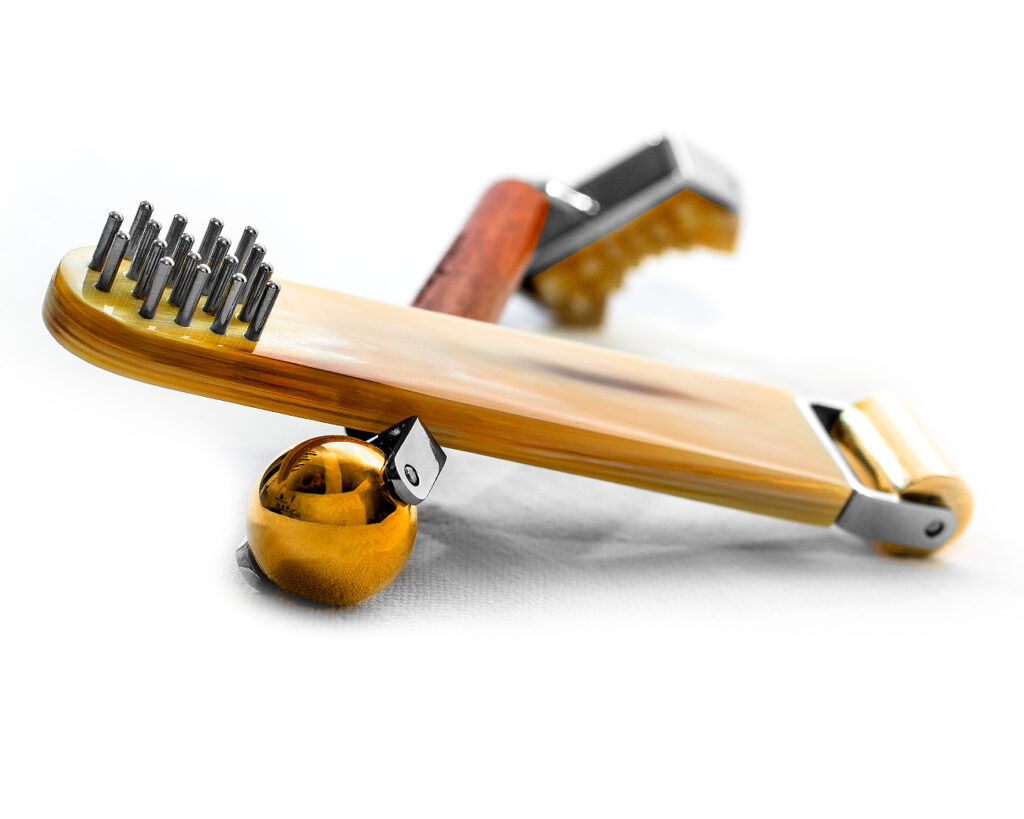
Concave-roller smooth-sphere nº207
This should be extremely enjoyable for your skin to regain radiance and suppleness. This slightly yang first step allows us to then use the yang side of the Yin-yang roller nº206. Roll its small horn ball with spikes on the most wrinkled areas only (crow’s feet, mouth area, etc.).
— For smaller and delicate areas, we prefer the mini brush of the Beauty-brush nº252 with a gentle motion, never causing the skin to redden, drawing small arcs for 1 minute per area.
— For contours such as the eyebrows, jawline, and chin, opt for the concave cylinder of the tool nº207. Horn material has biological properties that, unlike plastic, will not spread bacteria but instead respect the skin’s flora.
— Distribution of Nutrients
Now, use the yin tip of the Yin-yang roller nº206 to distribute all these vital fluids through the epidermis and subtly disperse the emerging hydration. A pleasantly refreshing sensation appears beneath the skin.
› Roll over each area for 1 minute with this yin roller.
For smaller areas of the face, we recommend using the golden cylinder of the Beauty-brush, as its yin effects refresh and trigger the natural hydration of the epidermis by distributing the nutrients mobilized by the previous steps.
After this pampering, we can apply our favorite cream. By activating lymphatic and blood circulation, the penetration index of the product increases and enhances its active ingredients.
To finish beautifully, pass the copper sphere over your eyelids and fully enjoy this moment of relaxation.
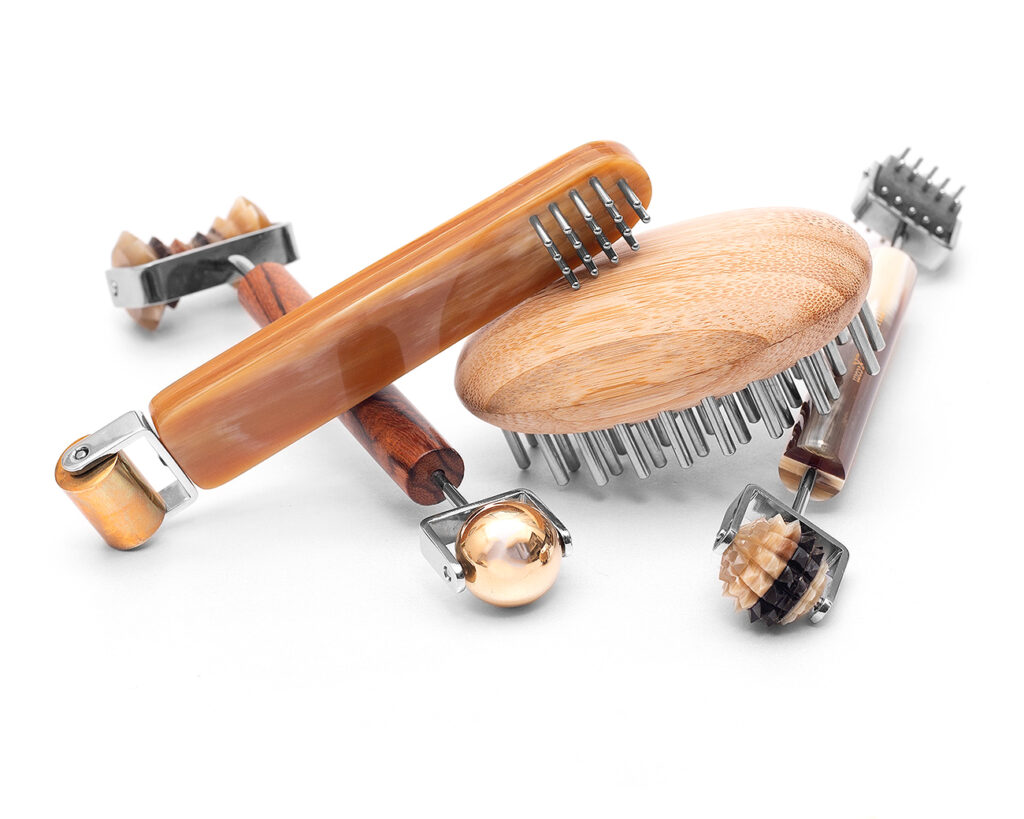
All the treatments presented in this article showcase the «Sublime your skin» kit, which consists of several multireflex tools. The booklet «3 types of skin» is included with the kit.
If some tools are currently missing, the kit may not be available. However, you can purchase each available instrument separately using the individual buttons.
① The Dien Chan app called Faceasit allows you to create personalized formulas. You can find detailed videos here dienchan.Faceasit.com
② The interactive Chan’beauté magazine is an app dedicated to natural aesthetics and therapeutic well-being. You can find more details here chanbeaute.pro
The booklet
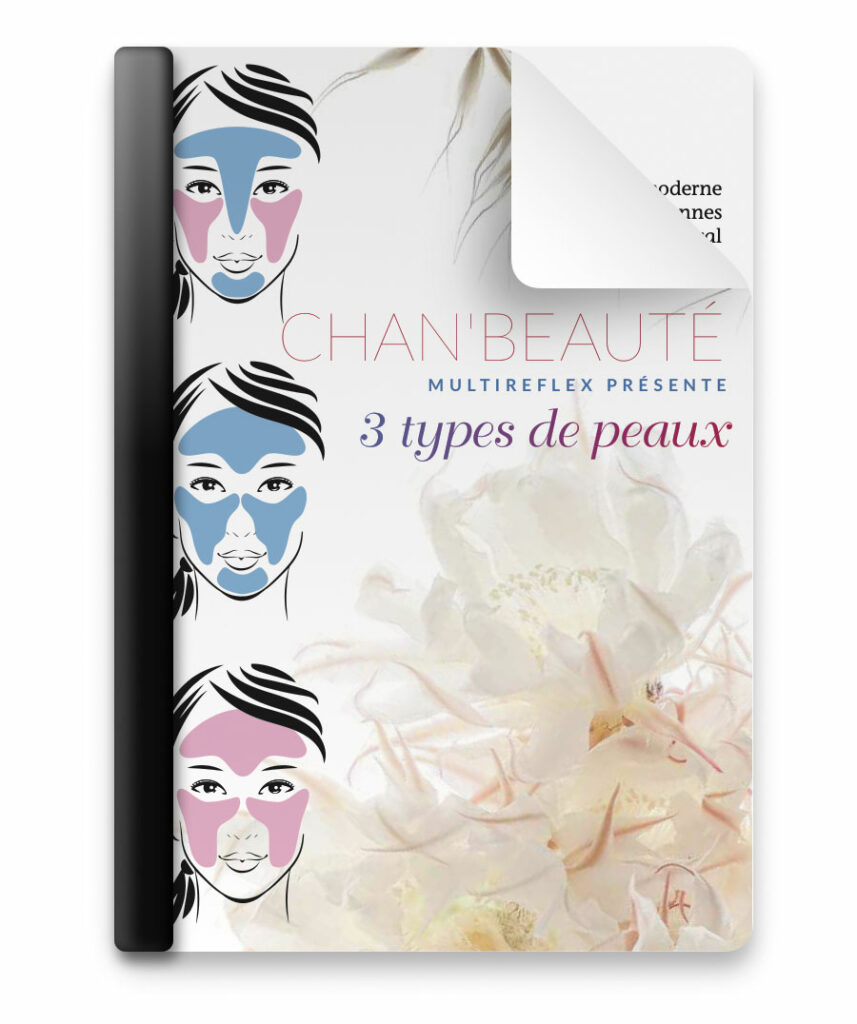
If you only want the booklet “Managing the 3 types of skin in Chan’beauté” in PDF format, use this button. All booklets are available from the Multireflex.pro collection.
Essential Chan❜beauté kit
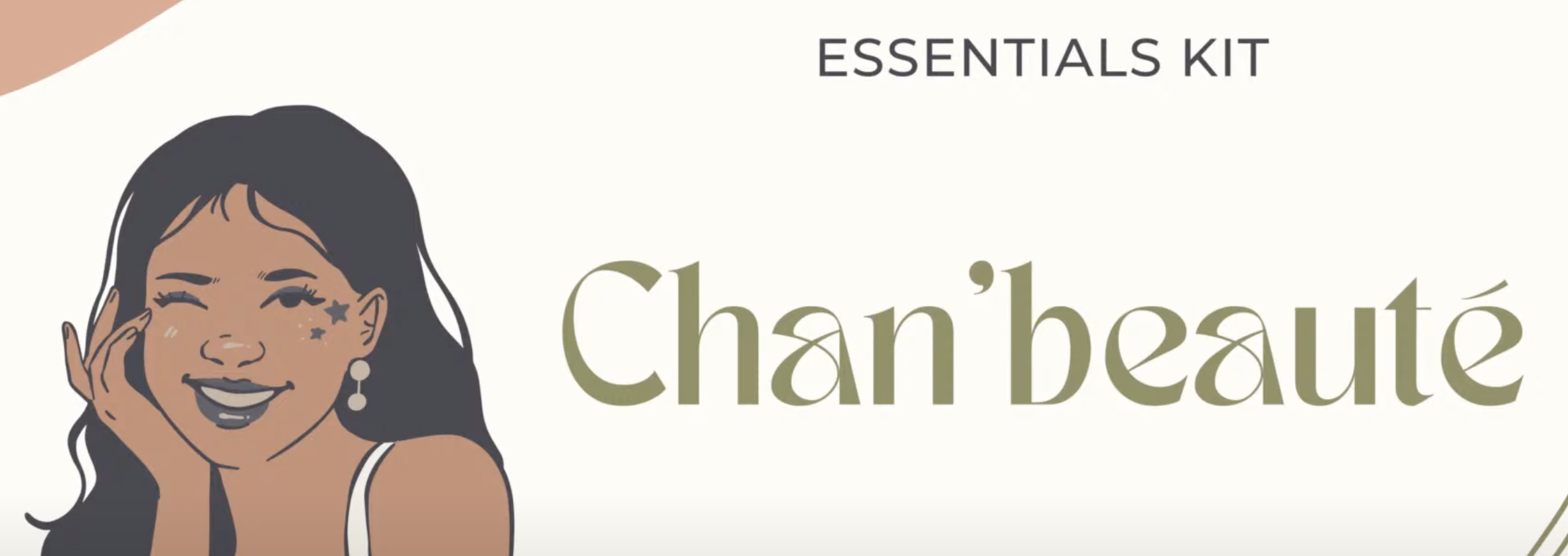
Take advantage of this fantastic presentation by our therapeutic alchemist, Erica!
Facial reflexology Dien Chan empowering beauty.
🎓 If you want to learn more about facial reflexology and Dien Chan, check out the school with our self care course, Introduction to Facial Reflexology.
You will find free resources with ALL ACCESS programs and certification courses for PROFESSIONALS. https://www.reflexology.school
★ The starter kit is the main focus for this course and is included in the course fee!
🚩 Purchase your multireflex tools at https://www.multreflexusa.com/
The «Penfield» diagram of reflexion
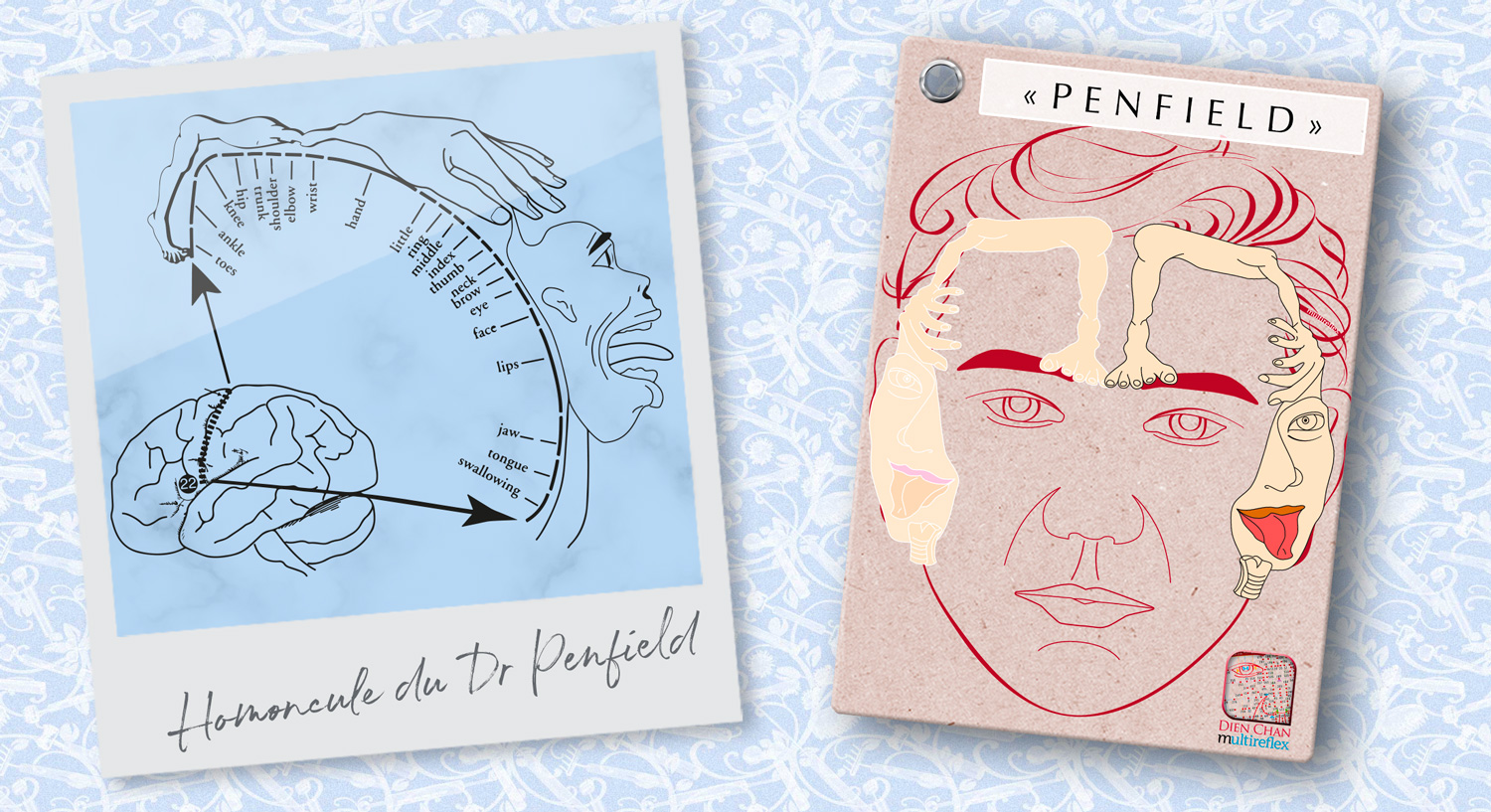
🇫🇷 ARTICLE EN FRANÇAIS | ARTÍCULO EN ESPAÑOL 🇪🇸
This is in fact the first diagram of Dien Chan. While Professor Bùi Quôc Châu had established his map of specific points, he was interested in the work of Dr Nogier who introduced a pattern of reflection lodged in the ear.
At first, he even thought that his bqc·point 0· belonged to auriculotherapy.
But why is this called the “Penfield”?
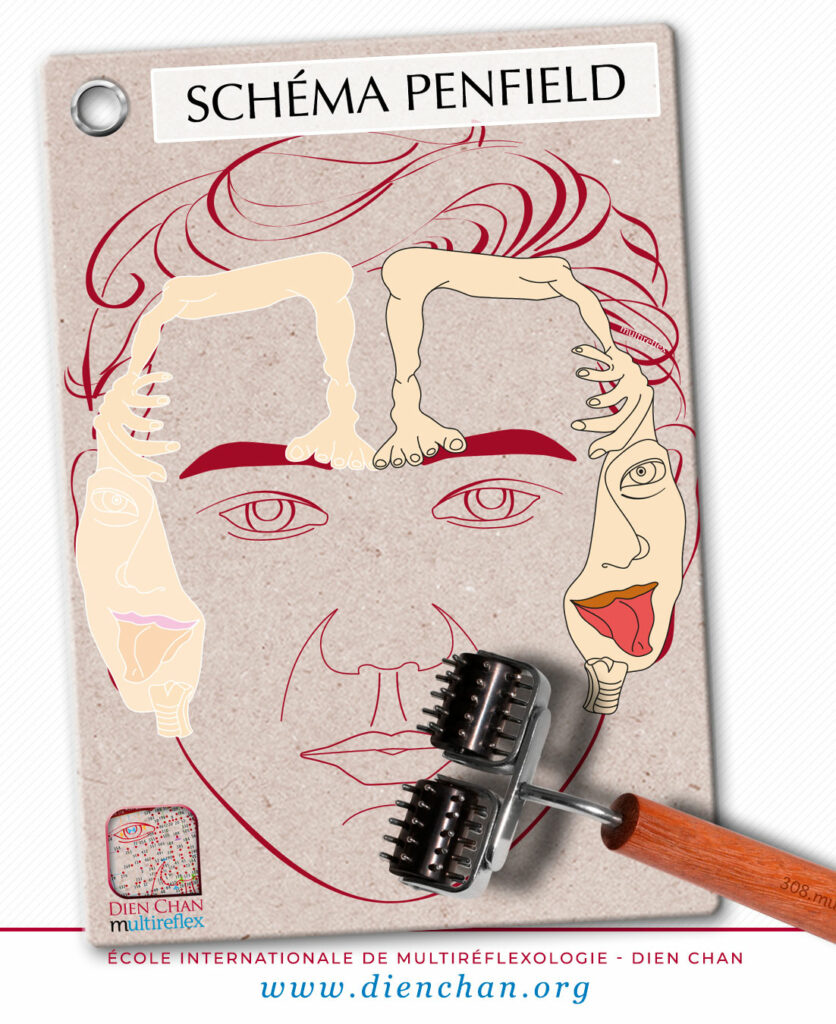
I gave it that name after learning the story of its discovery. Initially, Professor Bùi Quôc Châu numbered the diagrams in the order of publication. But because we don’t always publish them in the same order and also use numbers to name bqc·points and multireflex tools, I started giving names to the diagrams.
It really pleased Professor Bùi Quôc Châu and his sons.
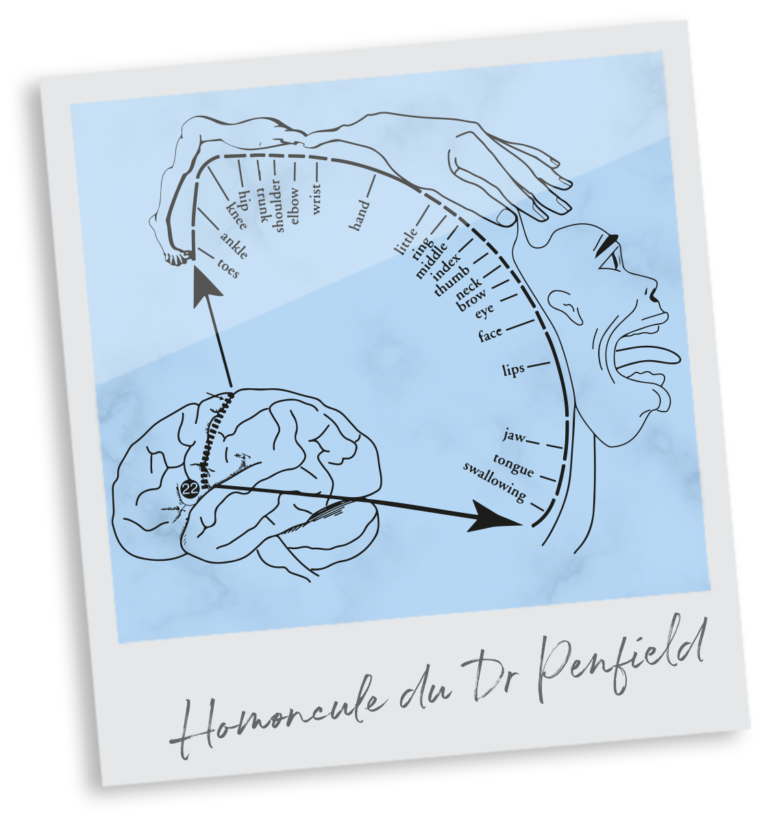
Those which refer to a story bear the name of the artist or the scientist: “Rodin” for the diagram which recalls the position of the famous sculpture of the “Thinker of Rodin”.
But it was by consulting a scientific journal that referred to Dr Wilder Penfield’s (1891-1976) research into the brain that Professor Châu had enlightenment.
Dr Penfield’s diagram of the homunculus represents regions of the human body corresponding to specific stimuli from the cerebral cortex.
Professor Châu observed this diagram while mentally projecting it on his Dien Chan point map.
He remembered that in geometry we define a surface with at least three points. And the first 3 bqc·points came to his mind; they were 34· 16· and 14·.
Positioning Dr Penfield’s homunculus on the face, bqc·point 34· coincides with the foot of the diagram, bqc·point 16· with the eye and 14· with the throat.
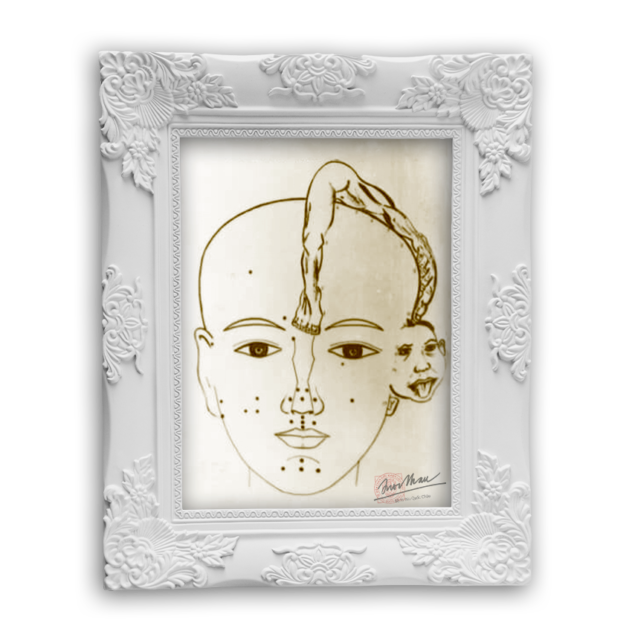
Let us remember that at that time Professor Bùi Quôc Châu only had his map and detailed records of the effects and indications for each bqc·point discovered.
He perfectly remembered having used bqc·point 34· to treat numerous pains in the feet, bqc·point 16· for vision problems and obviously all ENT diseases treated with bqc·point 14· and reflex zone around the earlobe.
It matched so well that he went back to his notes to check if other points on the map confirmed the coincidence.
Yes, yes, yes! Incredible, bqc·points such as 197· were already being used for knee disorders. Pr Bùi Quôc Châu was already successfully working the surface of the top of the forehead and which is now described by the hip in Penfield’s diagram. And so on…
This first pattern of reflection therefore opened the immense door to multireflexology.
He thus understood that he could join —following the anatomical coherence— the points of his map in constellations to describe diagrams of reflection.
It was when he saw the full-body outline on his face that he was able to draw the “Red man” sometimes referred to as Mr Yang. He completed it with the diagram of the “Blue Lady” or also called “Madame Yin”.
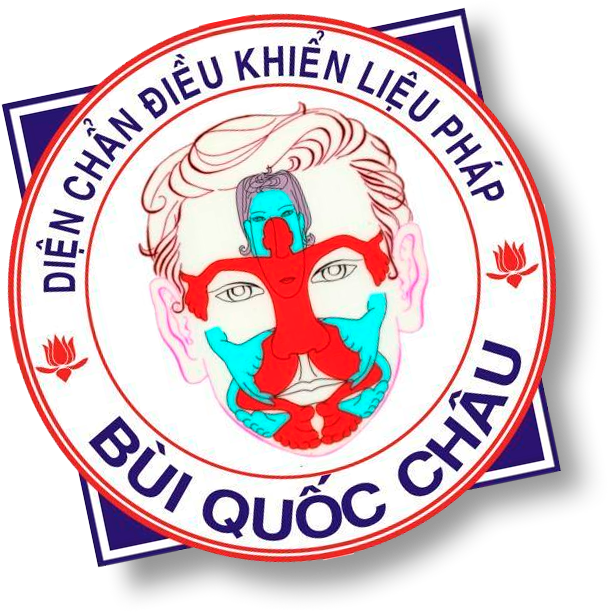
This board actually embodies two combined diagrams and became his logo illustrating not only two representations of the body, but also the two forces in equilibrium.
The story of the discovery is important
It allows us to better understand the method, which is why we explain it in our educations. This makes it easier to study each diagram, to understand them well in order to know how to project them correctly on any face.
The goal of the experts in Dien Chan is to help every practitioner to become a care designer. This means that taking each curriculum module, you learn to personalise each treatment to the patient.
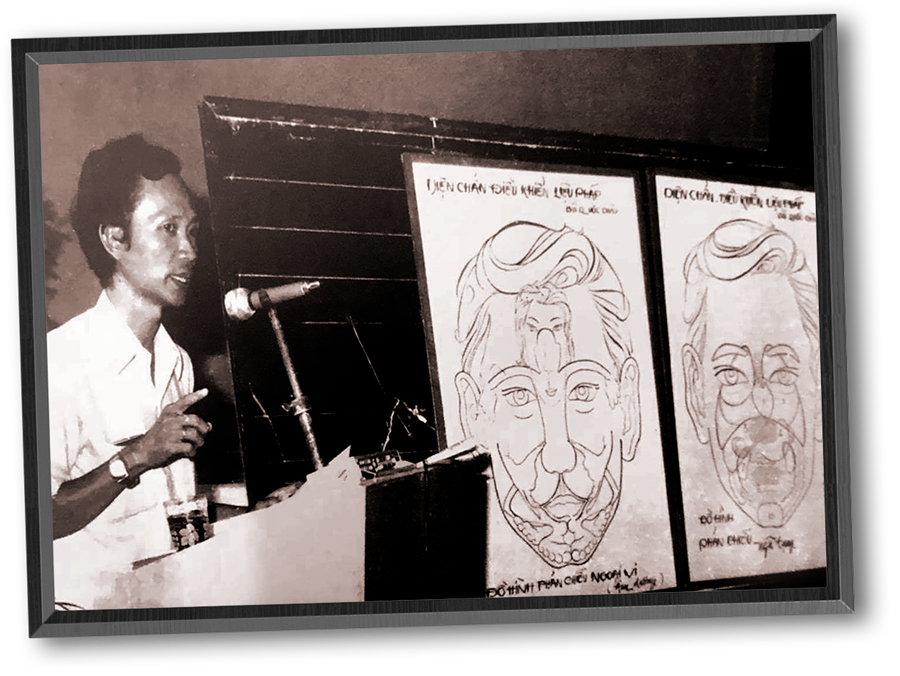
Let us not limit ourselves to the nomenclature of the pathology which is borrowed from Western medicine, but rather learn to “translate” into therapeutic gestures the narration of the disorder offered to us by the person treated.
Both Dien Chan and Chan❜beauté are very effective if we follow a holistic care plan.
That is, we must be aware of:
- The general condition of the person before starting.
- Then work locally on the part of the body concerned to find out which effects (yin or yang) is best suited to the description of the disorder.
- Then continue on the facial reflex zones of this same anatomy by combining the diagrams of Dien Chan.
- Consolidate our treatment with bqc·points composing the most appropriate formula.
- And finally, teach the person how to maintain the treatment by practising self-care maintenance exercises.
- Whether it’s the 12 morning massages or the use of a multireflex tool, our clients must not remain passive between sessions.
- 🇨🇦🇺🇸 North America multireflex tools and training: www.multireflexusa.com
Dienchanely yours,
_patryck aguilar
